Forums
- Forums
- Axis And Allies Forum
- General Discussion
- Aviation News
Aviation News
Post a reply
- Go to Previous topic
- Go to Next topic
- Go to Welcome
- Go to Introduce Yourself
- Go to General Discussion
- Go to Screenshots, Images and Videos
- Go to Off topic
- Go to Works in Progress
- Go to Skinning Tips / Tutorials
- Go to Skin Requests
- Go to IJAAF Library
- Go to Luftwaffe Library
- Go to RAF Library
- Go to USAAF / USN Library
- Go to Misc Library
- Go to The Ops Room
- Go to Made in Germany
- Go to Campaigns and Missions
- Go to Works in Progress
- Go to Juri's Air-Raid Shelter
- Go to Campaigns and Missions
- Go to Works in Progress
- Go to Skinpacks
- Go to External Projects Discussion
- Go to Books & Resources
-
 Main AdminBEAUFORT, S.C. (AFNS) --
Main AdminBEAUFORT, S.C. (AFNS) --
In a historic moment for aviation, the F-22 Raptor Demonstration Team flew alongside the U.S. Navy Blue Angels in a rare formation over the skies of Beaufort, South Carolina, April 25.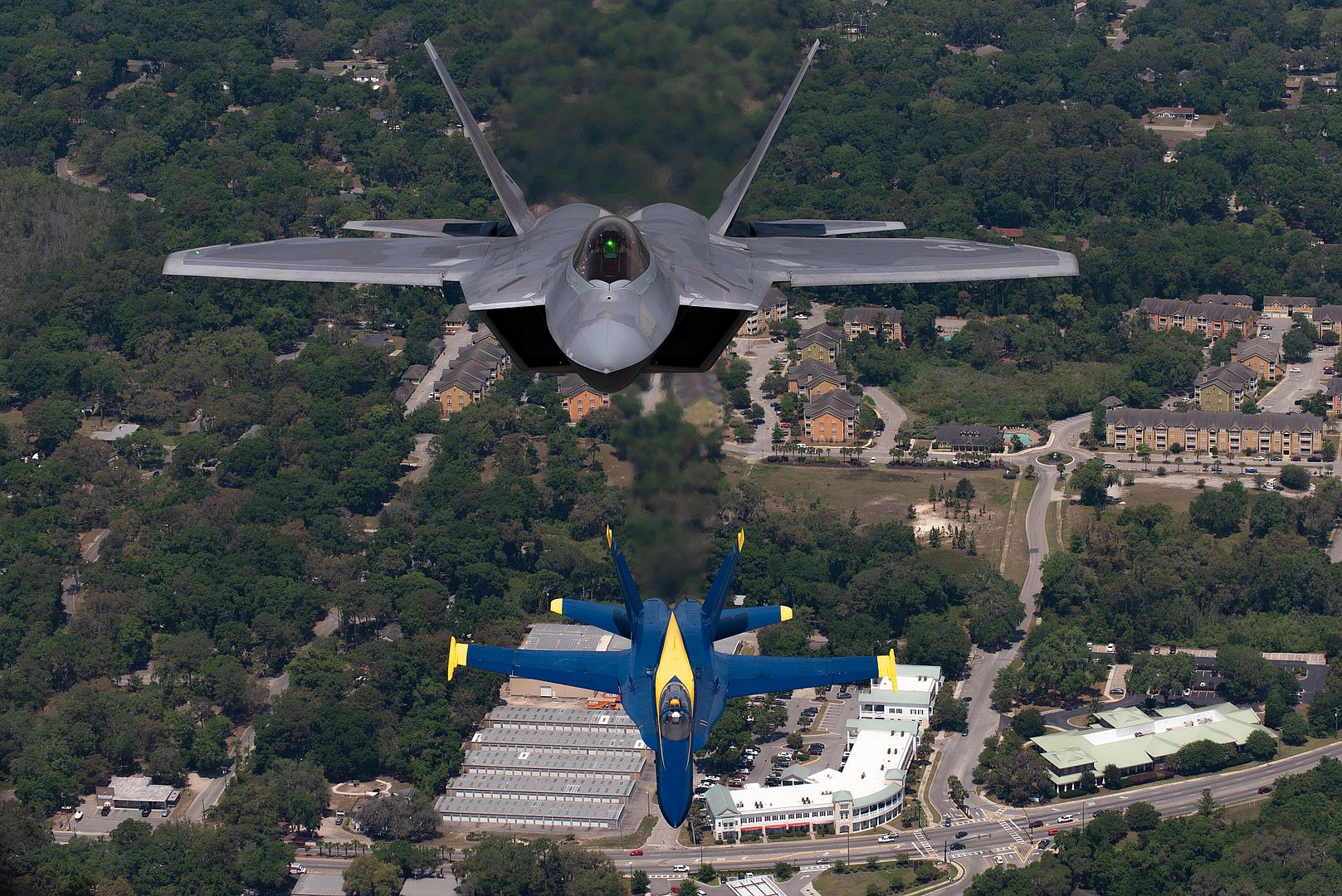
The two aerial demonstration teams joined together during the Marine Corps Air Station Beaufort air show to showcase never-before-seen images of both the F-22 Raptor and F/A-18 Hornet.
?This formation represents more than just the seven jets captured on camera,? said Maj. Paul Lopez, F-22 Raptor Demonstration Team commander. ?It is a representation of the professionalism and excellence that every service member portrays in the United States military.?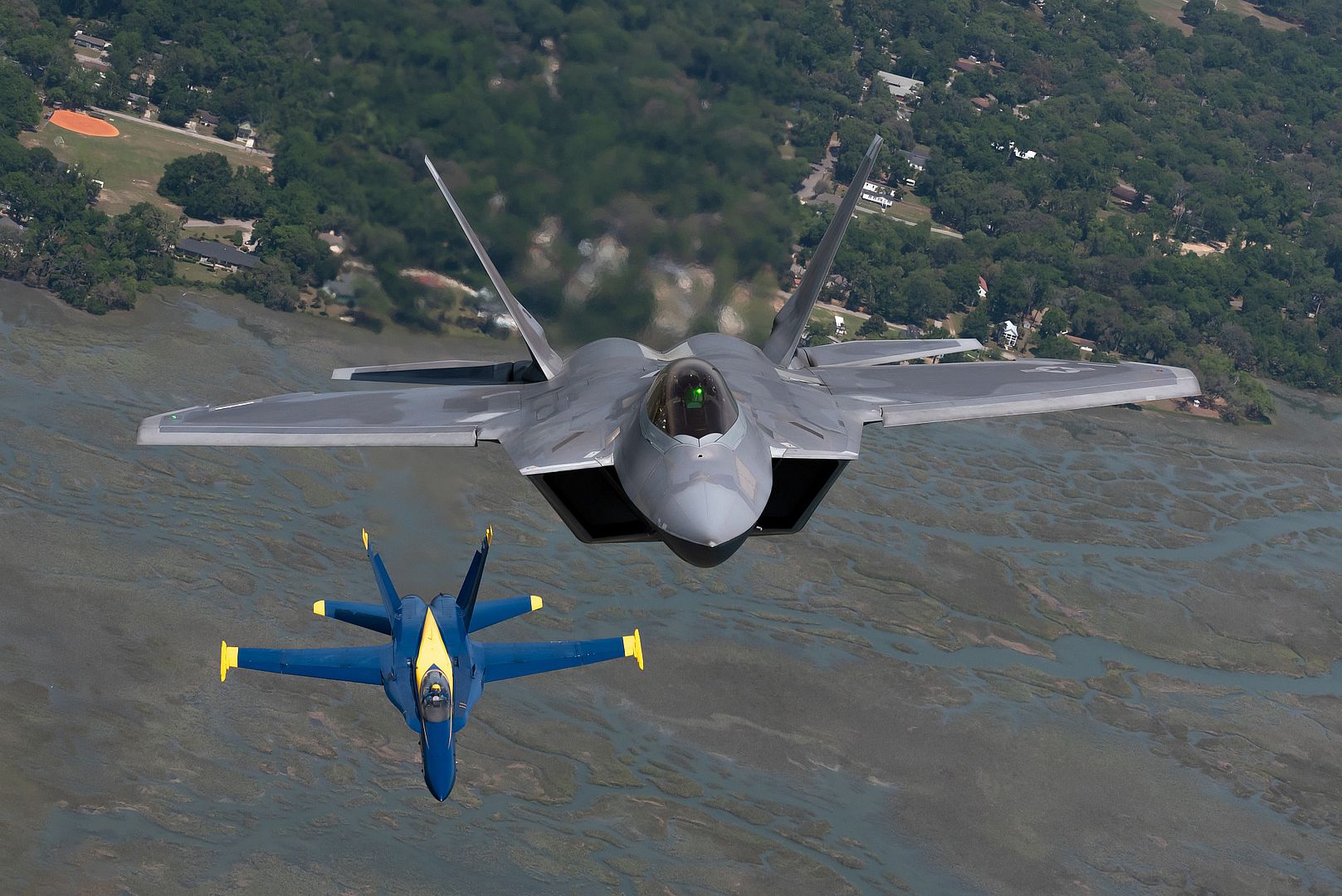
The concept for this unique formation began as an idea between two former squadron-mates who both share a passion for aviation. Douglas Glover, 3G Aviation Media co-founder and the mastermind behind coordinating this dissimilar formation, reached out to U.S. Navy Maj. Jeff Mullins, Blue Angels #4, about the possibility of getting the two teams together.
?What started as a ?what if? between myself and Blue Angels #4, took months and months of back and forth, matching aircraft capabilities to the images requested by both teams,? Glover said. ?All of the hard work, the late nights and the elevated levels of stress briefing a room full of top-tier pilots was worth it when the ramp dropped behind the photoship, followed closely by the F-22 and the Blue Angels? diamond.?
Seeing the world?s premier fifth-generation fighter alongside the iconic blue and gold of the U.S. Navy Blue Angels is a sight many wanted to see but never thought would happen. The end result, seven fighter jets from two separate services flying over the skies of South Carolina, involved a joint effort that will be cherished for years to come.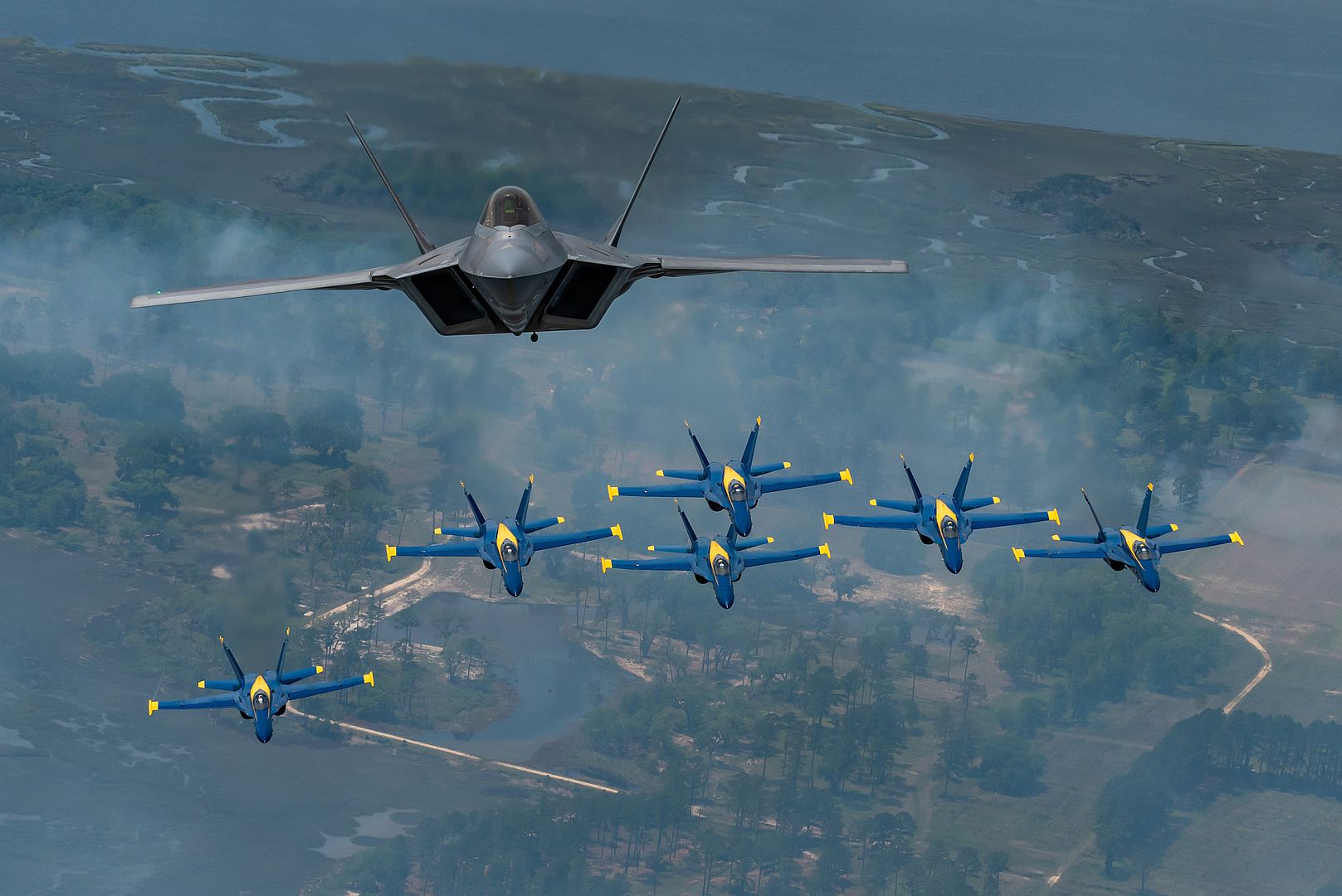
?I would like to thank the maintainers that fix, service and maintain the aircraft. They are vital to our mission and making a flight like this happen,? Lopez said. ?Flying alongside the Blue Angels was an incredible experience and seeing it all from the cockpit of the F-22 is something I will never forget.?
(U.S. Air Force photo's by 2nd Lt. Samuel Eckholm)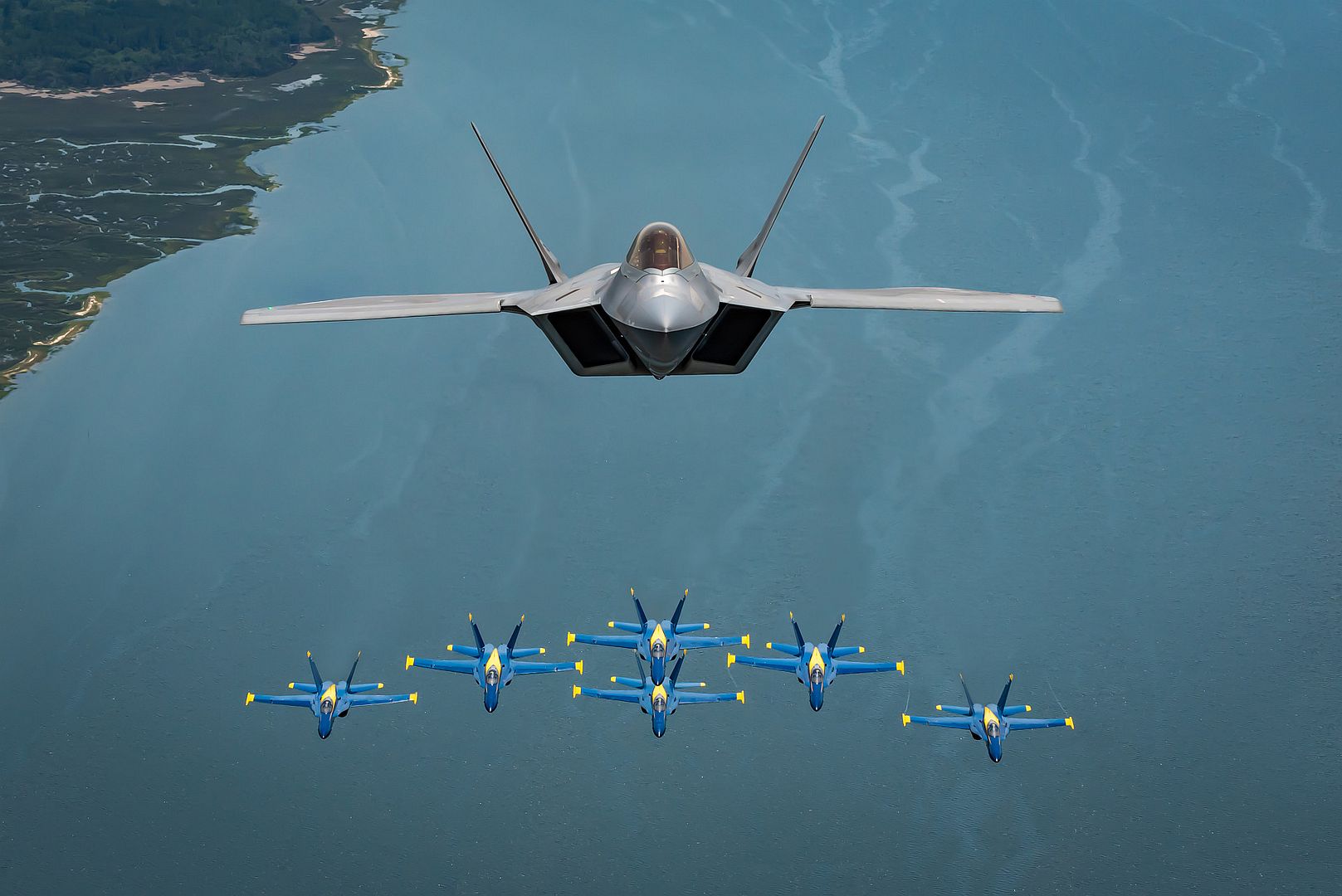
A U.S. Air Force F-15E Strike Eagles assigned to the 492nd Fighter Squadron at RAF Lakenheath, England, approaches a KC-135 Stratotanker assigned to the 351st Air Refueling Squadron at RAF Mildenhall, England, for refueling during a training mission over the English Channel, May 2, 2019. The KC-135 can carry up to 150,000 pounds of fuel to transfer to other aircraft. (U.S. Air Force photo by Airman 1st Class Joseph Barron)
A U.S. Air Force F-15E Strike Eagle assigned to the 492nd Fighter Squadron at RAF Lakenheath, England, departs after refueling with a KC-135 Stratotanker assigned to the 351st Air Refueling Squadron at RAF Mildenhall, England, over the English Channel, May 2, 2019. The KC-135 Stratotanker has provided aerial refueling ability for the Air Force for more than 60 years. (U.S. Air Force photo by Airman 1st Class Joseph Barron)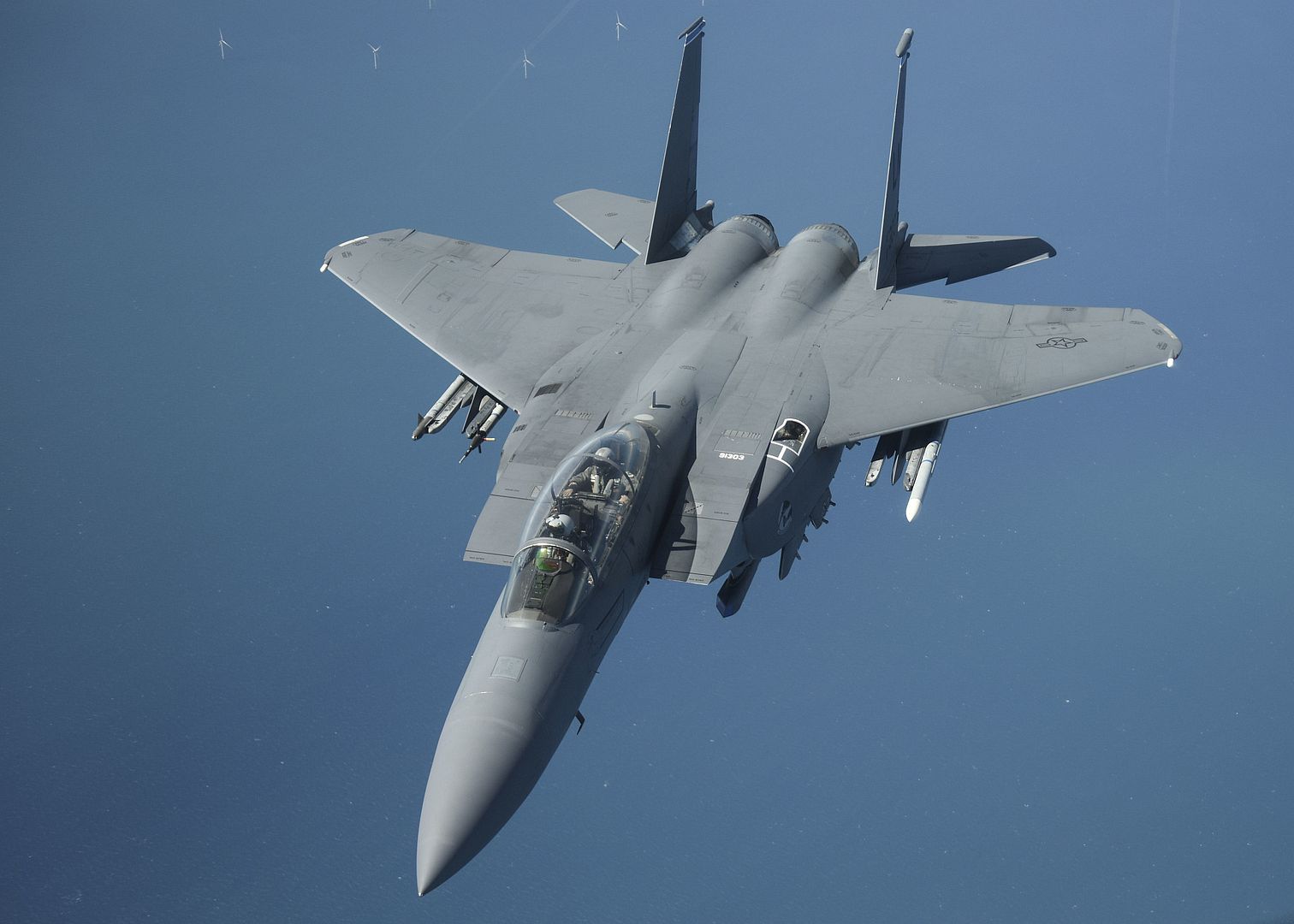
An F-35A taxis during a combat exercise at Hill Air Force Base, Utah, May 1, 2019. The active duty 388th Fighter Wing and Reserve 419th Fighter Wing, along with F-16 units from Holloman AFB, New Mexico, and Kunsan Air Base, Korea, conducted an integrated combat exercise where maintainers were tasked to continually provide ready aircraft and pilots took off in waves to simulate a large force engagement with enemy aircraft. (U.S. Air Force photo by R. Nial Bradshaw)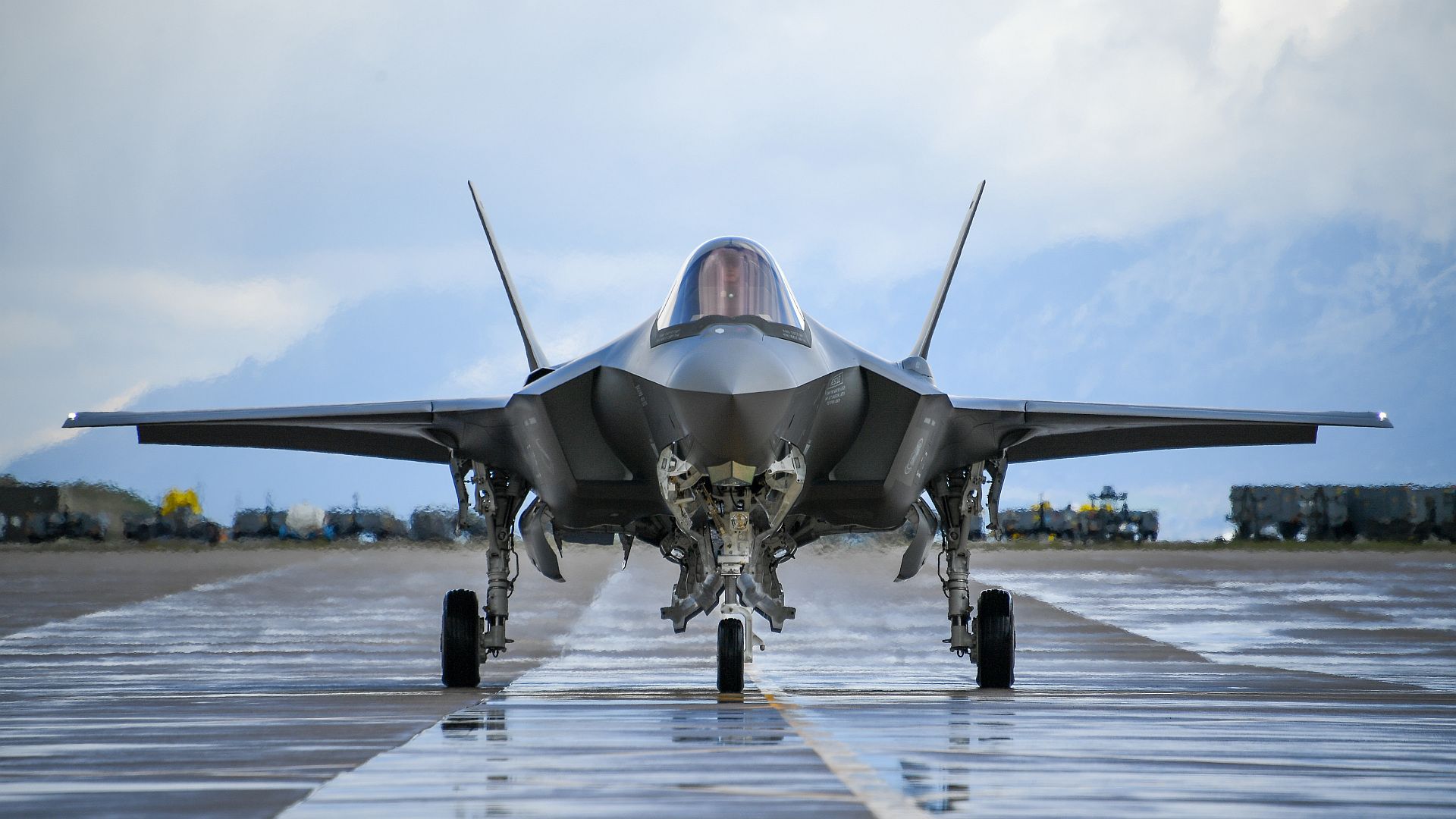
An F-35A takes off during a combat exercise at Hill Air Force Base, Utah, May 1, 2019. The active duty 388th Fighter Wing and Reserve 419th Fighter Wing, along with F-16 units from Holloman AFB, New Mexico, and Kunsan Air Base, Korea, conducted an integrated combat exercise where maintainers were tasked to continually provide ready aircraft and pilots took off in waves to simulate a large force engagement with enemy aircraft. (U.S. Air Force photo by R. Nial Bradshaw)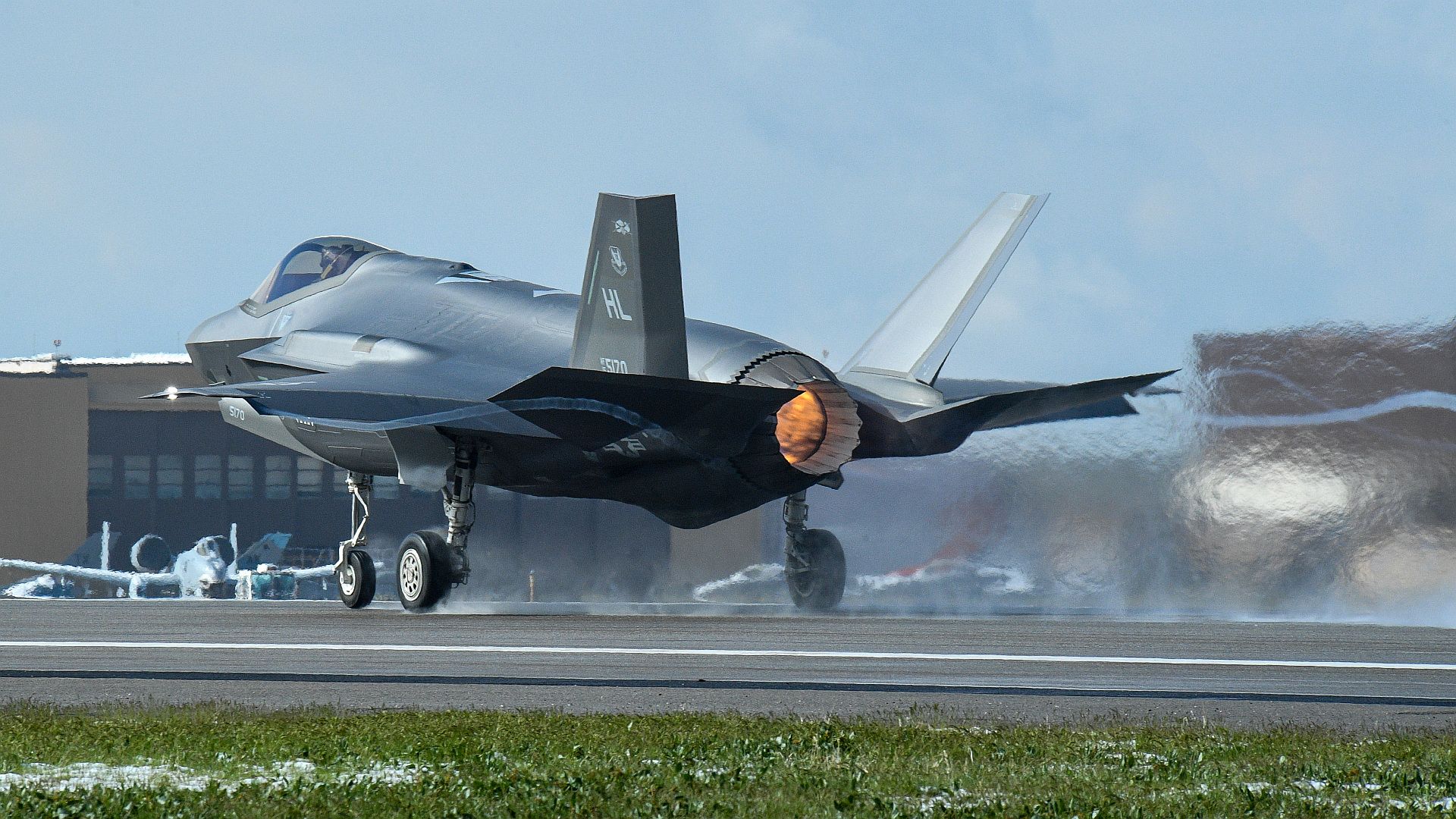
F-16s taxi during a combat exercise at Hill Air Force Base, Utah, May 1, 2019. The active duty 388th Fighter Wing and Reserve 419th Fighter Wing, along with F-16 units from Holloman AFB, New Mexico, and Kunsan Air Base, Korea, conducted an integrated combat exercise where maintainers were tasked to continually provide ready aircraft and pilots took off in waves to simulate a large force engagement with enemy aircraft. (U.S. Air Force photo by R. Nial Bradshaw)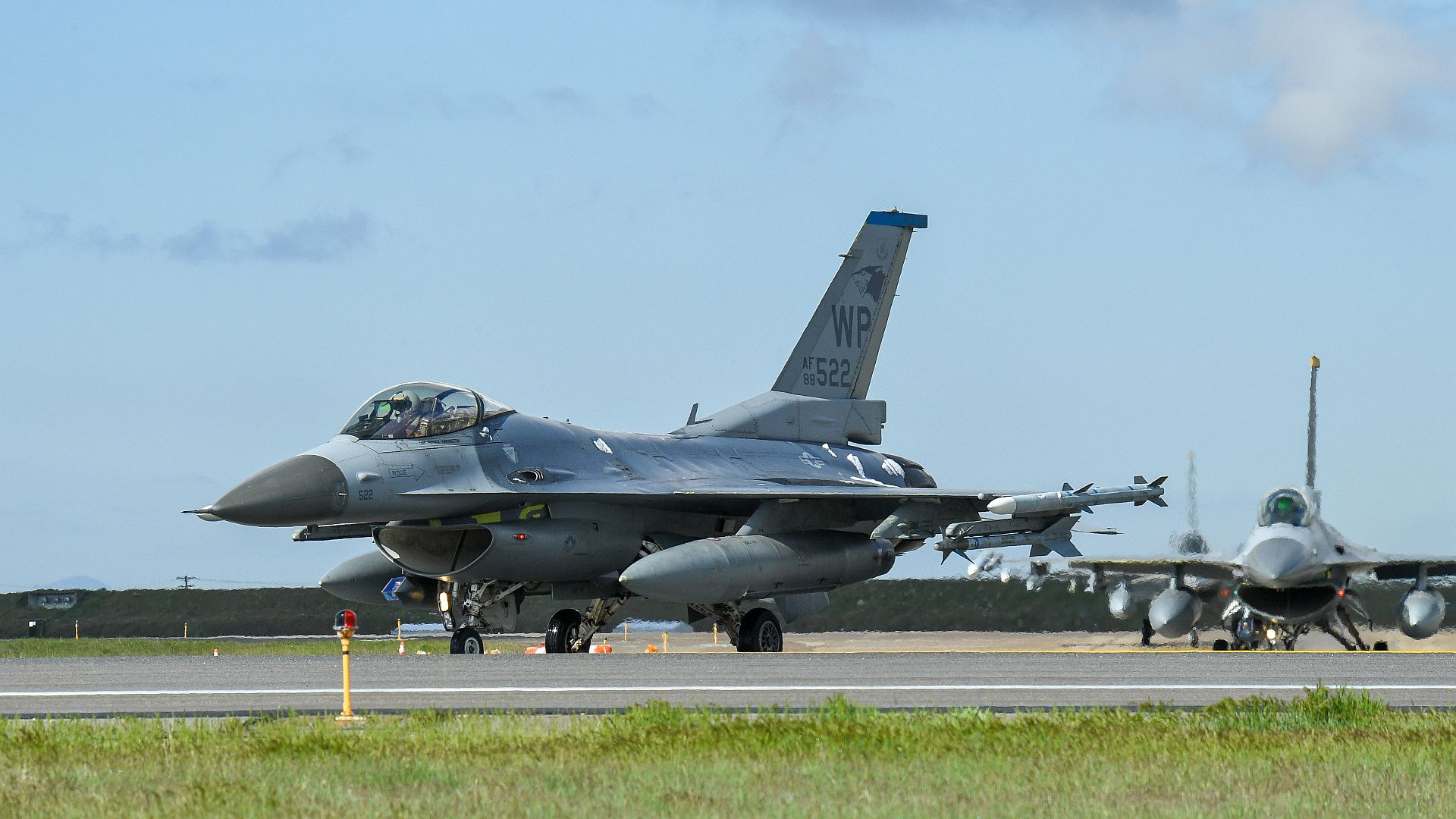
ATLANTIC OCEAN (May 2, 2019) A T-45C Goshawk training aircraft assigned to Training Air Wing (TW) 2 conducts flight ops aboard the aircraft carrier USS Dwight D. Eisenhower (CVN 69). Ike is underway in the Atlantic Ocean conducting carrier qualifications while in the basic phase of the Optimized Fleet Response Plan. (U.S. Navy photo by Mass Communication Specialist Seaman Sawyer Haskins)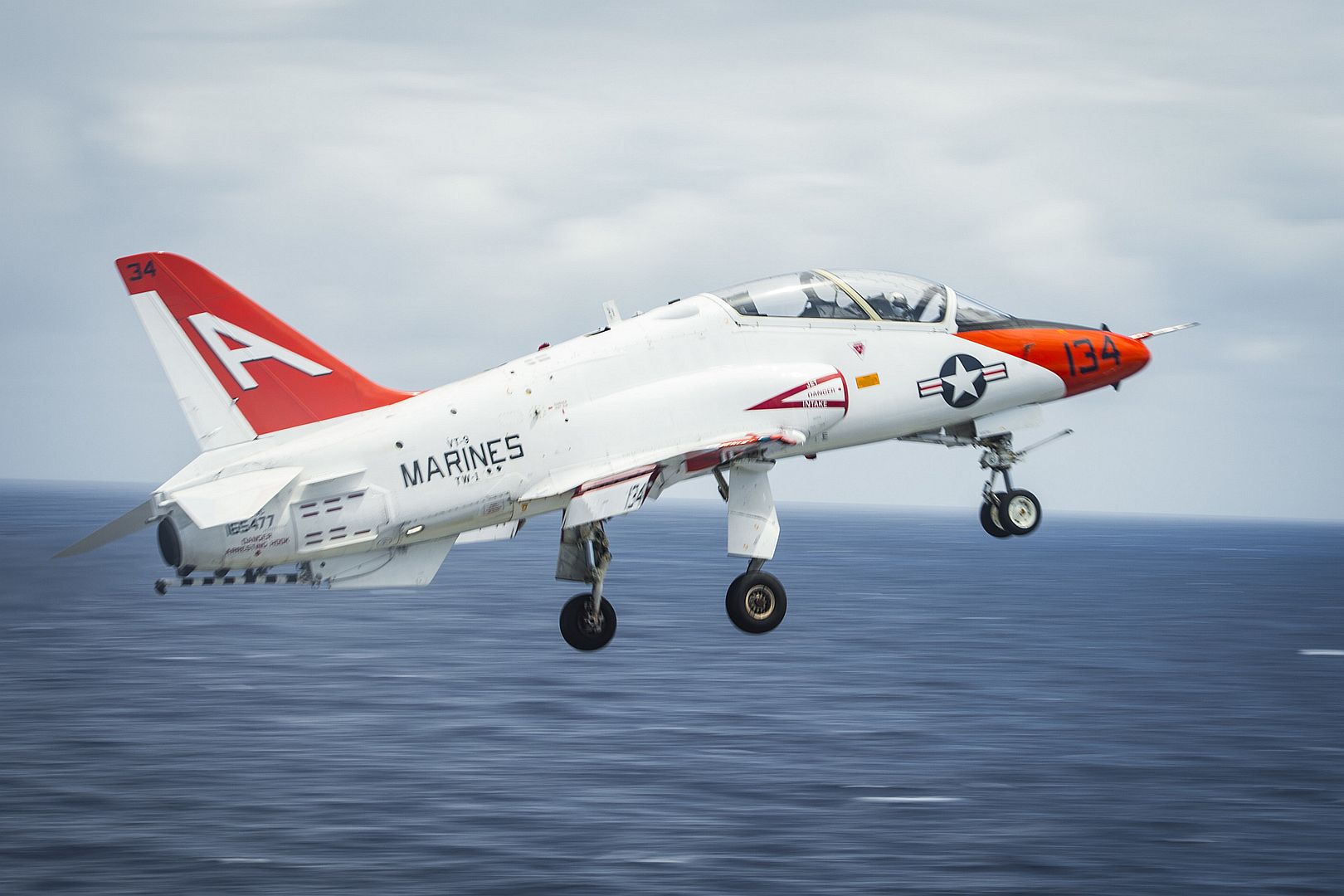
Typhoons from XI(F) Squadron normally based at Royal Air Force Coningsby in Lincolnshire began their NATO Baltic Air Policing mission from ?mari Airbase in Estonia on 3 May after replacing the German Eurofighters flown by the Tactical Fighter Wing 71 ?Richthofen? (Taktisches Luftwaffengeschwader 71 ?Richthofen?) of the Luftwaffe Luftwaffe .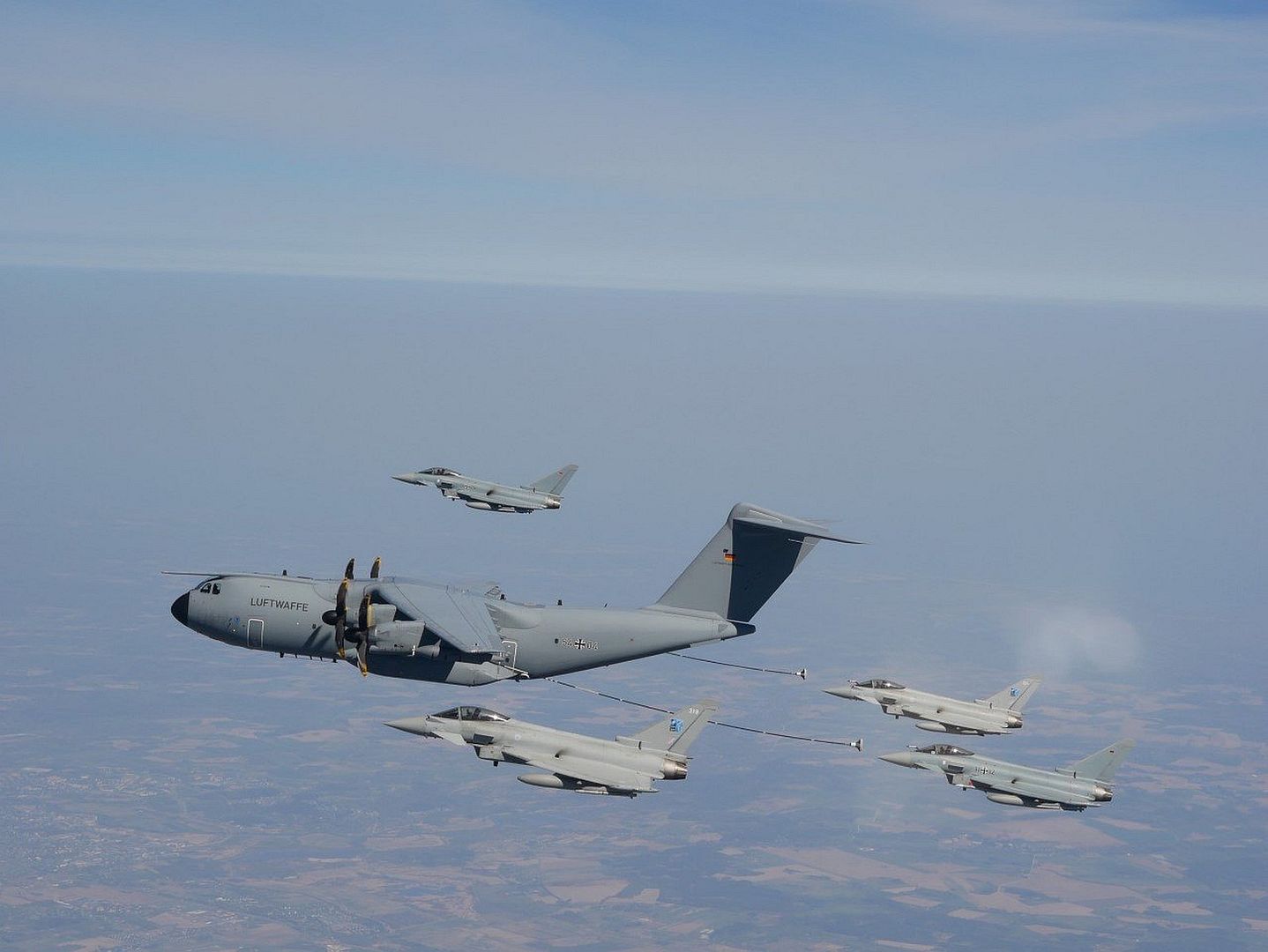
Representing the RAF at the Handover Ceremony, Air Vice Marshal Ian Duguid, Air Officer Commanding Number 11 Group said:
?We have been working very closely with the German Air Force during our preparation and have shared both ideas and experience. They have done an excellent job over the last eight months and we will draw upon their support and our own extensive experience as we begin our own mission. Our NATO allies can be reassured that the UK?s commitment to the Alliance remains as steadfast as ever."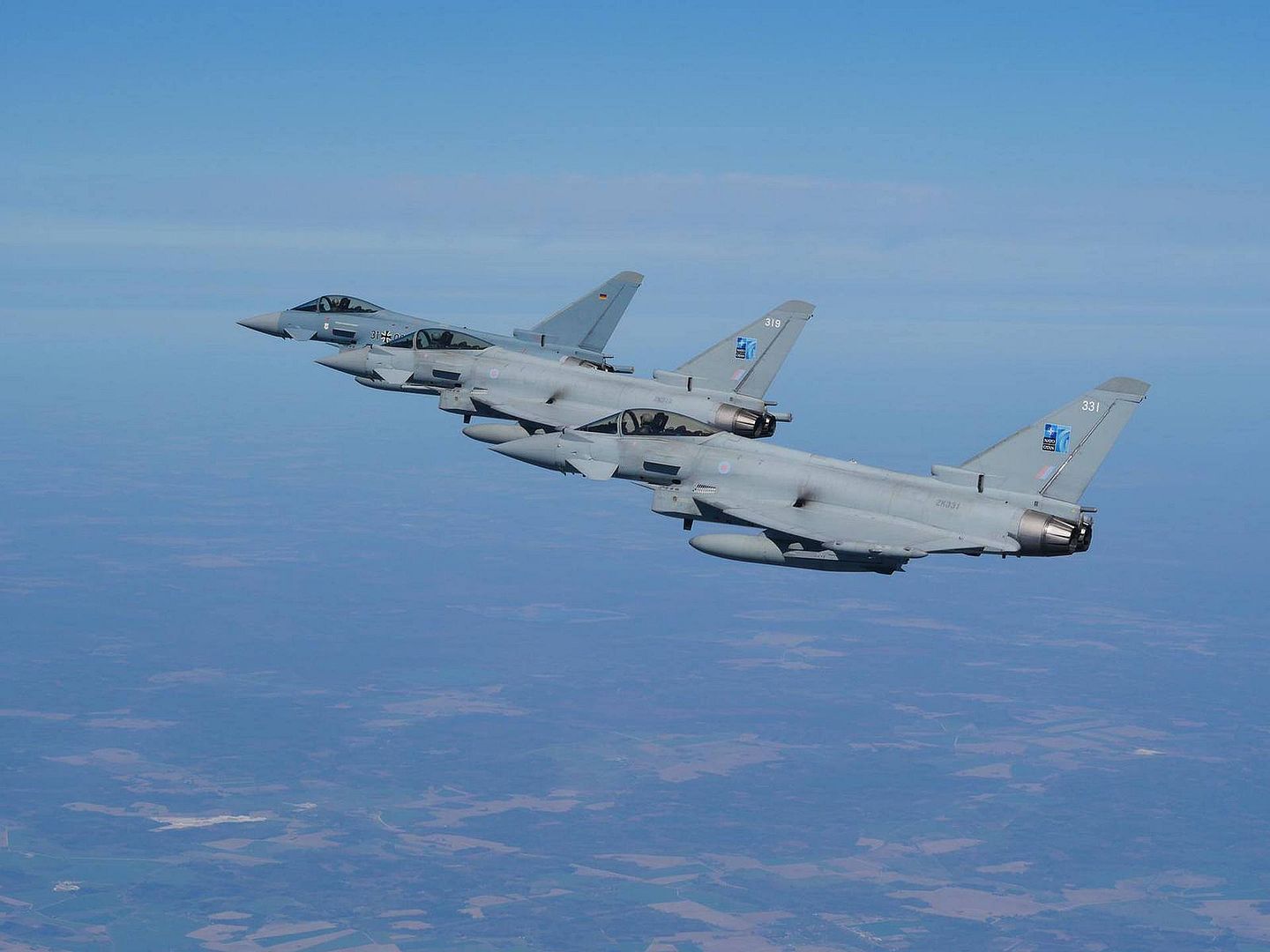
-
 Main AdminARABIAN GULF (May 3, 2019) Sailors walk the flight deck looking for foreign object debris prior to flight operations aboard the Wasp-class amphibious assault ship USS Kearsarge (LHD 3). Kearsarge is the flagship for the Kearsarge Amphibious Ready Group and, with the embarked 22nd Marine Expeditionary Unit, is deployed to the U.S. 5th Fleet area of operations in support of naval operations to ensure maritime stability and security in the Central Region, connecting the Mediterranean and the Pacific through the western Indian Ocean and three strategic choke points. (U.S. Navy photo by Mass Communication Specialist Seaman Nicholas R. Boris/Released)
Main AdminARABIAN GULF (May 3, 2019) Sailors walk the flight deck looking for foreign object debris prior to flight operations aboard the Wasp-class amphibious assault ship USS Kearsarge (LHD 3). Kearsarge is the flagship for the Kearsarge Amphibious Ready Group and, with the embarked 22nd Marine Expeditionary Unit, is deployed to the U.S. 5th Fleet area of operations in support of naval operations to ensure maritime stability and security in the Central Region, connecting the Mediterranean and the Pacific through the western Indian Ocean and three strategic choke points. (U.S. Navy photo by Mass Communication Specialist Seaman Nicholas R. Boris/Released)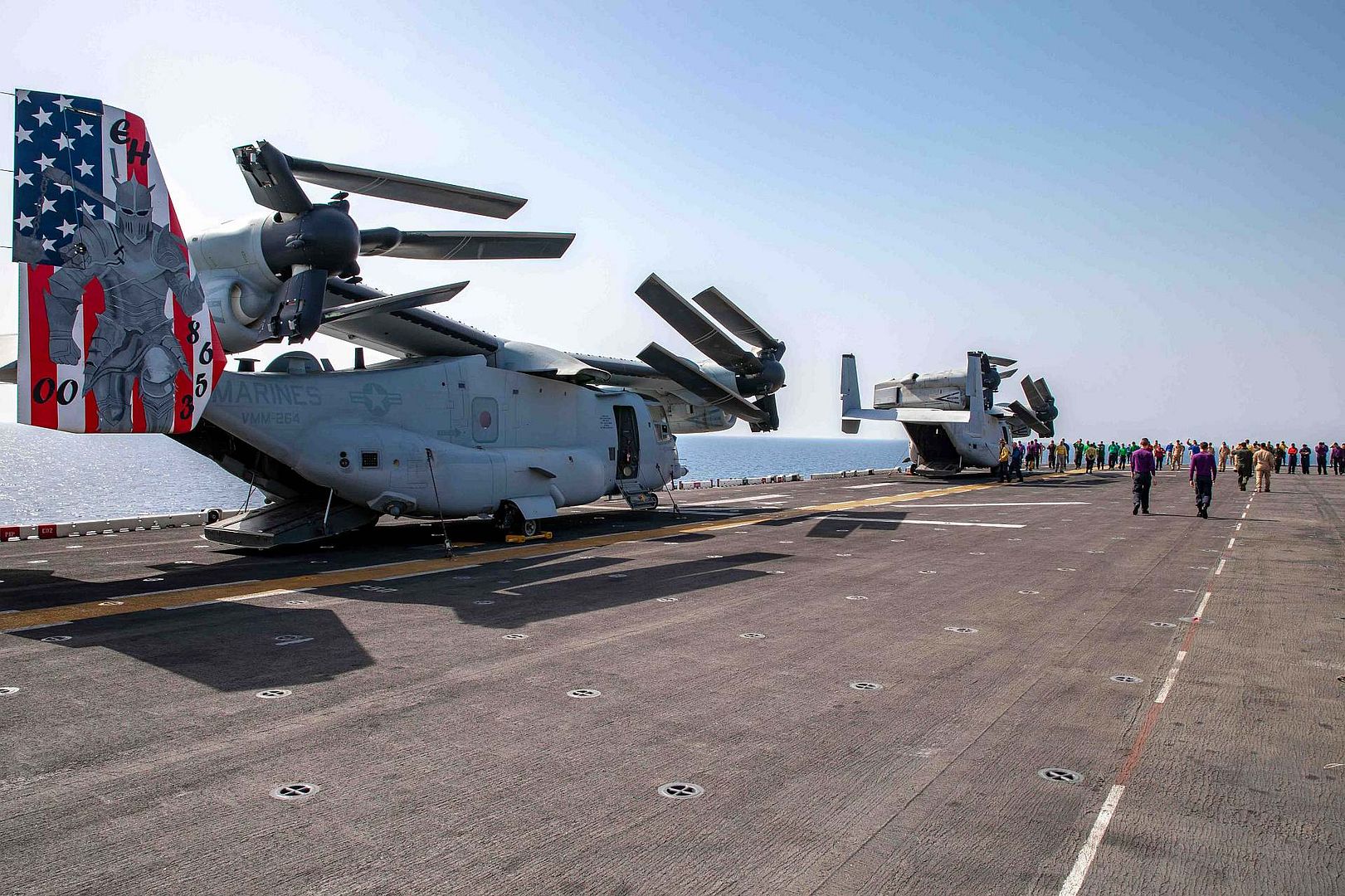
IONIAN SEA (May 4, 2019) An F/A-18F Super Hornet from the "Jolly Rogers" of Strike Fighter Squadron (VFA) 103 makes an arrested landing on the flight deck of the Nimitz-class aircraft carrier USS Abraham Lincoln (CVN 72). Abraham Lincoln is deployed as part of the Abraham Lincoln Carrier Strike Group in support of maritime security cooperation efforts in the U.S. 5th, U.S. 6th and U.S. 7th Fleet areas of operation. With Abraham Lincoln as the flagship, deployed strike group assets include staffs, ships and aircraft of Carrier Strike Group (CSG) 12, Destroyer Squadron (DESRON) 2, the guided-missile cruiser USS Leyte Gulf (CG 55) and Carrier Air Wing (CVW) 7; as well as the Spanish navy Alvaro de Bazan-class frigate ESPS Mendez Nunez (F 104). (U.S. Navy photo by Mass Communication Specialist 3rd Class Garrett LaBarge/Released)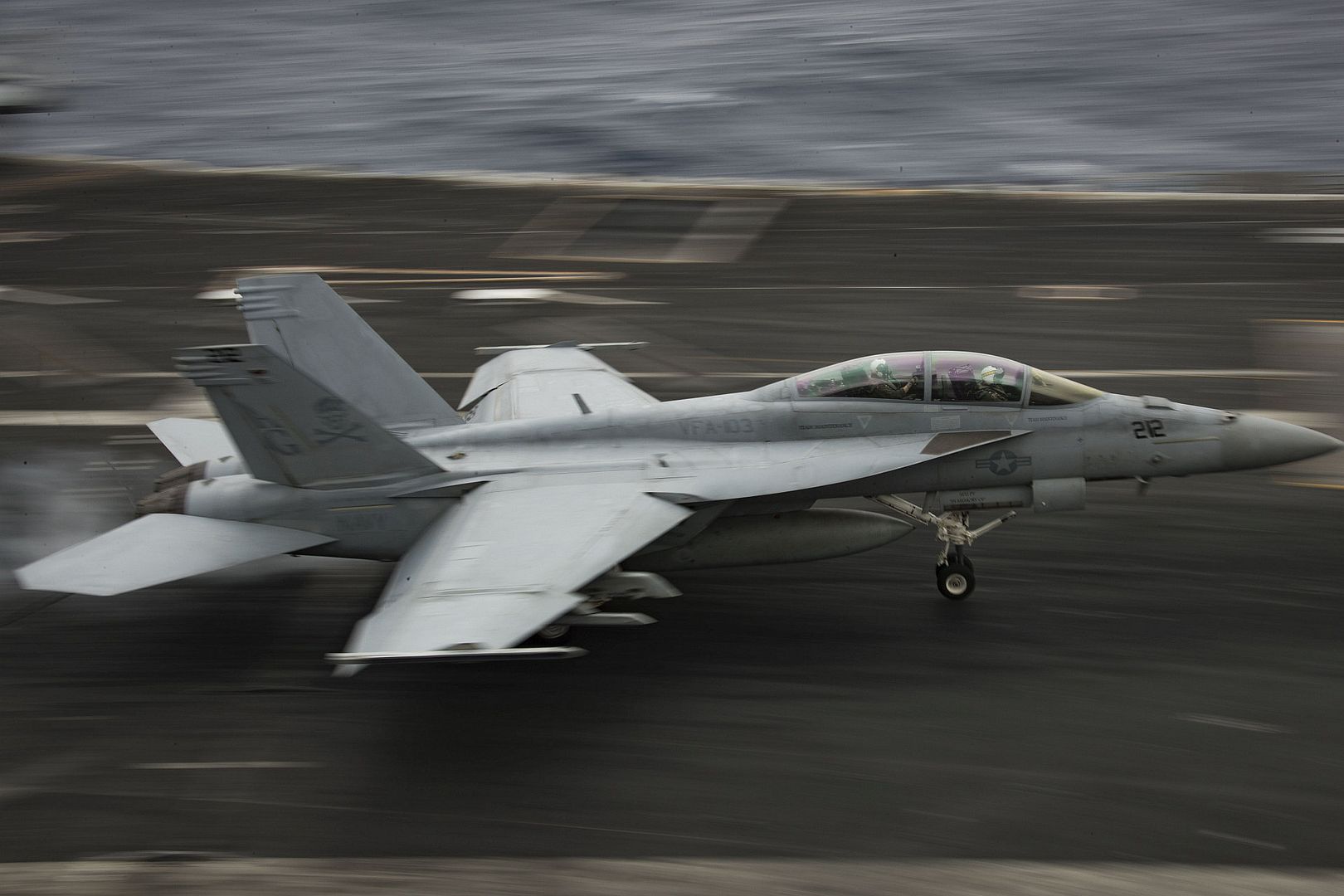
Air Transat, a Canadian leisure and holiday travel airline, took delivery of its first Airbus A321LR aircraft. The A321LR is one of 15 the Montreal-based carrier is scheduled to receive. Air Transat leases the A321LR from AerCap.
The A321LR, with its unique Airbus Cabin Flex configuration allowing for installation of additional fuel tanks, will have a range of up to 4,000 nautical miles. Air Transat plans to use the A321LR for long-distance flights out of Canada, principally on more extended, thinner routes to European, Caribbean, Central and South American destinations. The A321LRs will replace older planes with an ultra-modern, highly cost-efficient aircraft equipped with state-of-the-art interior amenities for an enhanced and enjoyable passenger experience.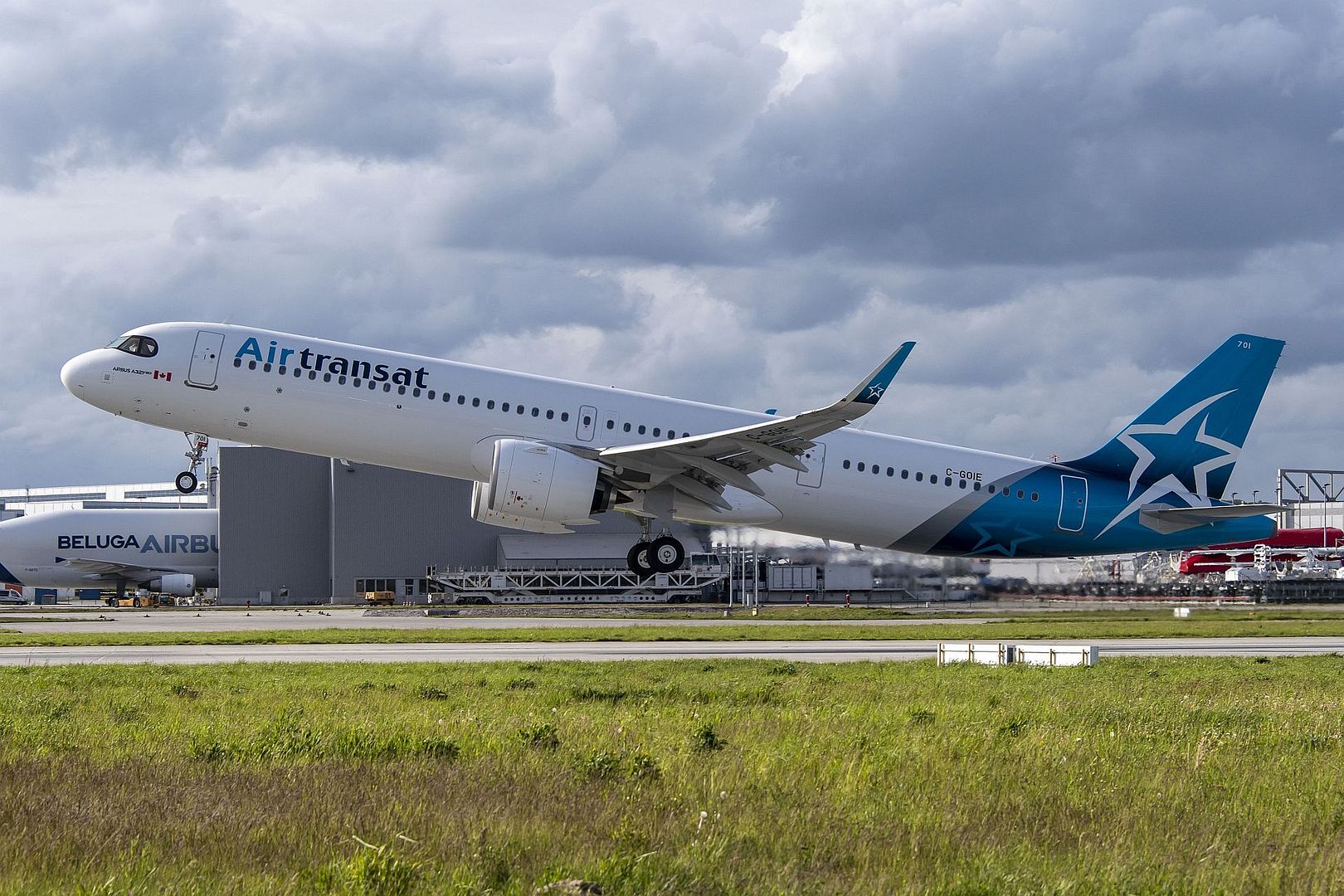
?The arrival of this new generation of aircraft is an important moment for our company and our passengers in many respects,? says Annick Gu?rard, Chief Operating Officer at Transat. ?The Airbus A321LR represents what Air Transat stands for today and what we strive for in the coming years. It reinforces our position as a leader in sustainable tourism, while also offering our passengers a superior on-board experience.?
?We are proud to deliver the A321LR to Air Transat and to be associated with such a fine, innovative airline,? said Christian Scherer, Airbus Chief Commercial Officer. ?The A321LR, with its increased range and low operating costs, enables Air Transat to increase flight frequencies, expand its network and strengthen its competitive position. Airbus will provide Air Transat with world-class support and work to ensure its ongoing success.?
The Air Transat A321LR is configured for 199 seats in two classes, including 12 premium Club Class seats in an exclusive cabin with personalized service and ergonomic seating. Economy Class seats are wider, provide more personal space and are equipped with a state-of-the-art entertainment system.
The A321LRs are part of a larger leasing deal Air Transat has with AerCap to convert to an all-Airbus fleet by 2022 as it phases out older widebody and narrowbody planes.
Air Transat is Canada?s number one holiday airline. It flies to some 60 destinations in more than 25 countries in the Americas and Europe, offers domestic and feeder flights within Canada, and carries some 5 million passengers every year. Based in Montreal, the company employs 3,000 people. Air Transat is a business unit of Transat A.T. Inc., a leading integrated international tourism company specializing in holiday travel and offering vacation packages, hotel stays and air travel.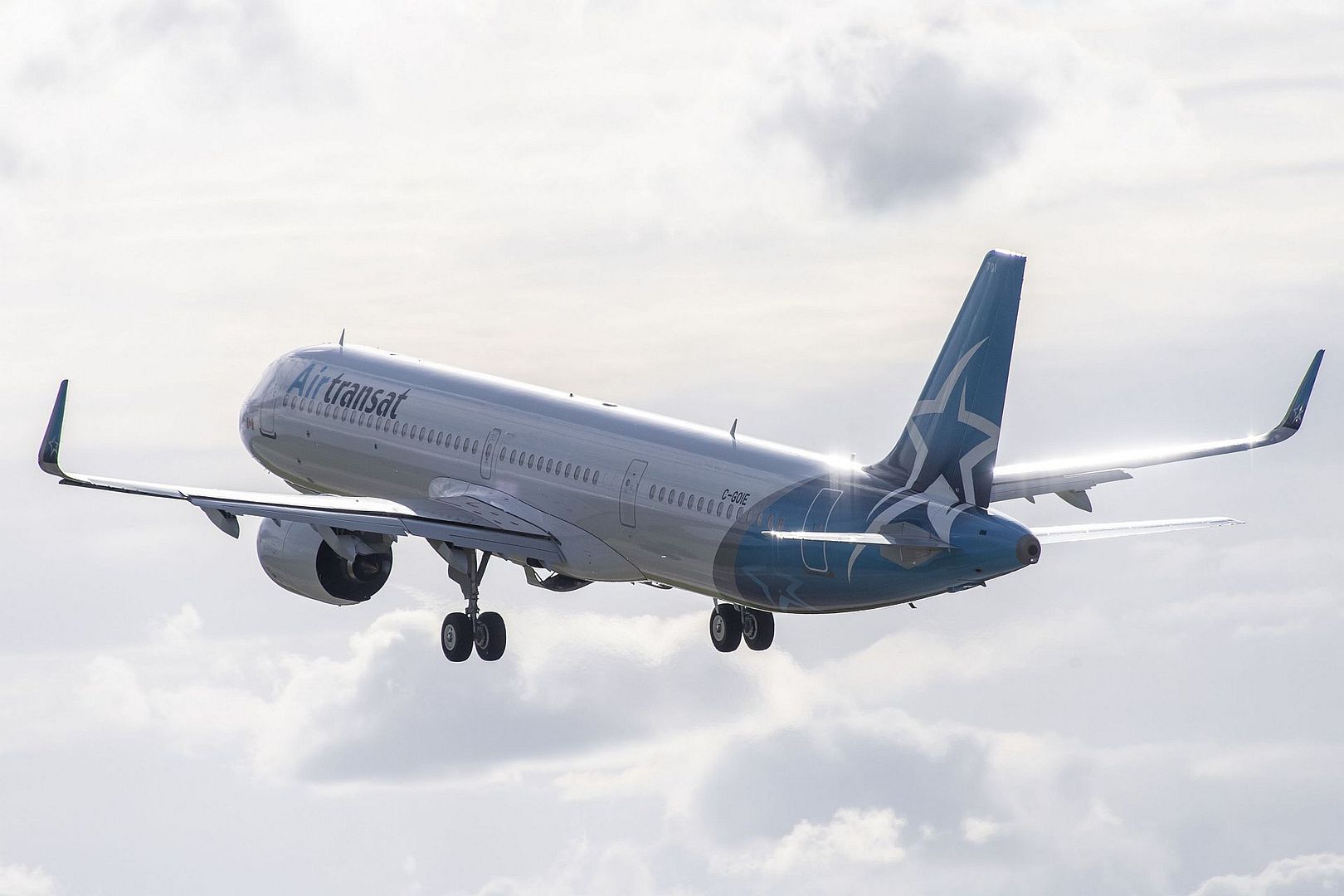
The first A330neo for Lion Air Group has rolled out of the Airbus paint shop in Toulouse, France, featuring the airline?s distinctive livery. The aircraft will be operated on lease from BOC Aviation.
Altogether, Lion Air Group will acquire 10 A330neo aircraft, eight of which will be leased from BOC Aviation. The aircraft will have a single-class layout seating 440 passengers and will be operated by Lion Air on selected domestic routes, as well as charter and pilgrimage service to Saudi Arabia. Some of the aircraft will be operated by Thai Lion on long-haul services from Thailand.
The first aircraft will now continue its industrial process and proceed soon to ground and flight tests, before the delivery to the airline in the coming weeks.
The A330neo is the true new-generation aircraft building on the best-selling widebody A330?s features and leveraging on A350 XWB technology. Powered by the latest Rolls-Royce Trent 7000 engines, the A330neo provides an unprecedented level of efficiency ? with 25% lower fuel burn per seat than previous generation competitors. Equipped with the Airspace by Airbus cabin, the A330neo offers a unique passenger experience with more personal space and the latest generation in-flight entertainment system and connectivity.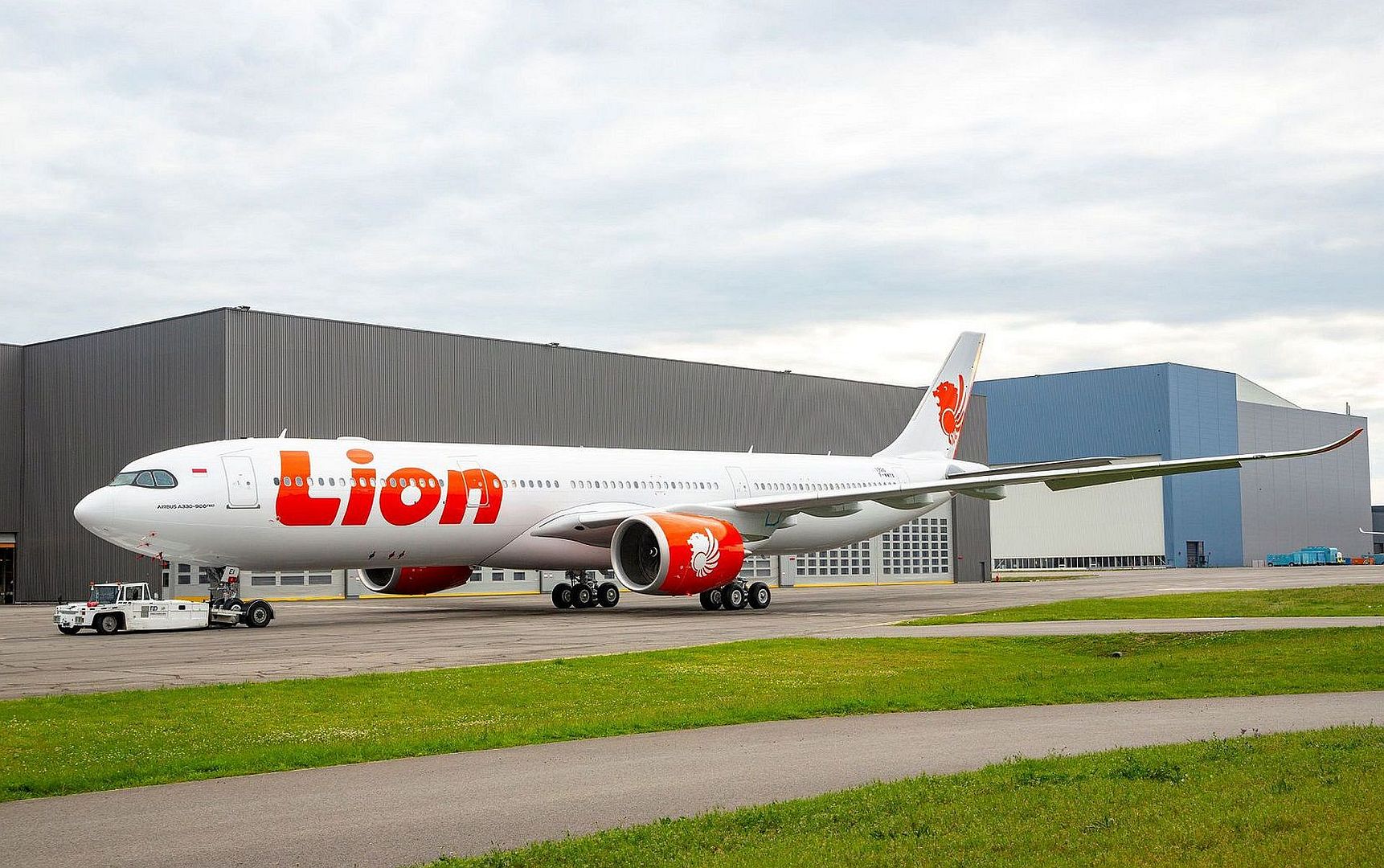
PARIS --- France?s 15th A400M Atlas military transport aircraft landed on April 26, 2019 at Orl?ans-Bricy Air Base, after being accepted in Seville by the Directorate General of Armaments (DGA) on April 25, 2019.
This aircraft is the first new aircraft delivered directly in a tactical standard, including the capability to land and take off from unprepared airstrips at all times. Since the beginning of the year, three previously-delivered French aircraft have also been upgraded to this new standard.
Two additional capabilities will be added in the fall: the ability to drop heavy loads weighing up to 16 tons, and in-flight refueling from the central fuselage boom, mainly for the benefit of other A400M and Transall transport aircraft.
A tactical military transport aircraft having strategic reach, the A400M Atlas is unmatched on the global market. Powered by four turboprops, it is designed to carry up to 35 tons of equipment and carry out all transportation-related tasks, including inter and intra-theater operations, assault on rough terrain, air dropping of troops and equipment including from very high altitudes, in-flight refueling and medical evacuations.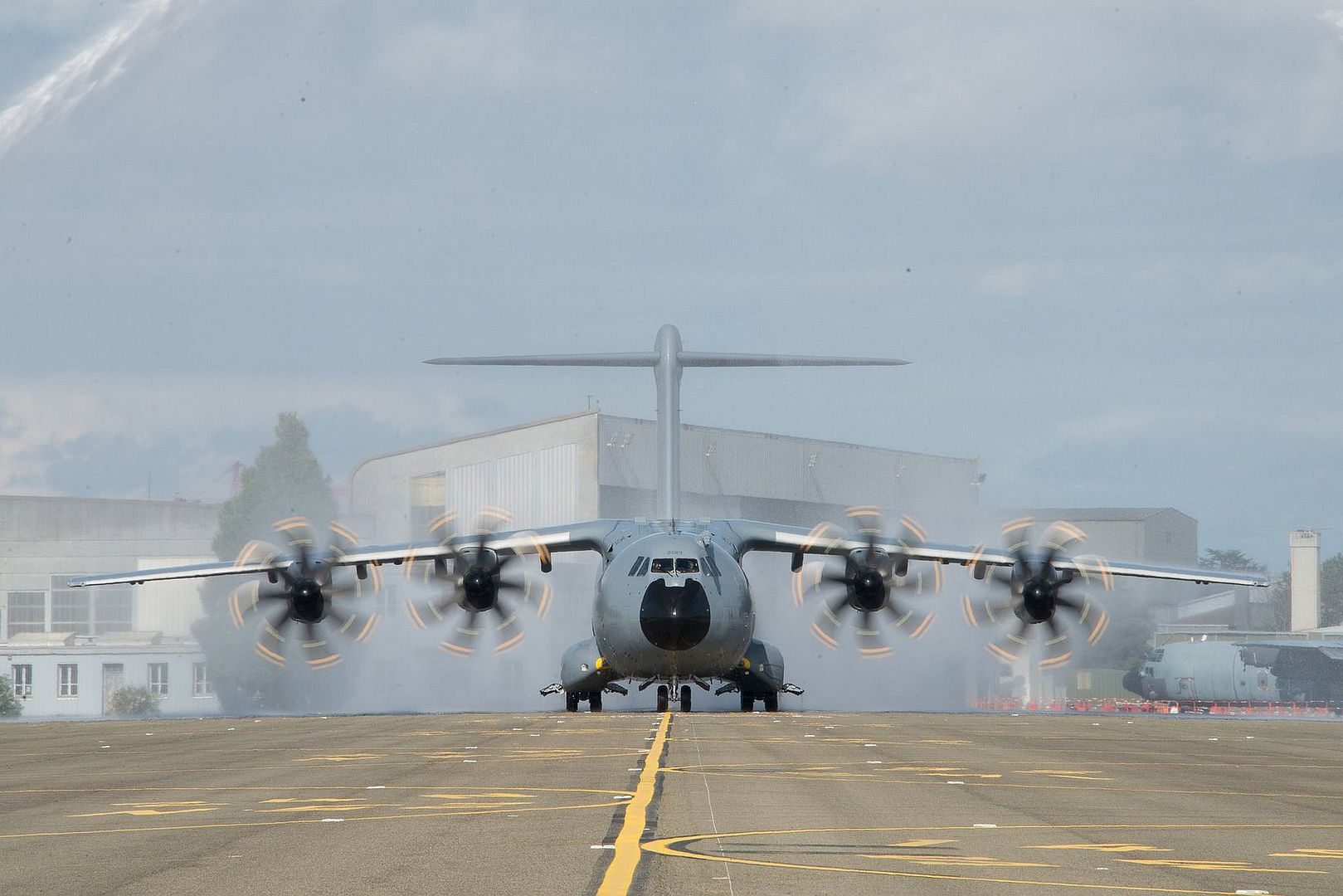
Its advanced communications and performance allow it to integrate into joint air operations like no other transport aircraft before. The A400M is in this respect a real combat system.
The technical performance of the A400M Atlas makes it possible to increase, over the course of deliveries, the capabilities of the French military air transport. The tactical capabilities of this 15th aircraft illustrate the recently-traveled path to the target standard: dropping paratroops through a side door, refueling another centrally transported aircraft, and improved ground performance.
The 2019-2025 military programming law provides for the delivery of 11 A400Ms during the period, for a total of 25 aircraft in service at the end of 2025.
(Source: French Armed Forces Ministry; issued April 30, 2019)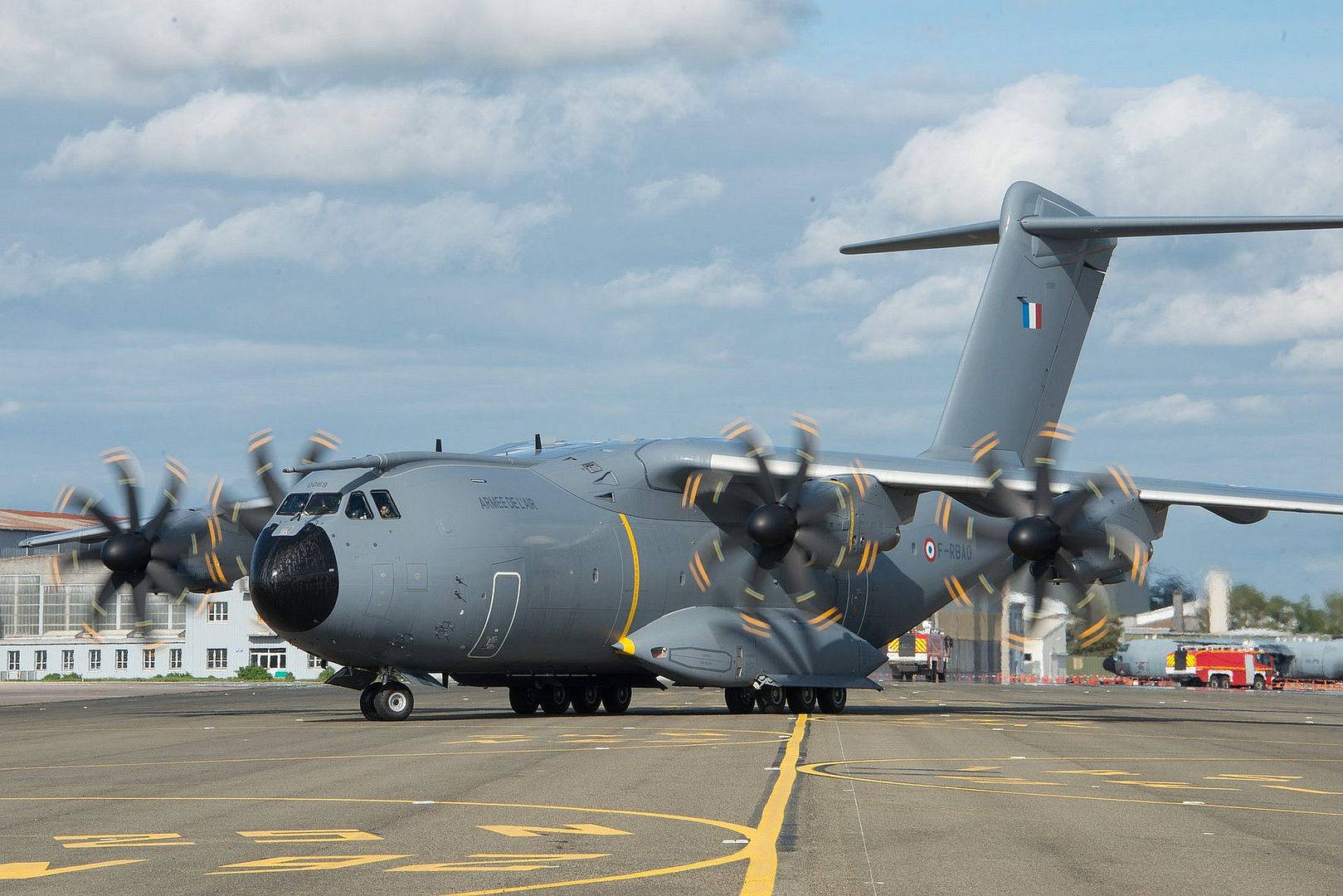
-
 Main AdminJapanese guests view various U.S. and Japanese static display aircraft during the 43rd Japan Maritime Self-Defense Force ? Marine Corps Air Station Iwakuni Friendship Day at MCAS Iwakuni, Japan, May 5, 2019. Since 1973, MCAS Iwakuni has held a single-day air show designed to foster positive relationships and offer an exciting experience that displays the communal support between the U.S. and Japan. The air show encompassed various U.S. and Japanese static display aircraft, aerial performances, food and entertainment. (U.S. Marine Corps photo's by Sgt. Sara Abrego)
Main AdminJapanese guests view various U.S. and Japanese static display aircraft during the 43rd Japan Maritime Self-Defense Force ? Marine Corps Air Station Iwakuni Friendship Day at MCAS Iwakuni, Japan, May 5, 2019. Since 1973, MCAS Iwakuni has held a single-day air show designed to foster positive relationships and offer an exciting experience that displays the communal support between the U.S. and Japan. The air show encompassed various U.S. and Japanese static display aircraft, aerial performances, food and entertainment. (U.S. Marine Corps photo's by Sgt. Sara Abrego)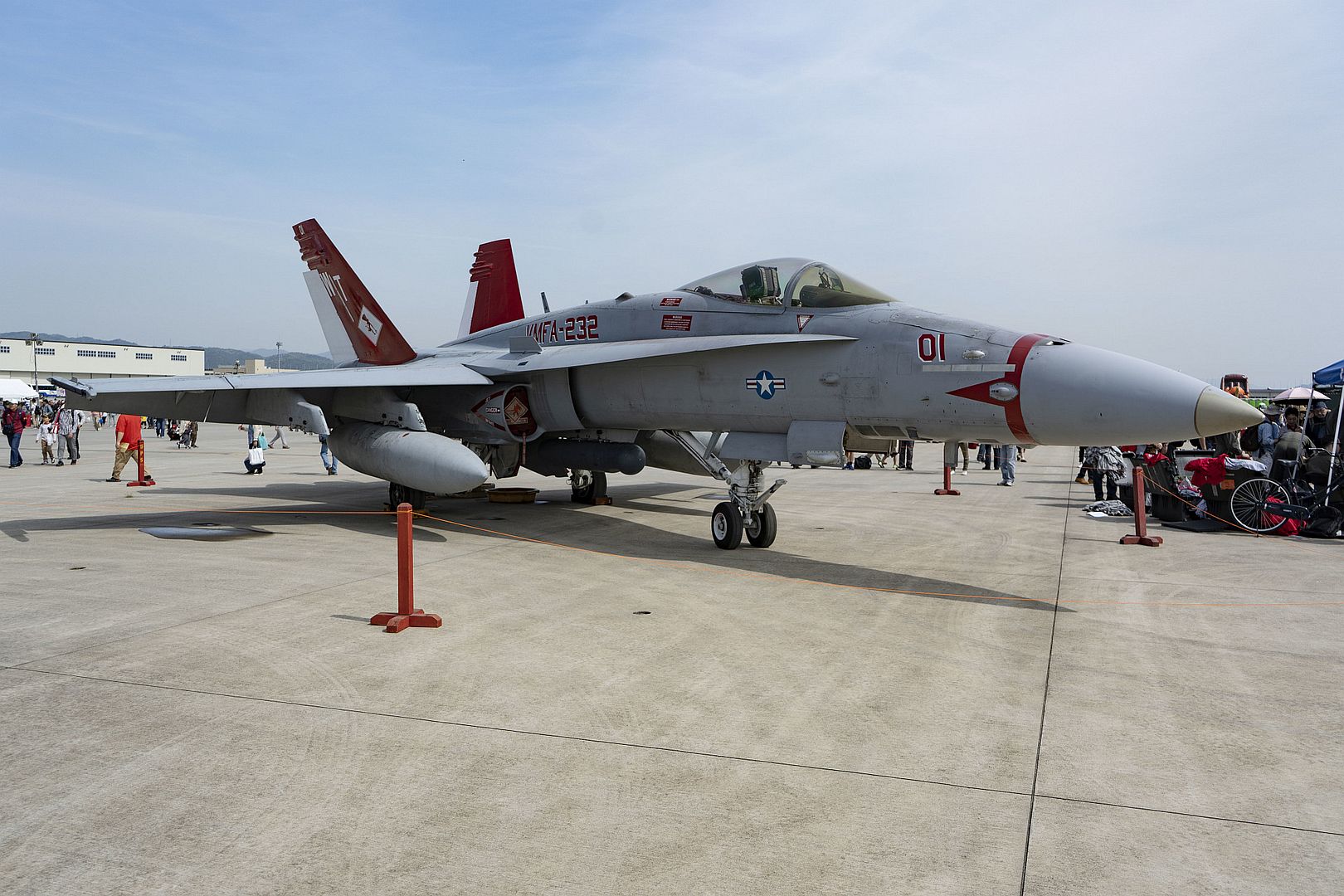
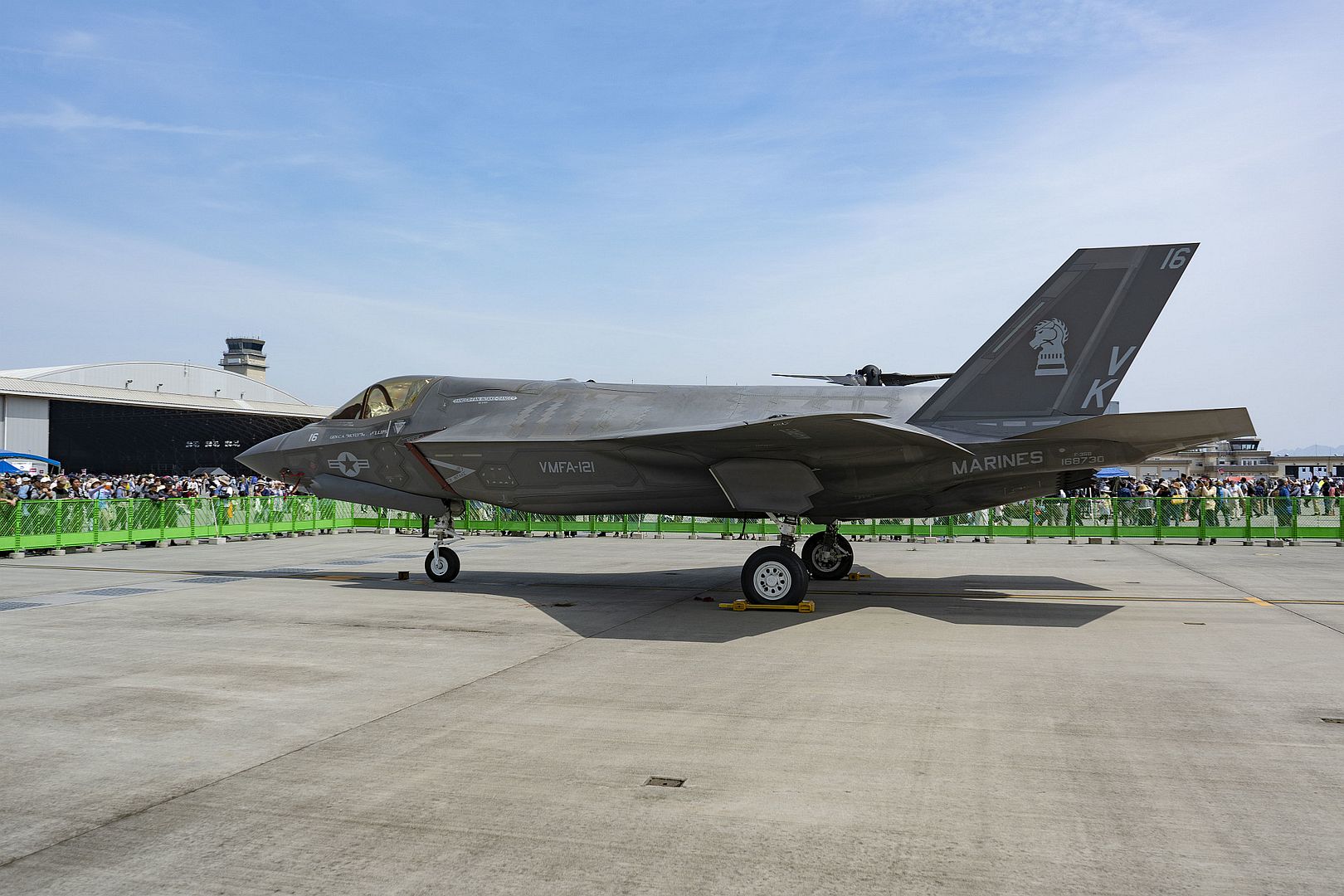
A Pacific Air Forces F-16 Fighting Falcon prepares to conduct flight demonstrations during the 43rd Japan Maritime Self-Defense Force ? Marine Corps Air Station Iwakuni Friendship Day Air Show at MCAS Iwakuni, Japan, May 5, 2019. Since 1973, MCAS Iwakuni has held a single-day air show designed to foster positive relationships and offer an exciting experience that displays the communal support between the U.S. and Japan. The air show encompassed various U.S. and Japanese static display aircraft, aerial performances, food and entertainment. (U.S. Marine Corps photo by Lance Cpl. Harrison Rakhshani)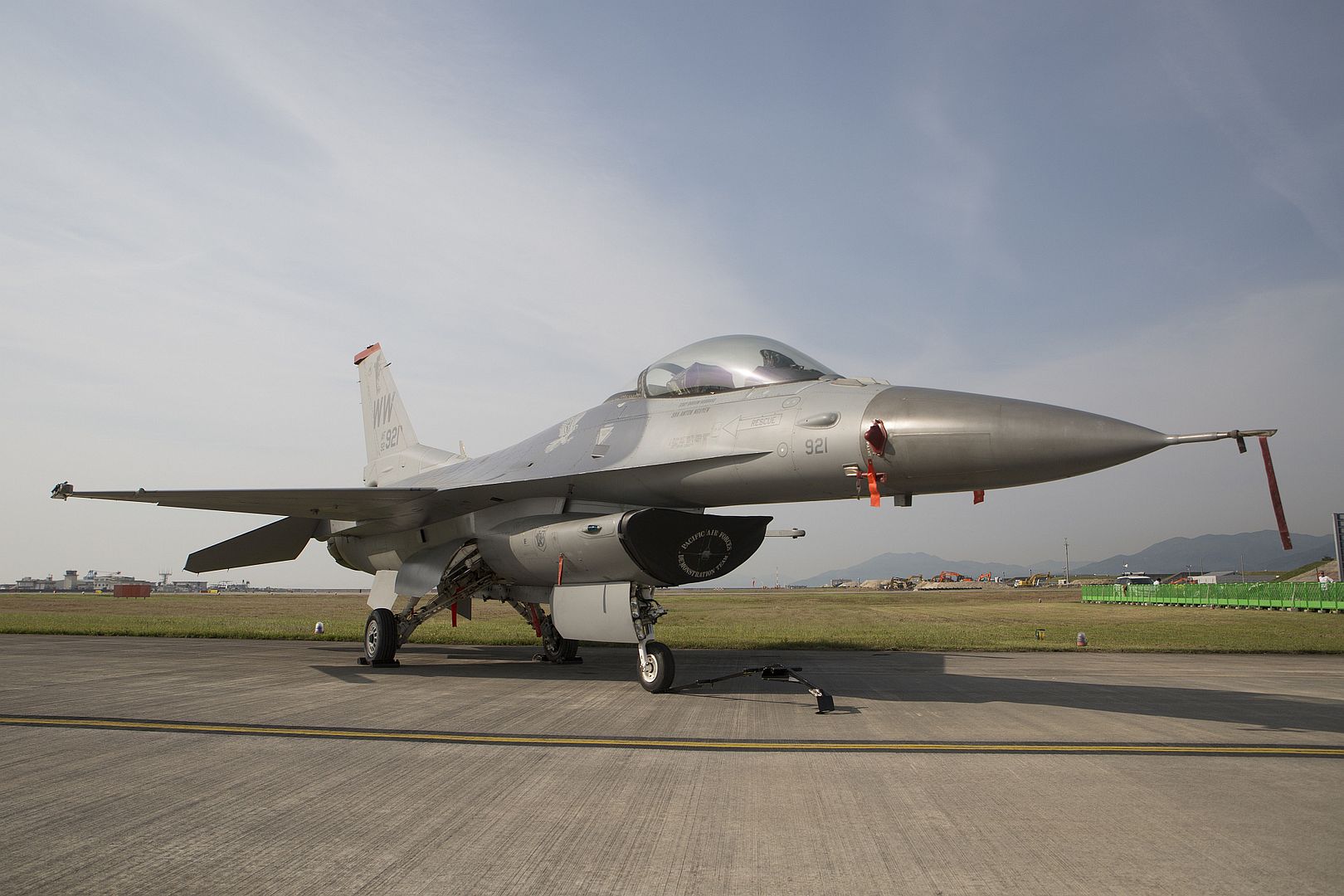
The 43rd Japan Maritime Self-Defense Force conduct the ceremonial flight during Friendship Day 2019. ? MCAS Iwakuni Friendship Day held at MCAS Iwakuni, May 5, 2019. Since 1973, MCAS Iwakuni has held a single-day air show designed to foster positive relationships and offer an exciting experience that displays the communal support between the U.S. and Japan. The air show encompassed various U.S. and Japanese static display aircraft, aerial performances, food and entertainment. (U.S. Marine Corps photo by Lance Cpl. Kenny Nunez)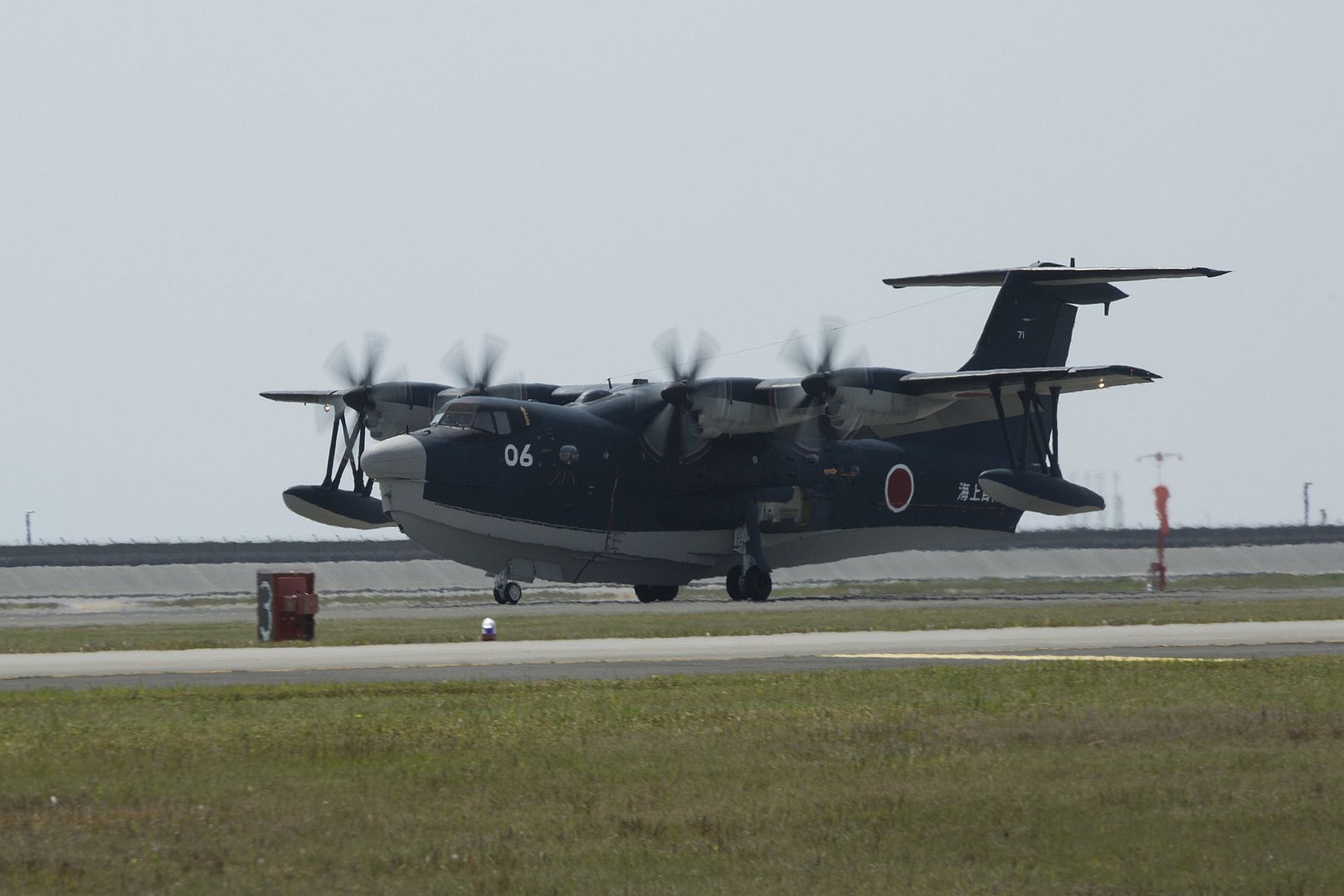
U.S. Air Force Airmen assigned the 301st Fighter Wing, Joint Reserve Base Fort Worth, Texas, maintain F-16C Fighting Falcons at Campia Turzii, Romania, May 6, 2019, as part of Theater Security Package 19.1 in support of Operation Atlantic Resolve. Funded through the European Deterrence Initiative, TSP 19.1 provides a more robust U.S. military rotational presence in the European theater, capable of deterring, and if required, responding to regional threats. While in theater, these personnel and aircraft will participate in multiple readiness exercises alongside NATO allies and partners to strengthen interoperability and to demonstrate U.S. commitment to the stability and security of Europe (U.S. Air Force photo by 1st Lt. Andrew Layton).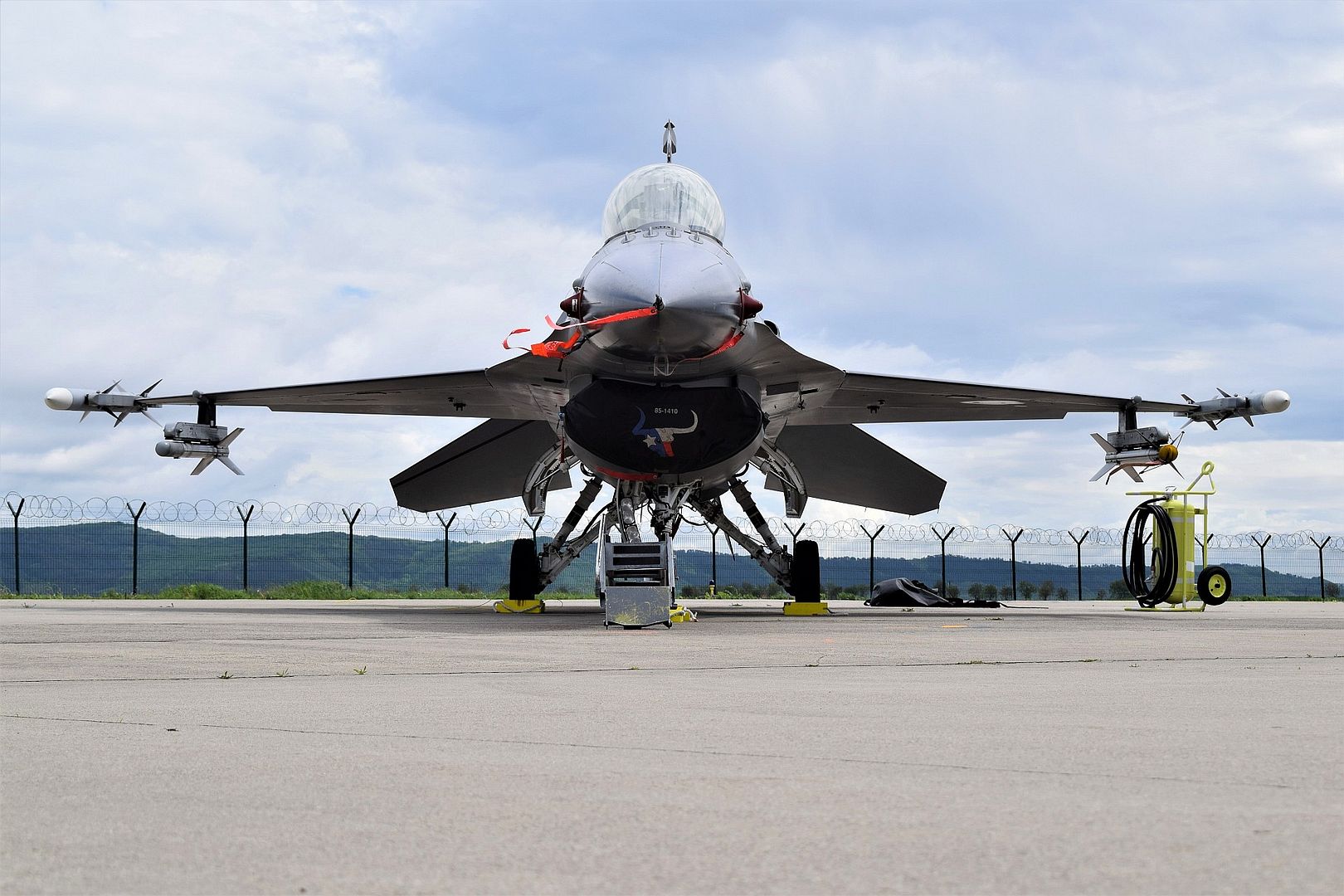
A C-21 aircraft is displayed during the Keesler and Biloxi Air and Space Show at Keesler Air Force Base, Mississippi, May 5, 2019. The U.S. Air Force Thunderbirds are headlining the Keesler and Biloxi Air Show May 4-5. Thunder Over the Sound is a unique, one-of-a-kind event where a base and its surrounding city jointly host an air show geographically separated. (U.S. Air Force photo by Airman 1st Class Kimberly L. Mueller)
-
5 years agoWed May 08 2019, 09:25pm
 Main AdminF-16 Fighting Falcon from the 480th Fighter Squadron, 52nd Fighter Wing, Spangdahlem Air Base, Germany, waits for a pair of Royal Air Force Eurofighter Typhoons to taxi by before a low-level training sortie at RAF Lossiemouth, Scotland, May 7, 2019, during exercise Formidable Shield. Formidable Shield is a U.S.-led exercise, conducted by Naval Striking and Support Forces NATO. The purpose of the training is to improve allied interoperability in a live-fire integrated air and missile defense exercise. (U.S. Air Force photo by Master Sgt. Austin M. May)
Main AdminF-16 Fighting Falcon from the 480th Fighter Squadron, 52nd Fighter Wing, Spangdahlem Air Base, Germany, waits for a pair of Royal Air Force Eurofighter Typhoons to taxi by before a low-level training sortie at RAF Lossiemouth, Scotland, May 7, 2019, during exercise Formidable Shield. Formidable Shield is a U.S.-led exercise, conducted by Naval Striking and Support Forces NATO. The purpose of the training is to improve allied interoperability in a live-fire integrated air and missile defense exercise. (U.S. Air Force photo by Master Sgt. Austin M. May)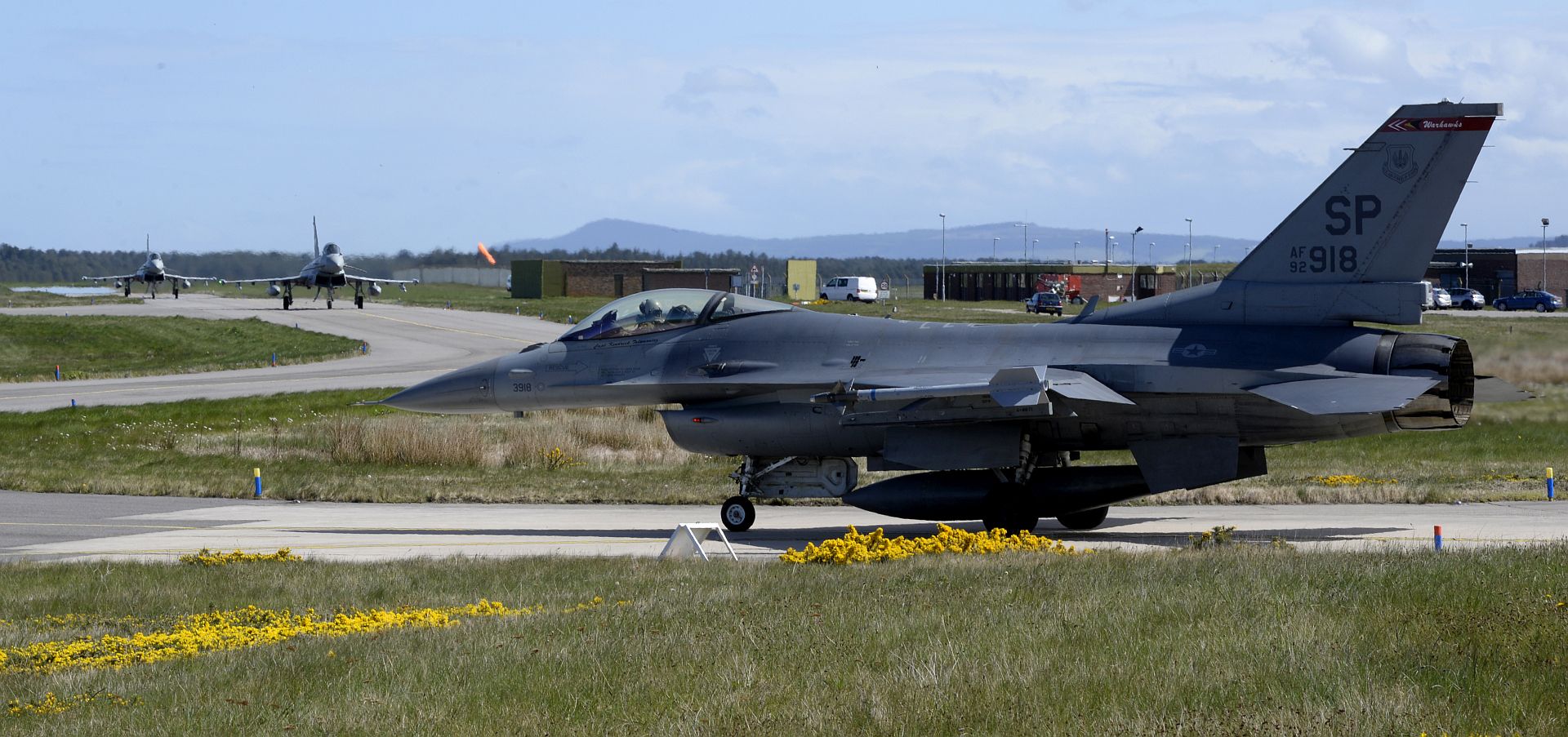
An F-16 Fighting Falcon from the 480th Fighter Squadron, 52nd Fighter Wing, Spangdahlem Air Base, Germany, taxis after a low-level training sortie at RAF Lossiemouth, Scotland, May 7, 2019, during exercise Formidable Shield. Formidable Shield is a U.S.-led exercise, conducted by Naval Striking and Support Forces NATO. The purpose of the training is to improve allied interoperability in a live-fire integrated air and missile defense exercise. (U.S. Air Force photo by Master Sgt. Austin M. May)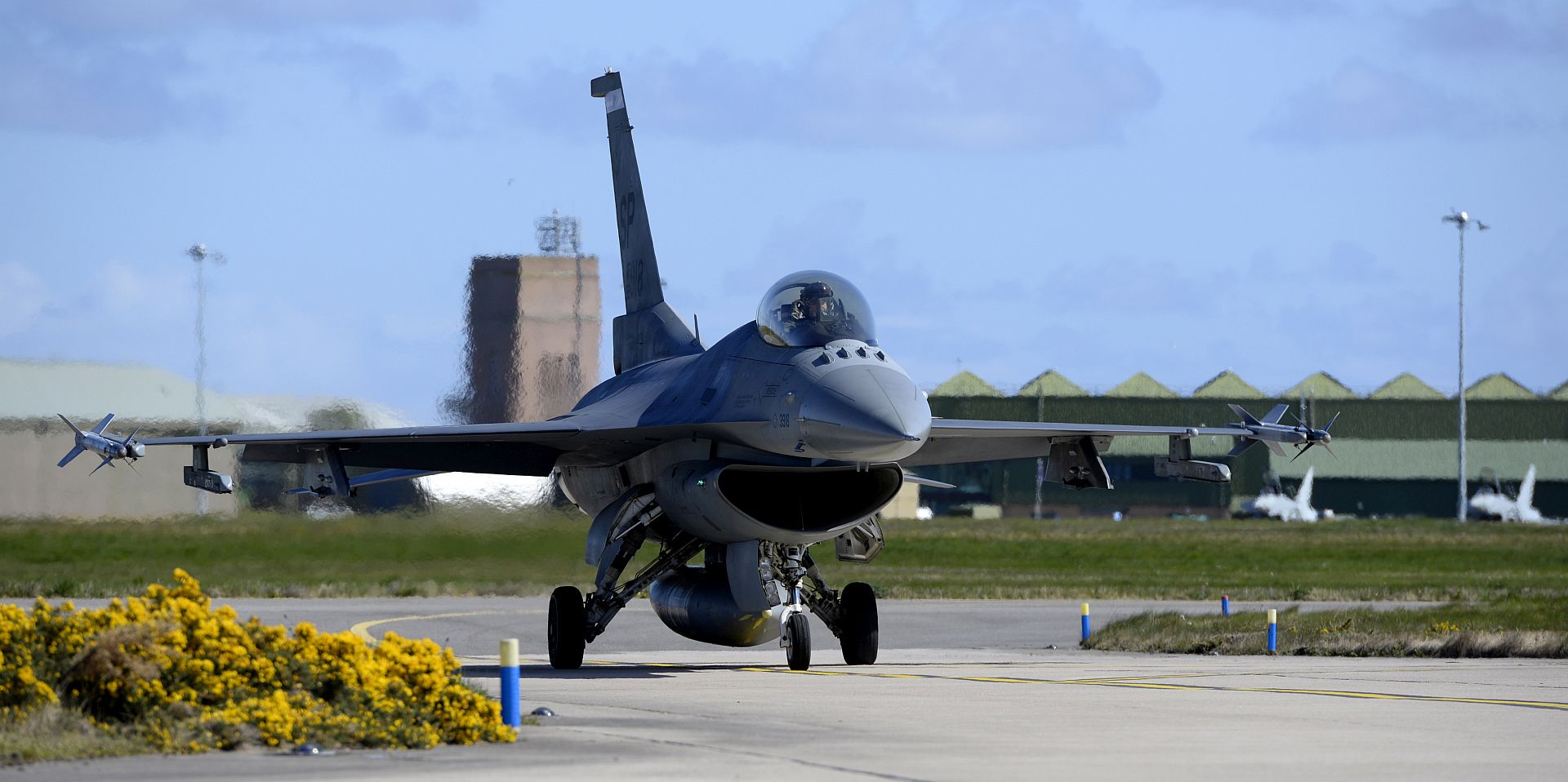
F-16C Fighting Falcons assigned to the 93rd Fighter Squadron, Homestead Air Reserve Base, Fla., take off from the flight line at Royal Air Force Lakenheath, England, May 7, 2019. Aircrew and support personnel from the Homestead ARB deployed to RAF Lakenheath to participate in a Flying Training Deployment with U.S. Air Forces in Europe units, as well as partners and allies in the region. (U.S. Air Force photo's by Senior Airman Malcolm Mayfield)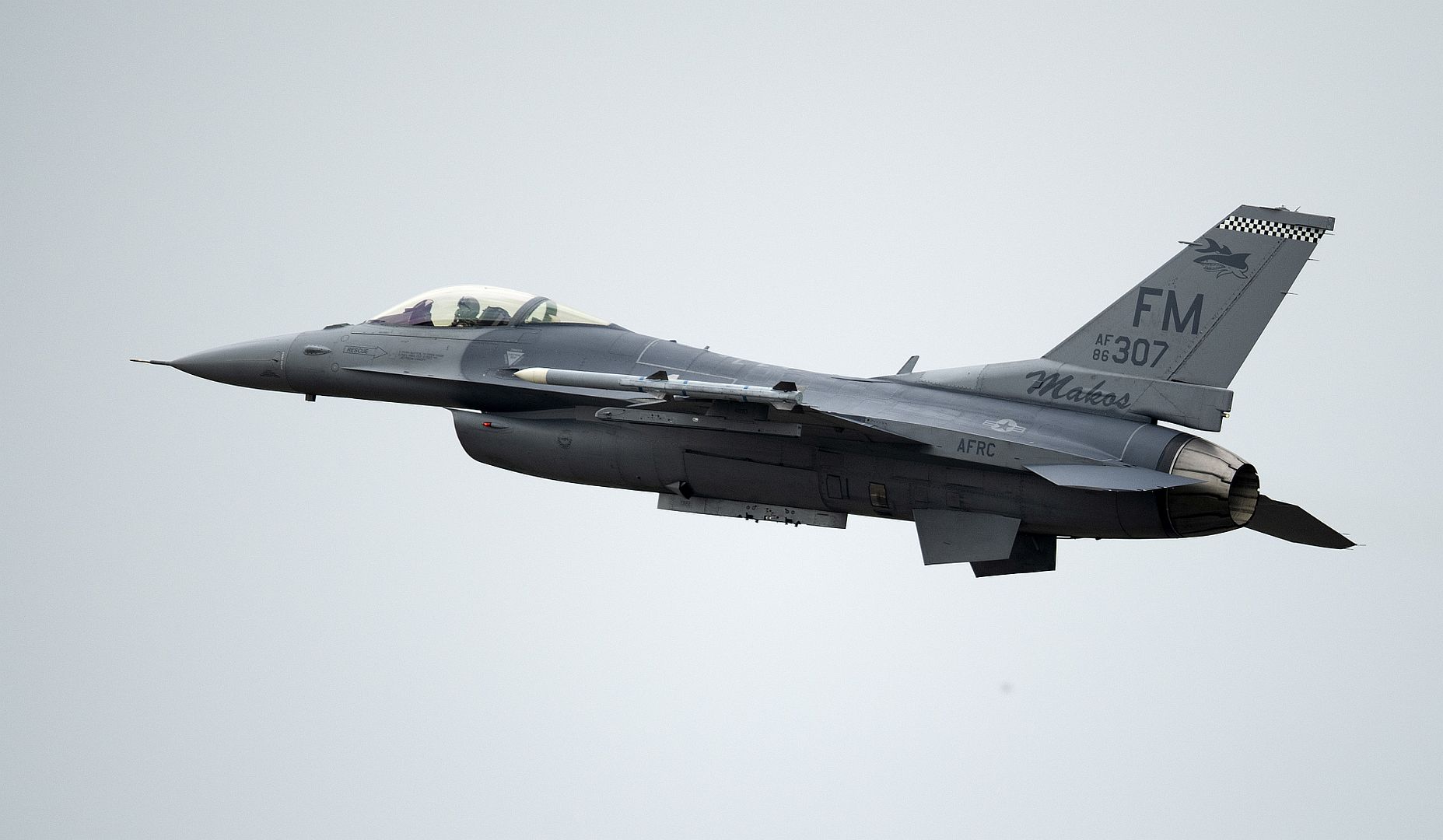
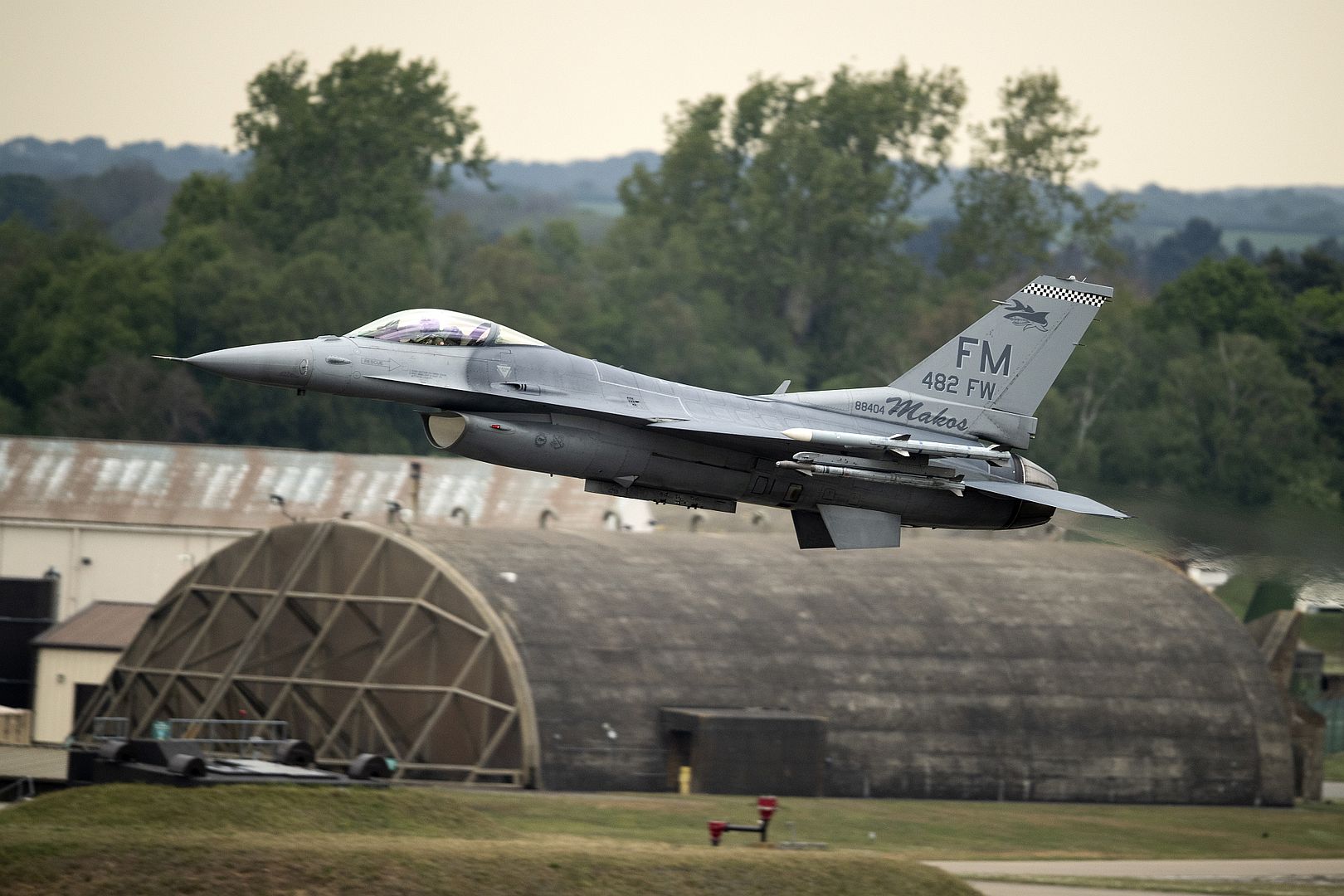
U.S. Air Force Airmen assigned to the 301st Fighter Wing, Naval Air Station Joint Reserve Base Fort Worth, Texas, launch F-16C Fighting Falcons at Campia Turzii, Romania, May 8, 2019, as part of Theater Security Package 19.1 in support of Operation Atlantic Resolve. Funded through the European Deterrence Initiative, TSP 19.1 provides a more robust U.S. military rotational presence in the European theater, capable of deterring, and if required, responding to regional threats. While in theater, these personnel and aircraft will participate in multiple readiness exercises alongside NATO allies and partners to strengthen interoperability and to demonstrate U.S. commitment to the stability and security of Europe (U.S. Air Force photo by 1st Lt. Andrew Layton).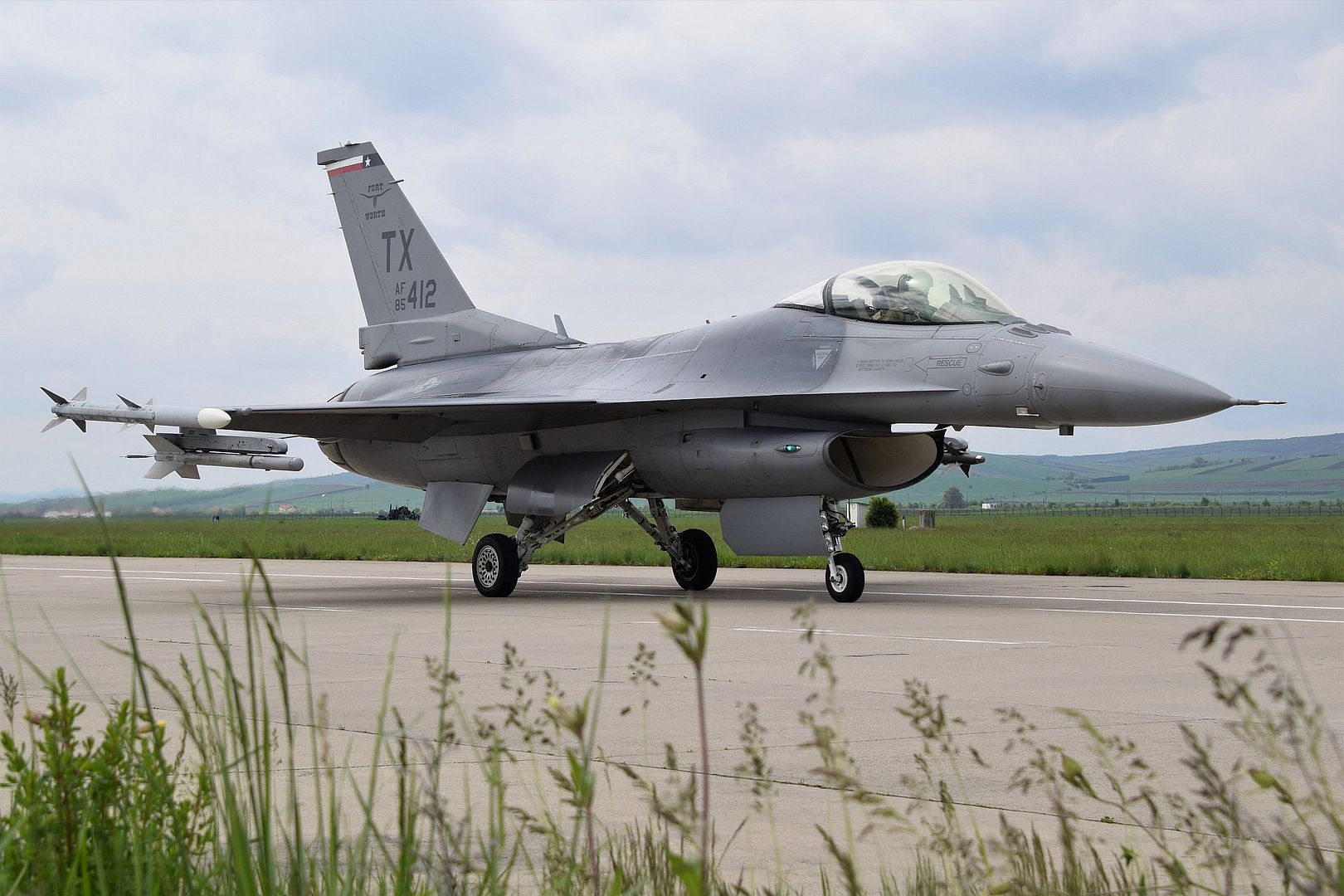
The Blue Angel?s C-130T Hercules ?Fat Albert? practices for the air show at Joint Base Andrews, Md., May 8, 2019. After arriving at JBA, the Blue Angels met with media for interviews and flew key influencers in the air before the 2019 JBA Legends in Flight Air & Space Expo. (U.S. Air Force photo by Senior Airman Alyssa D. Van Hook)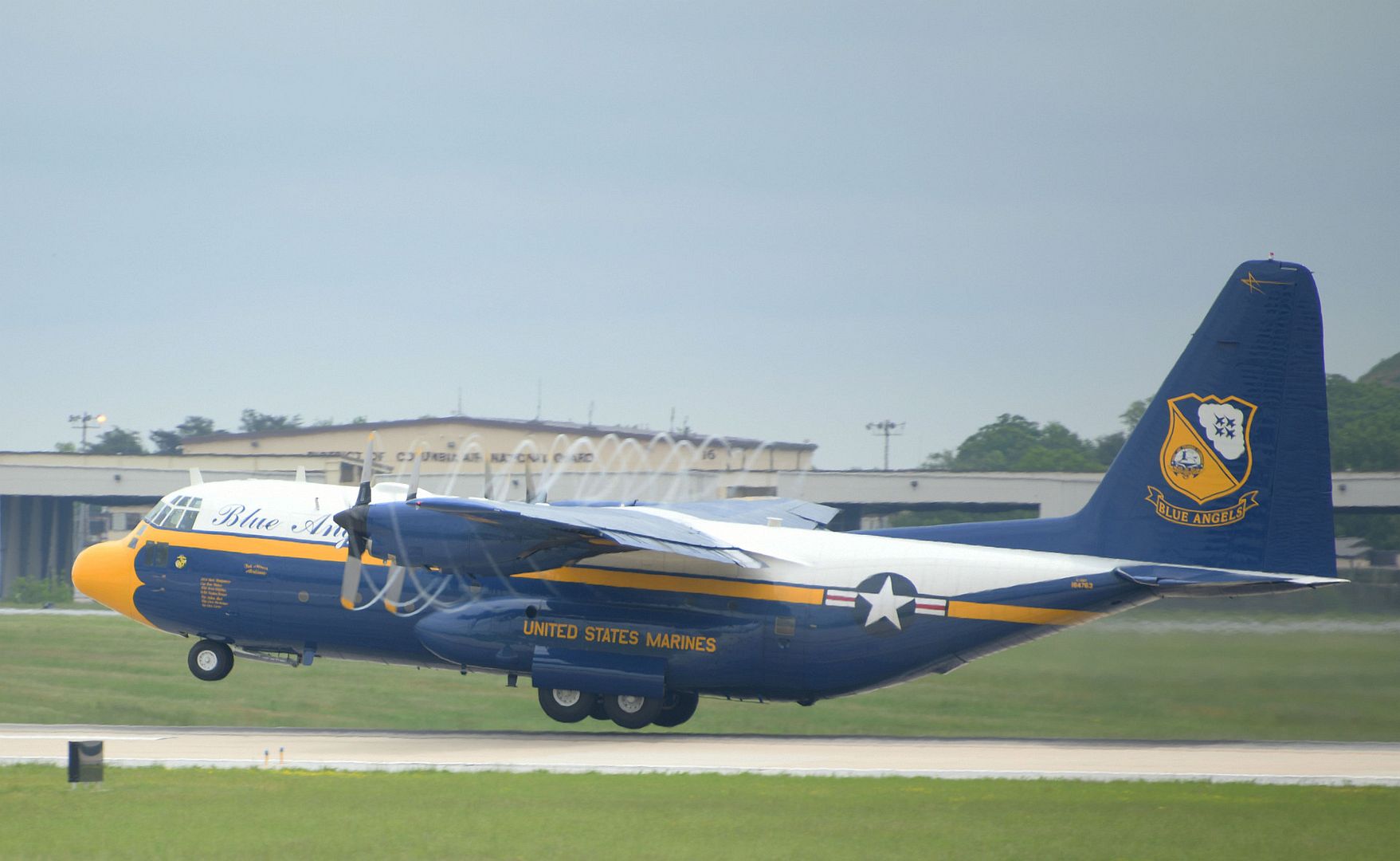
IONIAN SEA (May 7, 2019) Three F/A-18F Super Hornets from the ""Jolly Rogers" of Strike Fighter Squadron (VFA) 103 fly past the USS Abraham Lincoln (CVN 72) during an air power demonstration. Abraham Lincoln is underway in the Mediterranean Sea as part of the Abraham Lincoln Carrier Strike Group deployment in support of maritime security cooperation efforts in the U.S. 5th, U.S. 6th and U.S. 7th Fleet areas of operation. With Abraham Lincoln as the flagship, deployed strike group assets include staffs, ships and aircraft of Carrier Strike Group (CSG) 12, Destroyer Squadron (DESRON) 2, the guided-missile cruiser USS Leyte Gulf (CG 55) and Carrier Air Wing (CVW) 7; as well as the Spanish navy Alvaro de Bazan-class frigate ESPS Mendez Nunez (F 104). (U.S. Navy photo by Mass Communication Specialist Seaman Tristan Kyle Labuguen/Released)
-
 Main AdminBALTIC SEA (May 9, 2019) Boatswain's Mate 1st Class Jacob Birch directs a Polish navy SH-2GS Seasprite helicopter off of the flight deck of the guided-missile destroyer USS Gravely (DDG 107) during a cross pollination exercise. Gravely is underway on a regularly-scheduled deployment as the flagship of Standing NATO Maritime Group 1 to conduct maritime operations and provide a continuous maritime capability for NATO in the northern Atlantic. (U.S. Navy photo by Mass Communication Specialist 2nd Class Mark Andrew Hays/Released)
Main AdminBALTIC SEA (May 9, 2019) Boatswain's Mate 1st Class Jacob Birch directs a Polish navy SH-2GS Seasprite helicopter off of the flight deck of the guided-missile destroyer USS Gravely (DDG 107) during a cross pollination exercise. Gravely is underway on a regularly-scheduled deployment as the flagship of Standing NATO Maritime Group 1 to conduct maritime operations and provide a continuous maritime capability for NATO in the northern Atlantic. (U.S. Navy photo by Mass Communication Specialist 2nd Class Mark Andrew Hays/Released)
CORPUS CHRISTI, Texas (May 8, 2019) A T-44C Pegasus sits on the Naval Air Station Corpus Christi flightline. Training Squadrons 31 and 35 of Training Air Wing 4 conduct maritime and advanced tilt-rotor training in the T-44C. This pipeline provides foundational training for student Navy, Marine Corps and Coast Guard aviators selected to fill fleet seats in multi-engine platforms. (U.S. Navy photo by Anne Owens/Released)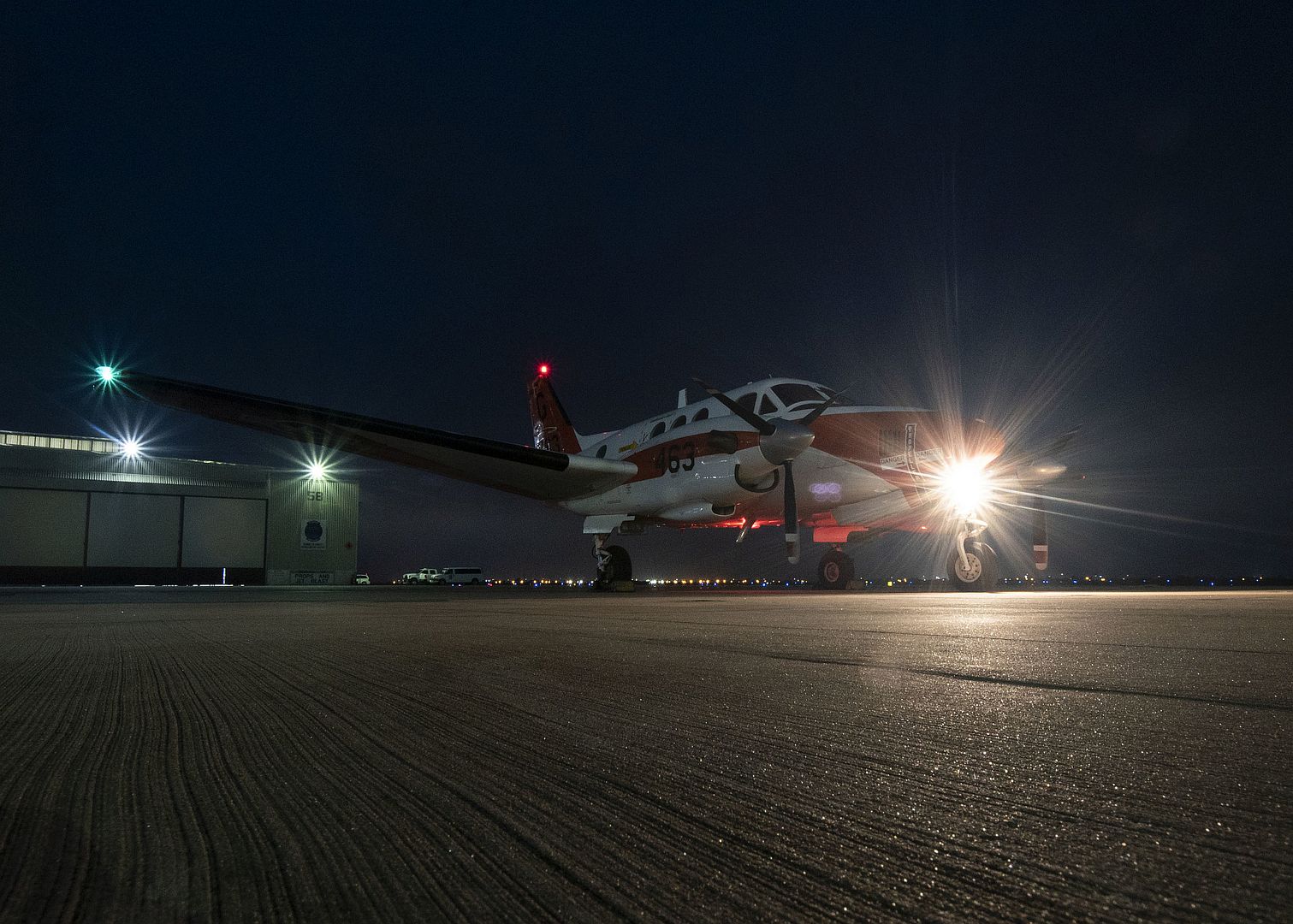
A U.S. B-52H Stratofortress aircraft assigned to the 20th Expeditionary Bomb Squadron taxis on a runway in the U.S. Central Command area of responsibility, May 8, 2019. The B-52H can perform strategic attack, close-air support, air interdiction, offensive counter-air and maritime operations, to support stability in the region through a dynamic defense posture. The Bomber Task Force is deployed to defend American forces and interests in the region. (U.S. Air Force photo by Tech. Sgt. Nichelle Anderson)
Members from the U.S. Forest Service fly in lead position to provide guidance for water drop placement as part of Modular Airborne Fire Fighting System training and recertification at Grand Canyon Hills, Colorado, May 6, 2019. Air National Guard and Air Force Reserve Airmen with the 153d AW with Wyoming, 302nd AW with Peterson AFB, 152nd AW with Reno along with the U.S. Forest Service spend the week to complete their annual aerial fire fighting training for the upcoming fire season. (U.S. Air National Guard photo by Staff Sgt. Jon Alderman)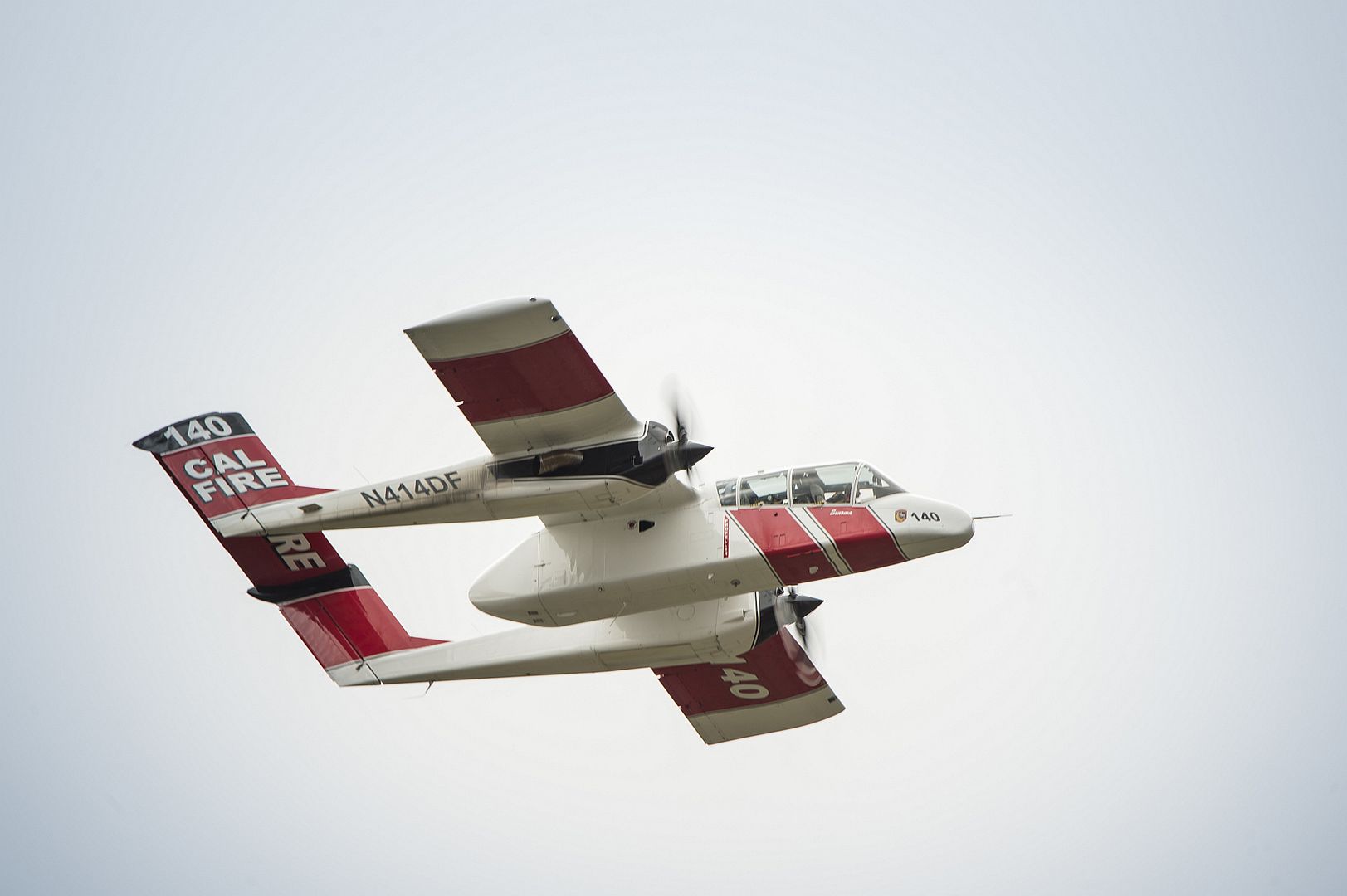
A C-130 from the 152nd Airlift Wing equipped with USDA Forest Service MAFFS II (Modular Airborne Fire Fighting System) positions to drop water as part of MAFFS training and recertification at Grand Canyon Hills, Colorado, May 6, 2019. Air National Guard and Air Force Reserve Airmen with the 153d AW with Wyoming, 302nd AW with Peterson AFB, 152nd AW with Reno along with the U.S. Forest Service spend the week to complete their annual aerial fire fighting training for the upcoming fire season. (U.S. Air National Guard photo by Staff Sgt. Jon Alderman)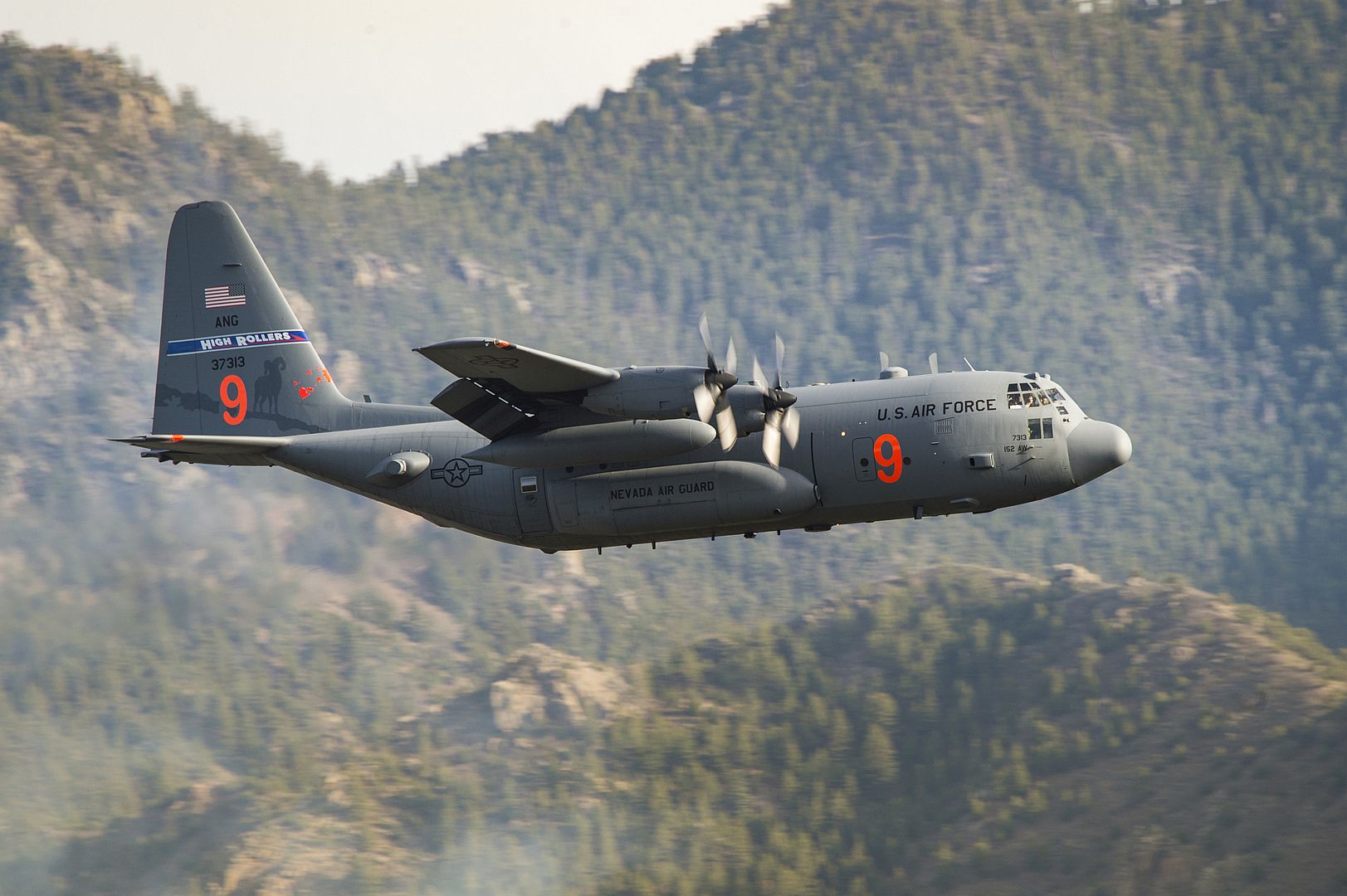
The first A330-900 widebody destined for Delta Air Lines made its inaugural test flight Tuesday from Toulouse airport. The highly fuel-efficient twin-engine jet, one of 35 Delta has on order, is due to be delivered to the Atlanta, Georgia-based airline in the coming weeks.
The A330-900 is the larger of the two A330neo variants that Airbus launched in 2014. The A330neo brings significant efficiency improvements while also introducing the award-winning Airspace by Airbus cabin, which offers the newest and most advanced in-flight experience with extra personal space, larger overhead luggage bins, latest generation in-flight entertainment system and state-of-the-art ambient lighting.
Incorporating the latest-generation Rolls-Royce Trent 7000 engines, along with aerodynamic enhancements ? including new extended composite wingtips which provide 3.7 metres of increased overall wing-span, as well as increased lift and reduced drag ? the A330neo is a more efficient aircraft, delivering 25% lower fuel burn than previous generation aircraft and the lowest seat-mile cost in its category. The A330-900 range is 6,550 nautical miles in a typical three-class configuration.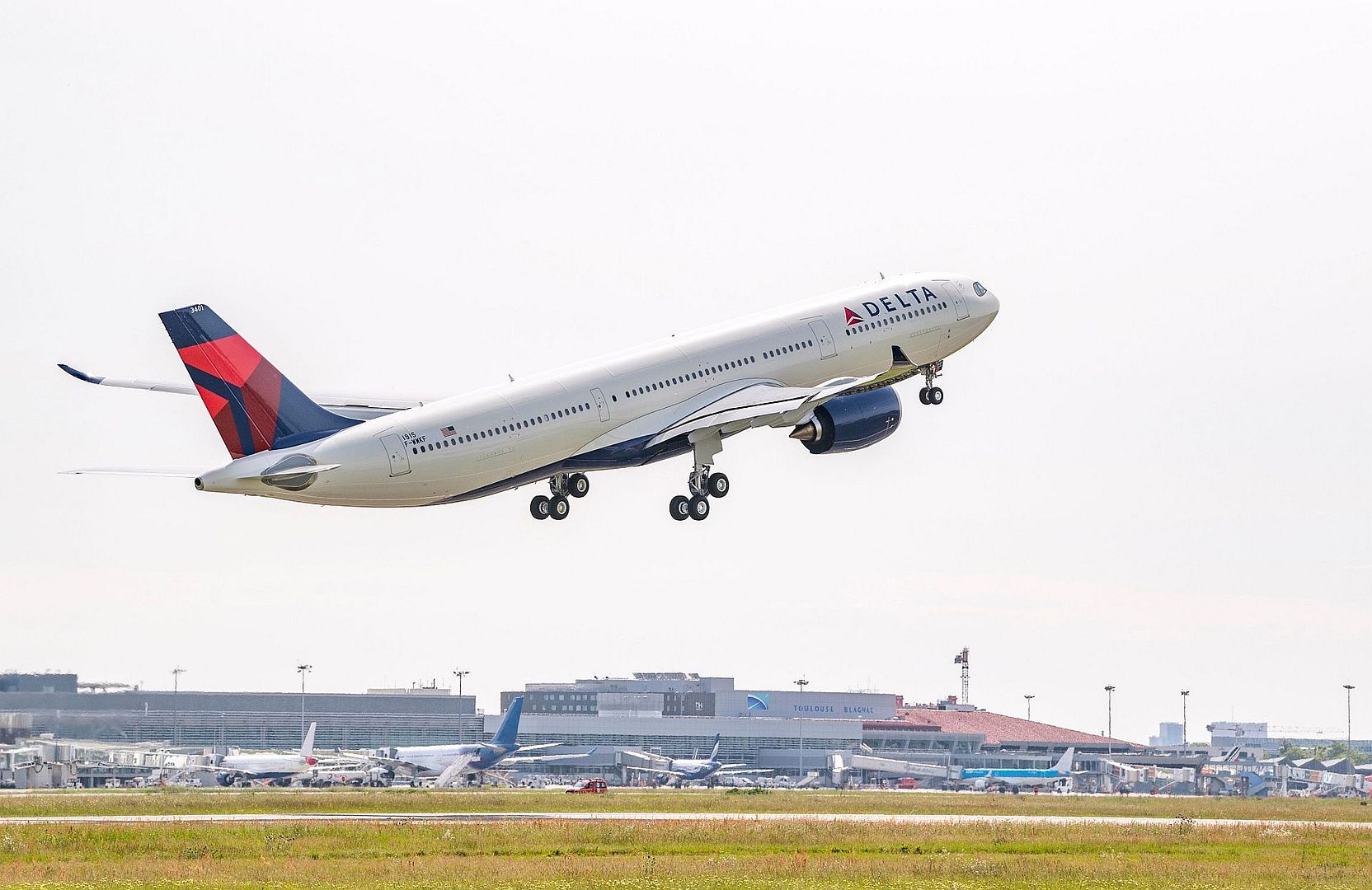
-
 Main AdminF-16CM Fighting Falcons from the 35th Fighter Wing, Misawa Air Base, flie during a routine training exercise off the coast of Japan, May 8, 2019. The 35th FW provides worldwide deployable forces with a sustained forward presence focused on maintaining a free-and-open Indo-Pacific. (U.S. Air Force photo's by Airman 1st Class Matthew Seefeldt)
Main AdminF-16CM Fighting Falcons from the 35th Fighter Wing, Misawa Air Base, flie during a routine training exercise off the coast of Japan, May 8, 2019. The 35th FW provides worldwide deployable forces with a sustained forward presence focused on maintaining a free-and-open Indo-Pacific. (U.S. Air Force photo's by Airman 1st Class Matthew Seefeldt)
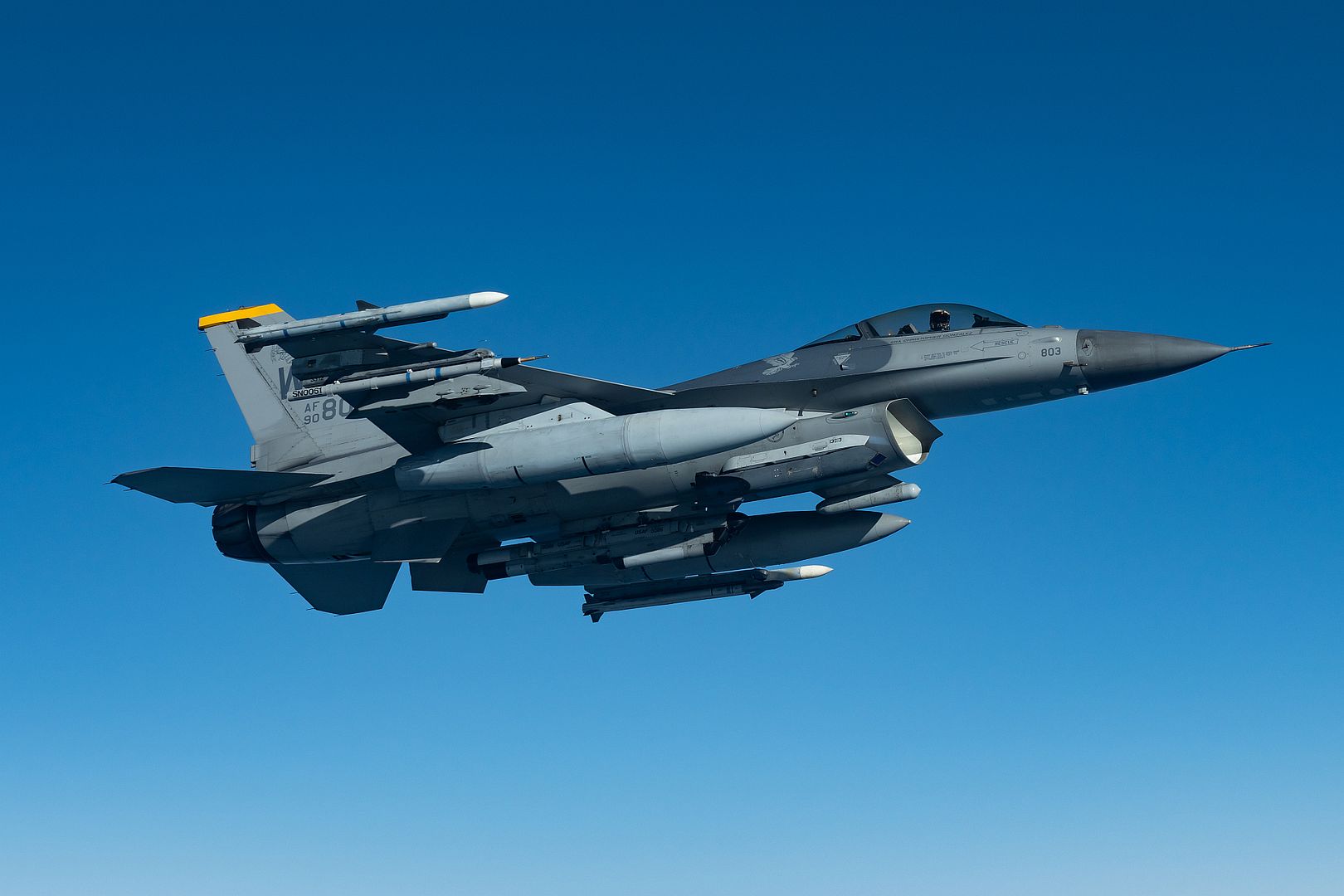
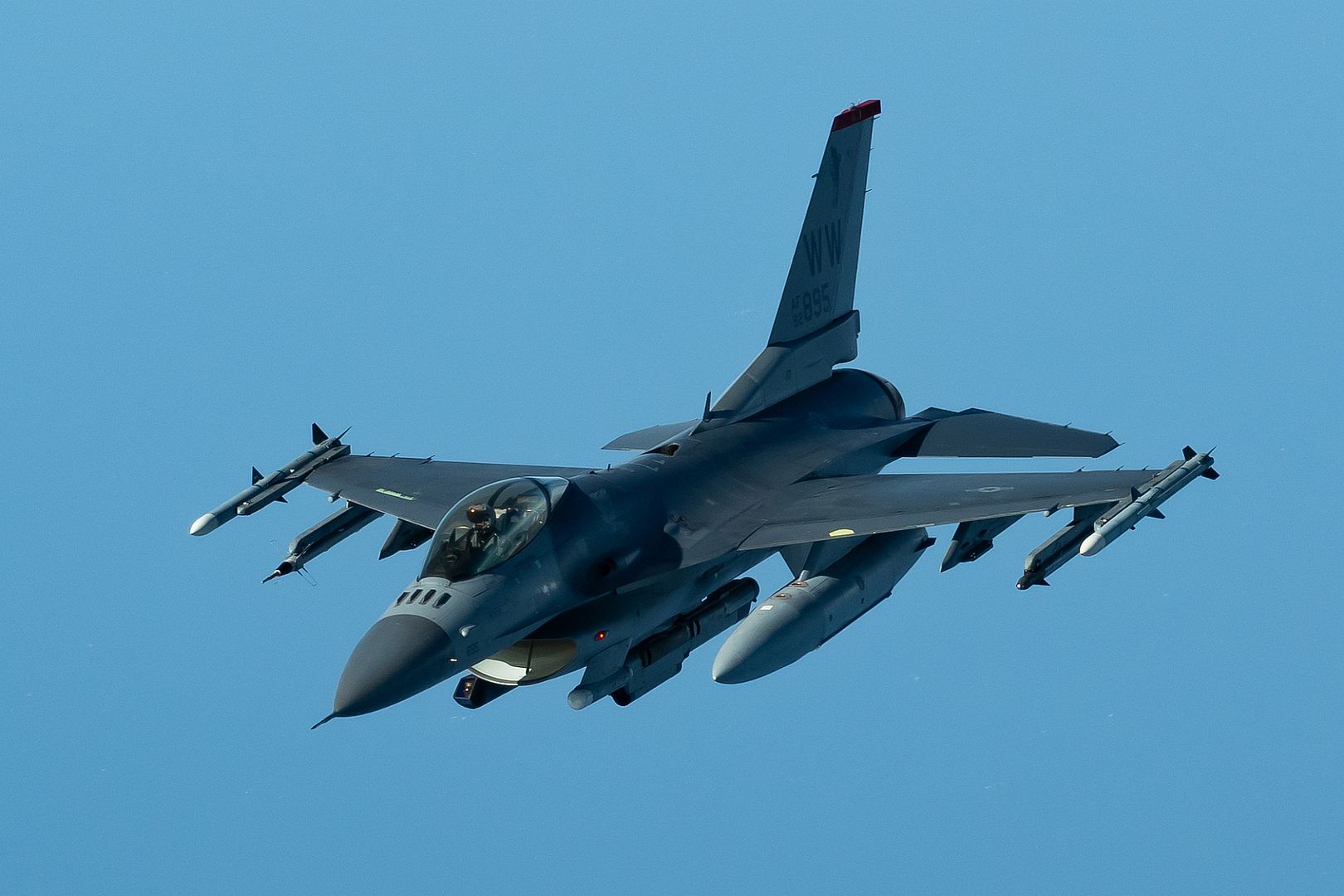

A Romanian MiG-21 LanceR is re-positioned near F-16C Fighting Falcon aircraft assigned to the 301st Fighter Wing, Naval Air Station Joint Base Fort Worth, Texas, deployed in support of Theater Security Package 19.1 as the 457th Expeditionary Fighter Squadron, Campia Turzii, Romania, May 10, 2019. Funded through the European Deterrence Initiative, TSP 19.1 provides a more robust U.S. military rotational presence in the European theater, capable of deterring, and if required, responding to regional threats. While in theater, these personnel and aircraft will participate in multiple readiness exercises alongside NATO allies and partners to strengthen interoperability and to demonstrate U.S. commitment to the stability and security of Europe (U.S. Air Force photo by 1st Lt. Andrew Layton).
Airmen prepare to do post-flight maintenance of a U.S. Air Force F-15C Eagle in Southwest Asia, May 8, 2019. U.S. Air Force fighter squadrons enhance regional partnerships and demonstrate a continued commitment to regional security and stability. This aircraft was moved within the theater to be best positioned to defend U.S. forces and interests in the region. (U.S. Air Force photo's by Tech. Sgt. Jocelyn A. Ford)
Starscream is real, who knew.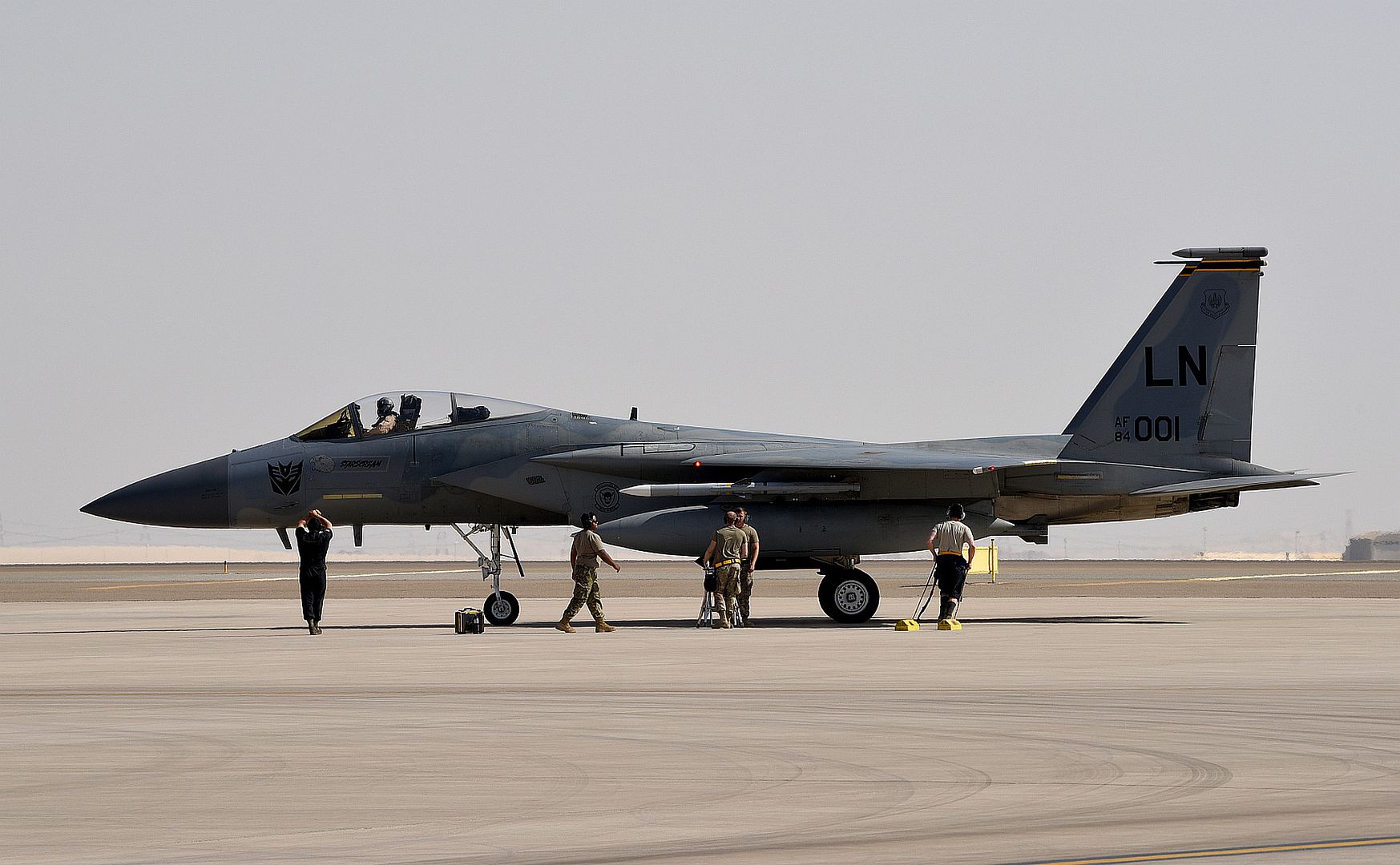

A U.S. Air Force C-5M Super Galaxy takes off during a readiness exercise at Travis Air Force Base, California, May 9, 2019. The base conducted a week-long exercise that evaluated Travis?s readiness and ability to execute and sustain rapid global mobility around the world. (U.S. Air Force photo by Heide Couch)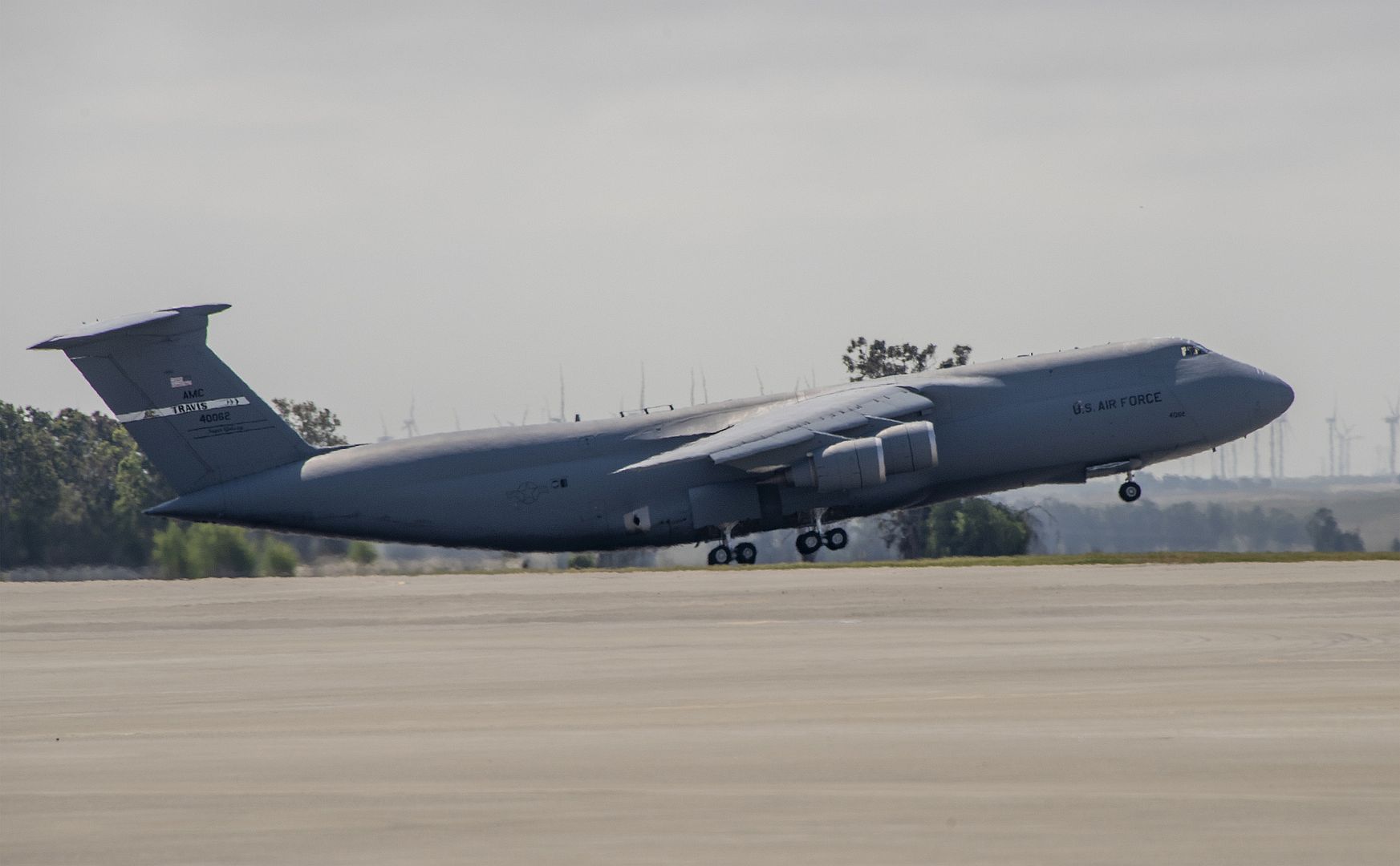
A U.S. Air Force KC-10 Extender, assigned to Travis Air Force Base, Calif., taxis onto the flightline for exercise Northern Edge, May 8, 2019, Joint Base Elmendorf-Richardson, Alaska. With participants and assets from the U.S Air Force, Marine Corps and Navy, Northern Edge is Alaska?s premier joint-training exercise designed to practice operations and enhanced interoperability among the services. (U.S. Air Force Airman 1st Class Caitlin Russell)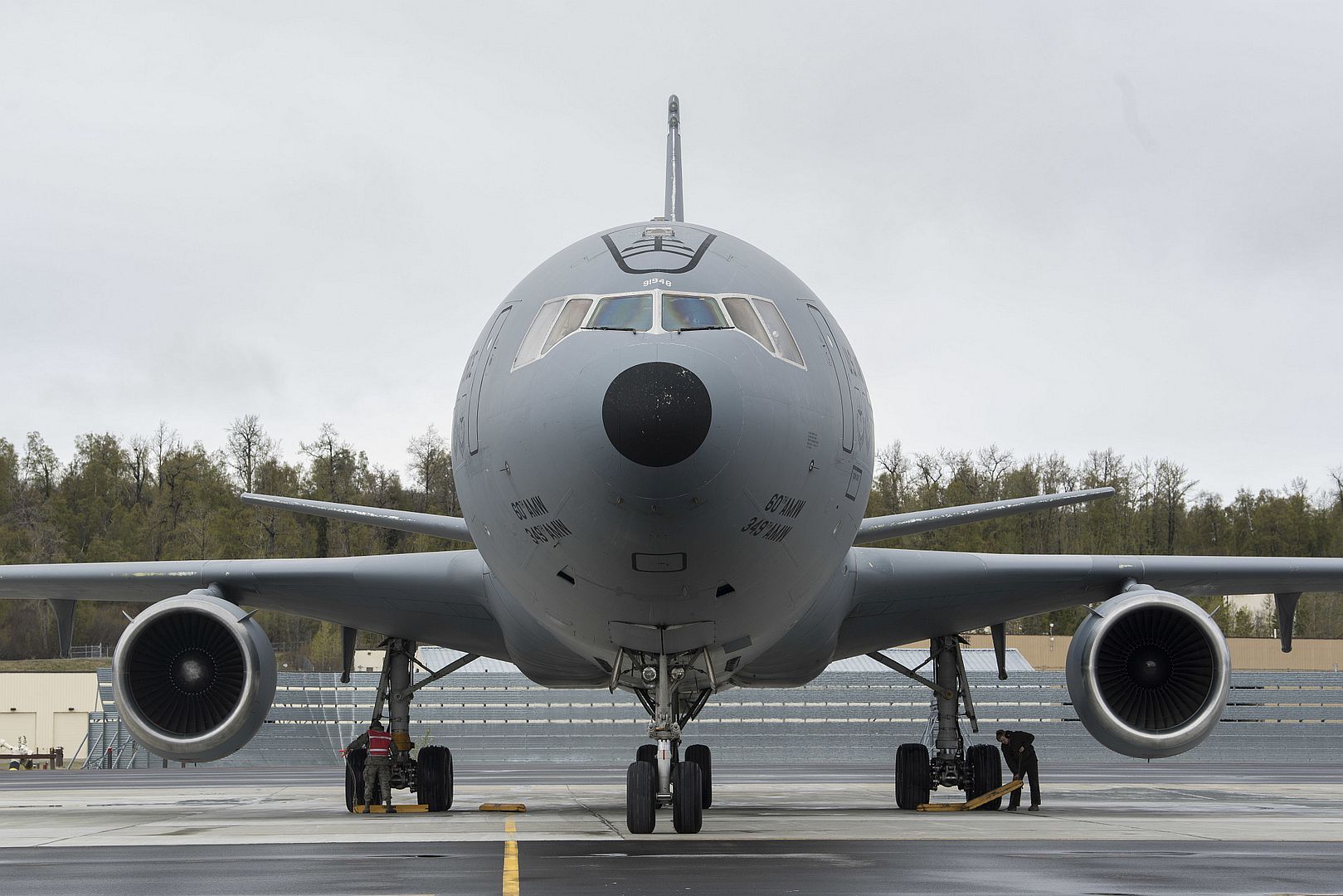
A U.S. Air Force F-15 Eagle assigned to the 44th Fighter Squadron from Kadena Air Base, Japan, lands in preparation for Northern Edge, May 8, 2019, at Eielson Air Force Base, Alaska, 2019. Northern Edge is an exercise showcasing the lethality of joint forces and the capabilities of U.S. forces in and around the Indo-Pacific region. (U.S. Air Force photo by Staff Sgt. Micaiah Anthony)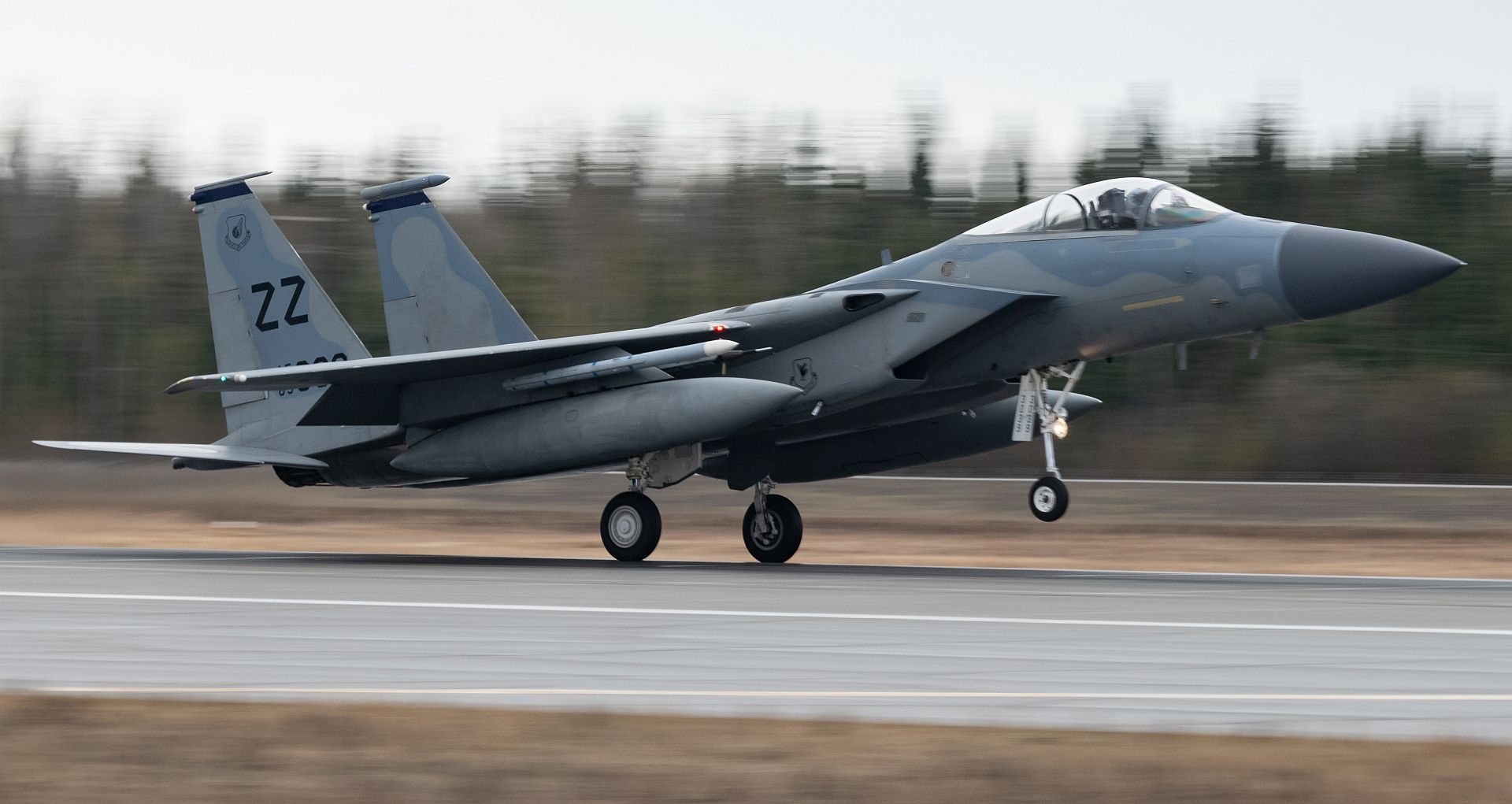
Airmen from multiple Air Force specialty codes perform a hot-pit refuel on an F-15 E Strike Eagle during the Combat Support Wing capstone, May 9, 2019, at Kinston Regional Jetport, North Carolina. A hot-pit is a term used to describe a jet being refueled on the ground while the engines are running. (U.S. Air Force photo by Senior Airman Kenneth Boyton)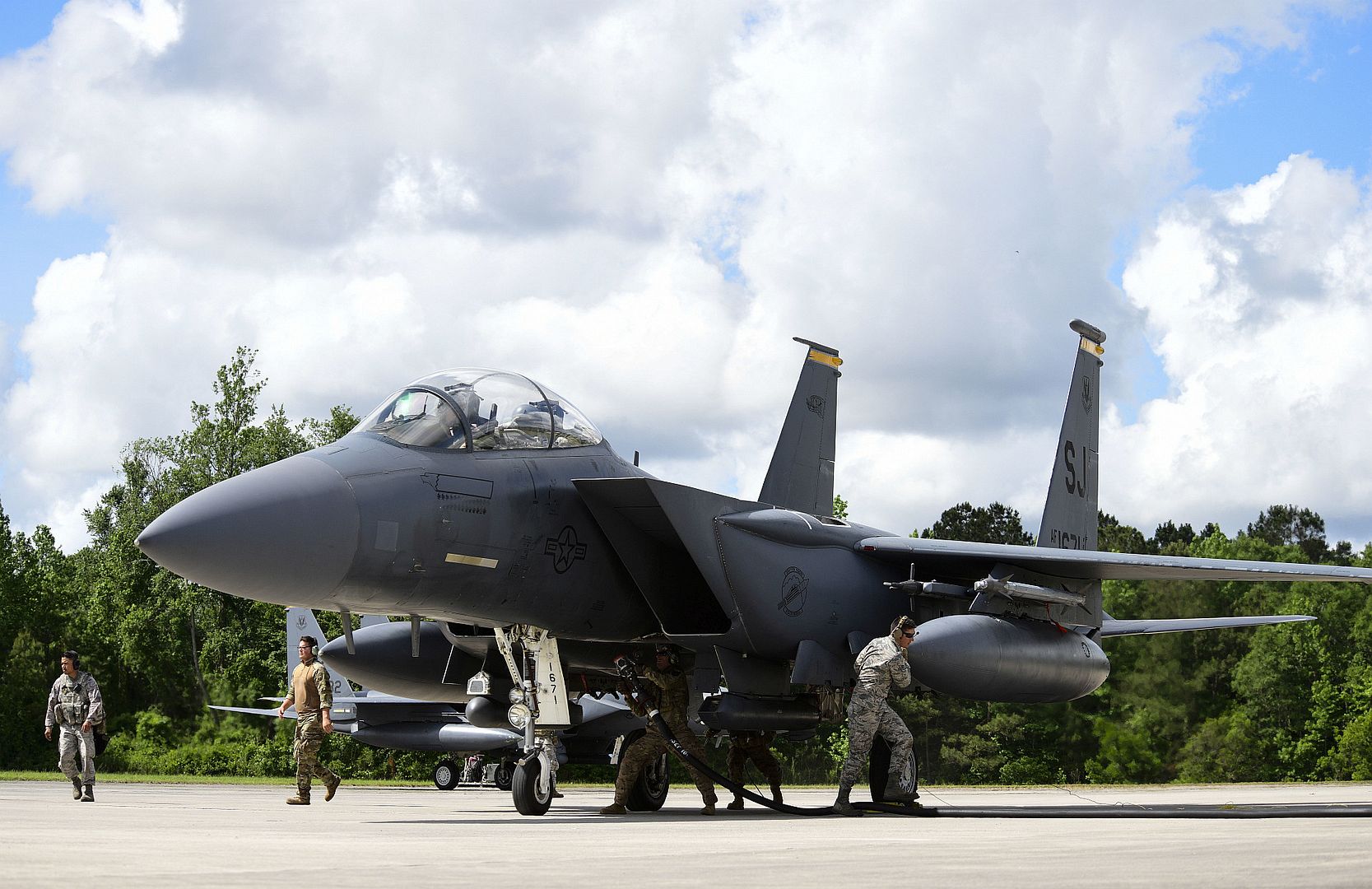
U.S. Air Force F-15C Eagles assigned to the 85th Test and Evaluation Squadron from Nellis Air Force Base, Nevada, arrive as part of exercise Northern Edge 19, May 8, 2019 at Joint Base Elmendorf-Richardson, Alaska. Northern Edge provides effective, capabilities-centered joint forces, ready for deployment world-wide and enables real-world proficiency in detection, identification and tracking of units at sea, in the air and on land and respond to multiple crisis in the Indo-Pacific. (U.S. Air Force photo by Master Sgt. Nathan Lipscomb)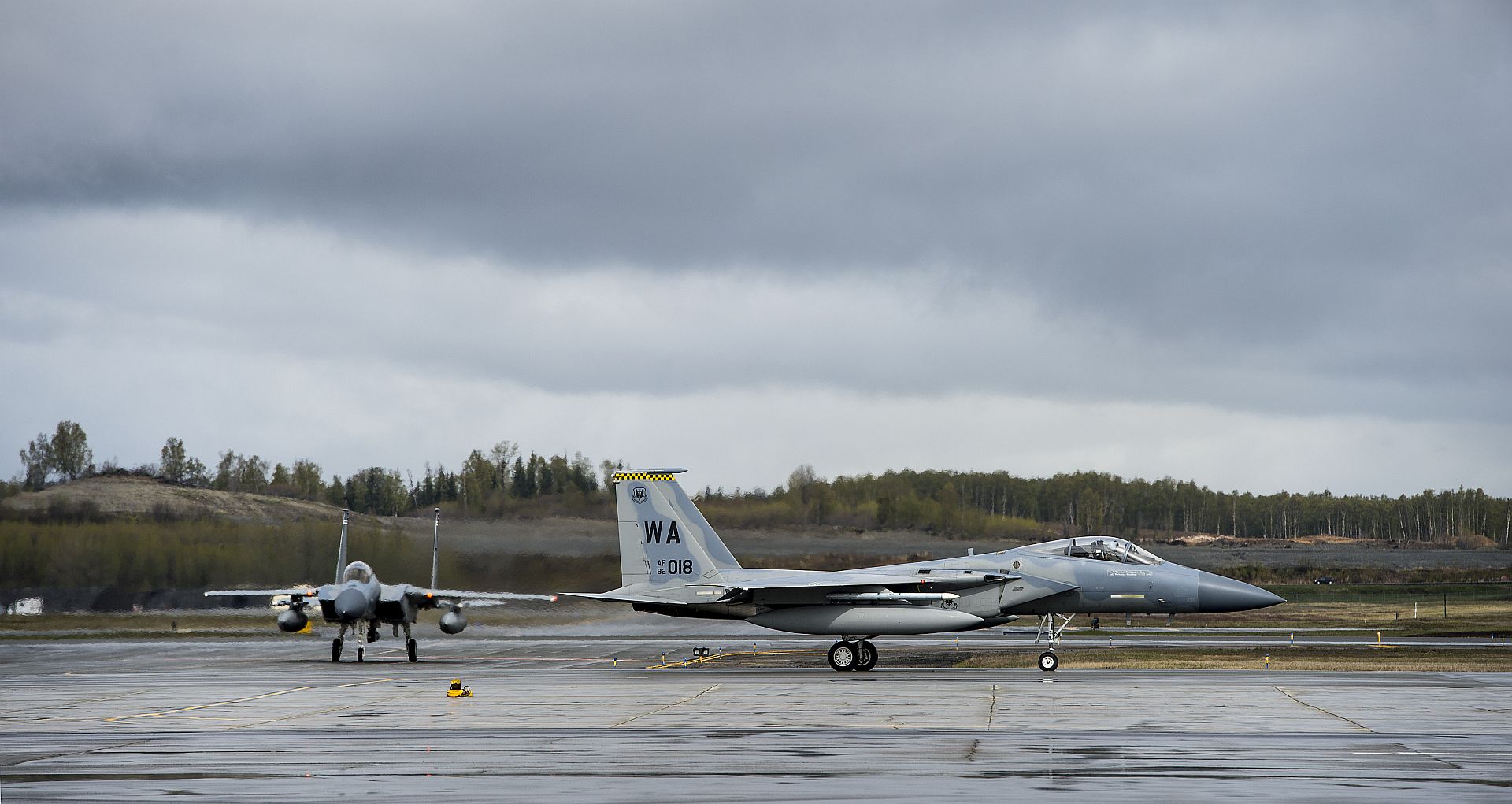
ARLINGTON, Va. (AFNS) --
The Air Force is reactivating the 65th Aggressor Squadron and moving 11 F-35A Lightning IIs to Nellis Air Force Base, Nevada, as part of a larger initiative to improve training for fifth generation fighter aircraft.
The action came after Gen. Mike Holmes, Air Combat Command commander, recommended improving training for fifth generation fighter tactics development and close-air support by adding F-35s to complement the fourth generation aircraft currently being used.
To support this requirement, the Air Force decided to create a fifth generation aggressor squadron at Nellis AFB and move nine non-combat capable F-35A aircraft from Eglin AFB, Florida, to the squadron.
?This move will allow us to repurpose early production F-35s to help train Airmen for the high end fight,? said Secretary of the Air Force Heather Wilson.
It also draws from a deep and successful history.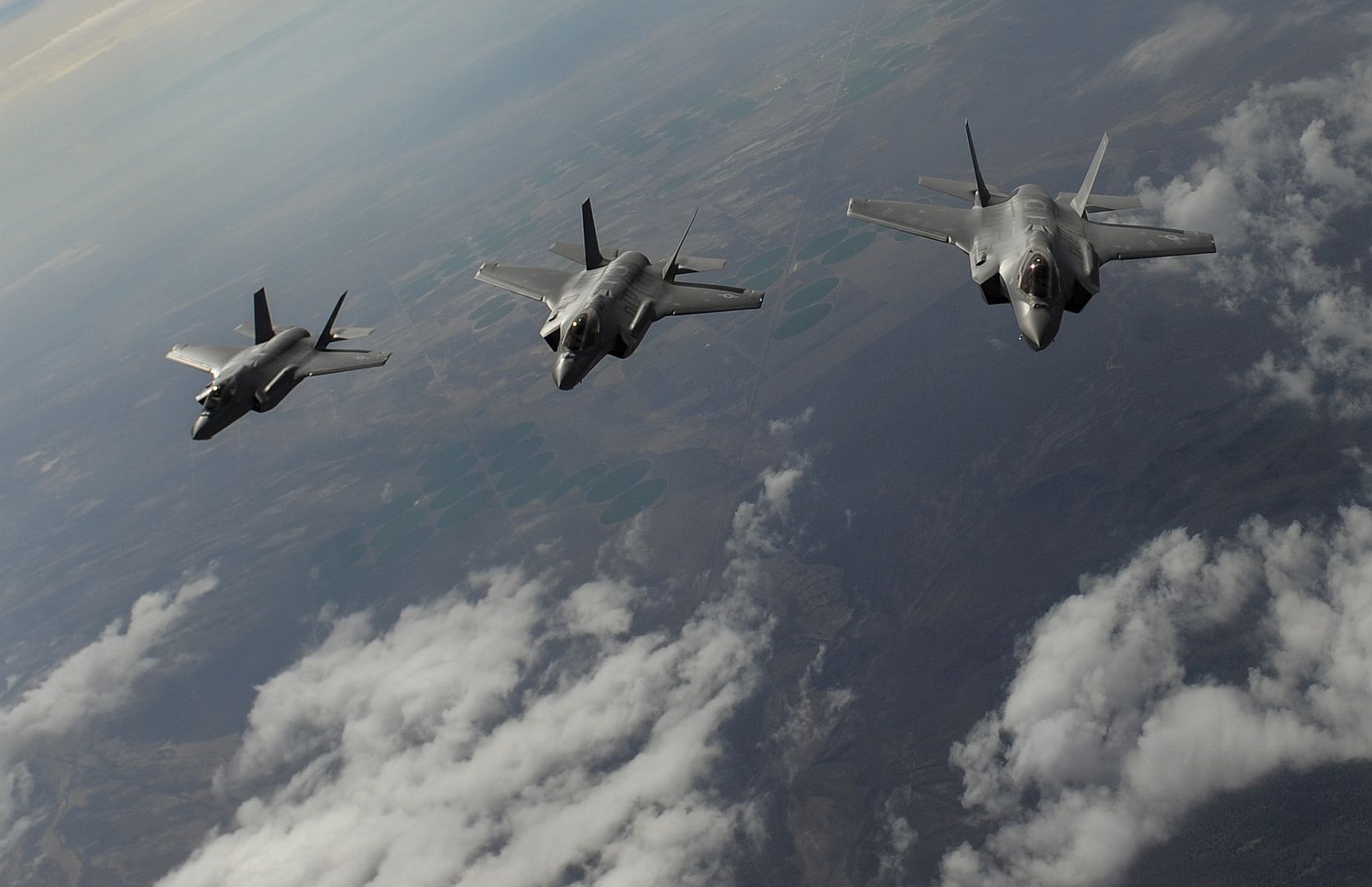
?Aggressor squadrons have been honing the skills of Air Force pilots since the early 1970s,? said Air Force Chief of Staff Gen. David L. Goldfein. ?They provide a dose of realism in air exercises and their training value is crucial. These F-35 aggressor aircraft will keep us ahead of adversaries for years to come.?
Aircraft transferring from Eglin AFB to Nellis AFB will not occur until newly produced aircraft arrive at Eglin AFB to replace them. New aircraft are planned to arrive at Nellis AFB beginning in early 2022.
The 65th AS, which previously flew F-15 Eagle aircraft, was inactivated in September 2014.
The Air Force will also assign two F-35A aircraft from Edwards AFB, California, to Nellis AFB to join the 24th Tactical Air Support Squadron. The 24th TASS is an F-16 Fighting Falcon squadron whose primary function is supporting and performing close-air support training. Introducing the F-35As from Edwards AFB will allow additional training for the F-35As as close-air support assets.
The reactivation of the aggressor squadron and the addition of aircraft to the tactical air support squadron will add approximately 194 additional military personnel and 37 contractors to the base.
As part of the strategic basing process, the Air Force determined Nellis AFB was uniquely suited to support the requirements of these missions because it hosts large Combat Air Forces exercises, U.S. Air Force Weapons School, Weapons Instructor Courses, a test and evaluation squadron and a close air support integration group.
The Air Force will make its final basing decision following compliance with the National Environmental Policy Act and other regulatory and planning processes.
(U.S. Air Force photos by Senior Airman Kevin Tanenbaum & Staff Sgt. Daryn Murphy/Released)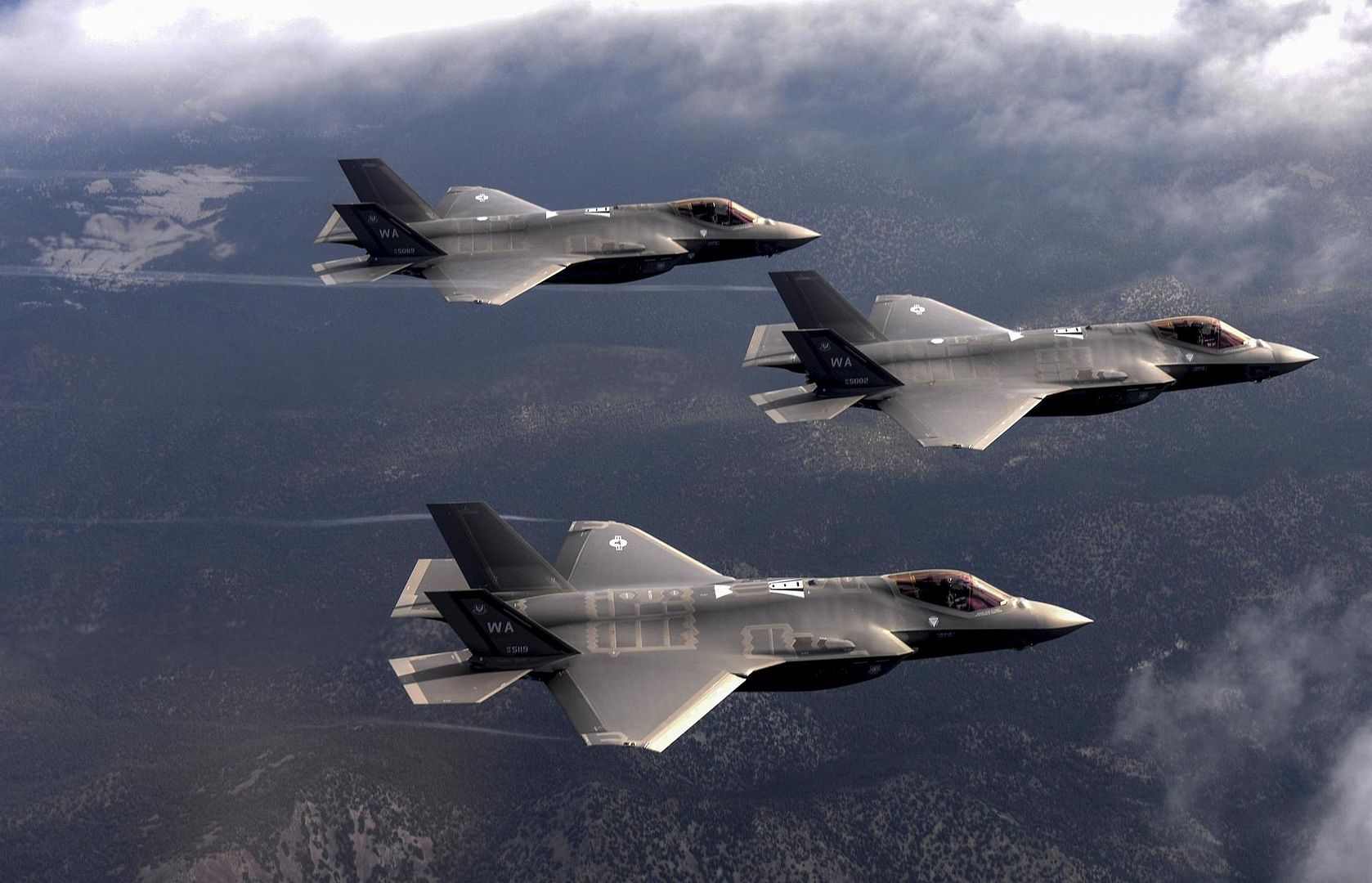
ARABIAN SEA (May 9, 2019) Cpl. Daniel White, left, instructs Cpl. Logan Shelton, both assigned to the 22nd Marine Expeditionary Unit, on turn around inspections for an AV-8B Harrier on the flight deck aboard the Wasp-class amphibious assault ship USS Kearsarge (LHD 3). Kearsarge is the flagship for the Kearsarge Amphibious Ready Group and, with the embarked 22nd MEU, is deployed to the U.S. 5th Fleet area of operations in support of naval operations to ensure maritime stability and security in the Central Region, connecting the Mediterranean and the Pacific through the western Indian Ocean and three strategic choke points. (U.S. Navy photo by Mass Communication Specialist Seaman Nicholas R. Boris/Released)
-
 Main AdminA U.S. Air Force B-52H Stratofortress aircraft assigned to the 20th Expeditionary Bomb Squadron taxis for takeoff on a runway at Al Udeid Air Base, Qatar, May 12, 2019. The B-52H supports stability in the region by providing its unique capabilities to the dynamic defense posture. This aircraft is part of the Bomber Task Force deployed to U.S. Central Command area of responsibility in order to defend American forces and interests in the region. (U.S. Air Force photo by Staff Sgt. Ashley Gardner)
Main AdminA U.S. Air Force B-52H Stratofortress aircraft assigned to the 20th Expeditionary Bomb Squadron taxis for takeoff on a runway at Al Udeid Air Base, Qatar, May 12, 2019. The B-52H supports stability in the region by providing its unique capabilities to the dynamic defense posture. This aircraft is part of the Bomber Task Force deployed to U.S. Central Command area of responsibility in order to defend American forces and interests in the region. (U.S. Air Force photo by Staff Sgt. Ashley Gardner)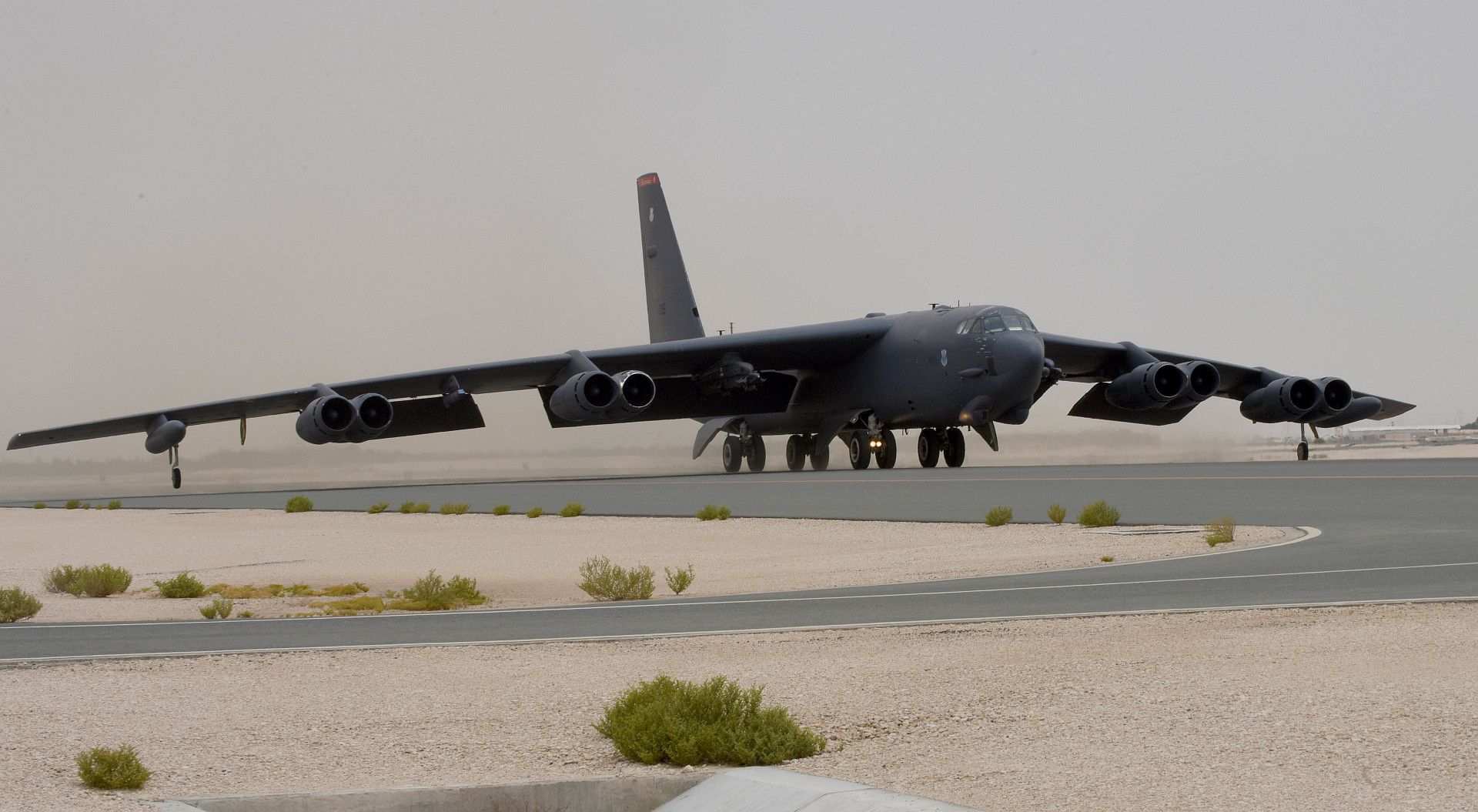
A U.S. B-52H Stratofortress aircraft assigned to the 20th Expeditionary Bomb Squadron refuels from a KC-135 Stratotanker assigned to the 28th Expeditionary Air Refueling Squadron, at an undisclosed location in Southwest Asia, May 12, 2019. The B-52H offers diverse capabilities including the delivery of precision weapons in support of the U.S. Air Forces Central Command mission to provide security and stability in the region. This was the first mission of the Bomber Task Force deployed to U.S. Central Command area of responsibility to defend American forces and interests in the region. (U.S. Air Force photo by Senior Airman Keifer Bowes)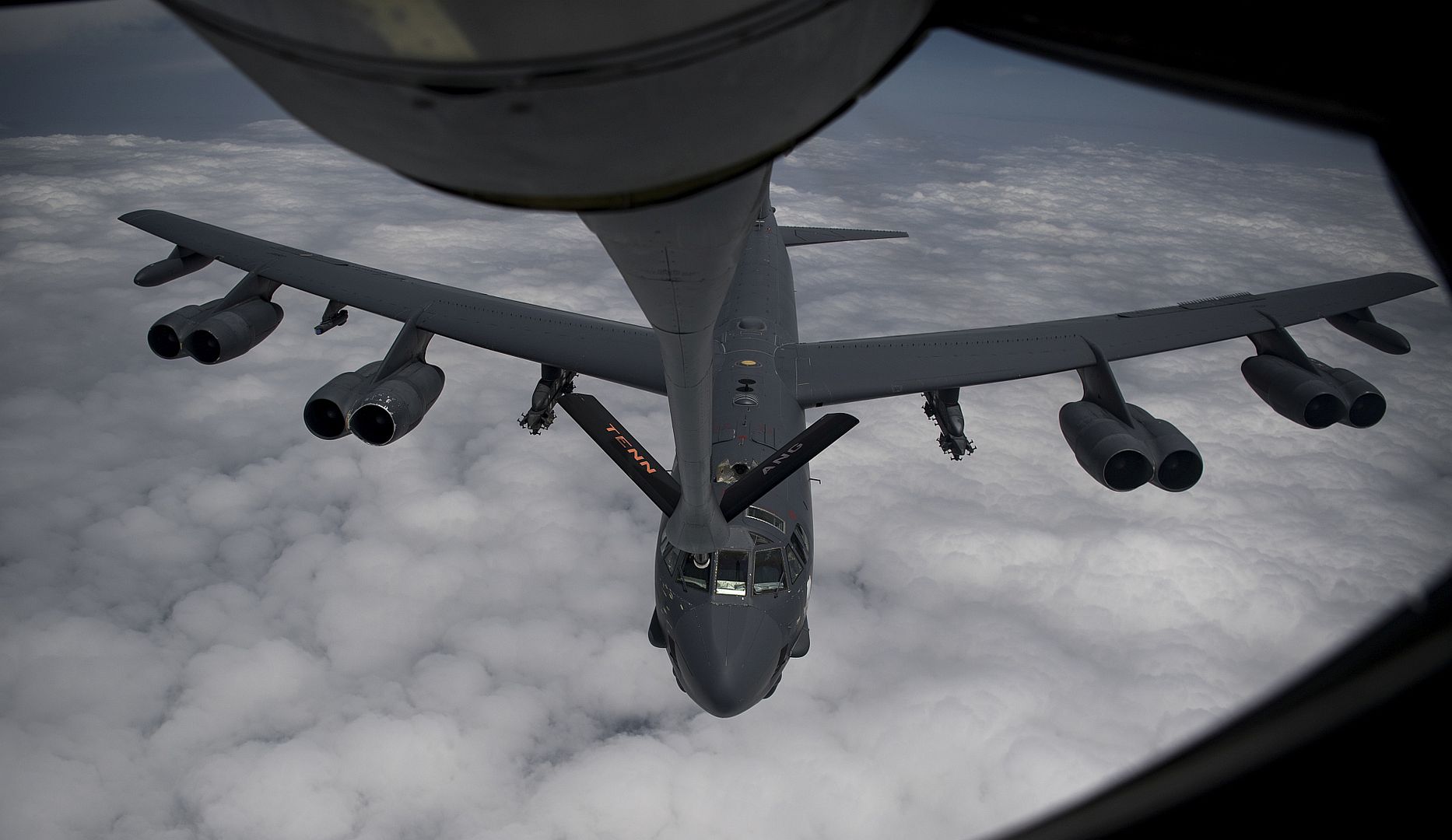
An Airman piloting an F-15C Eagle receives fuel from a KC-135 Stratotanker from the 28th Expeditionary Aerial Refueling Squadron, May 12, 2019, at an undisclosed location. The 28th EARS maintains constant presence in the U.S. Air Forces Central Command area of responsibility, supporting U.S. and Coalition aircraft in various operations conducted in Iraq, Syria, and Afghanistan. (U.S. Air Force photo by Senior Airman Keifer Bowes)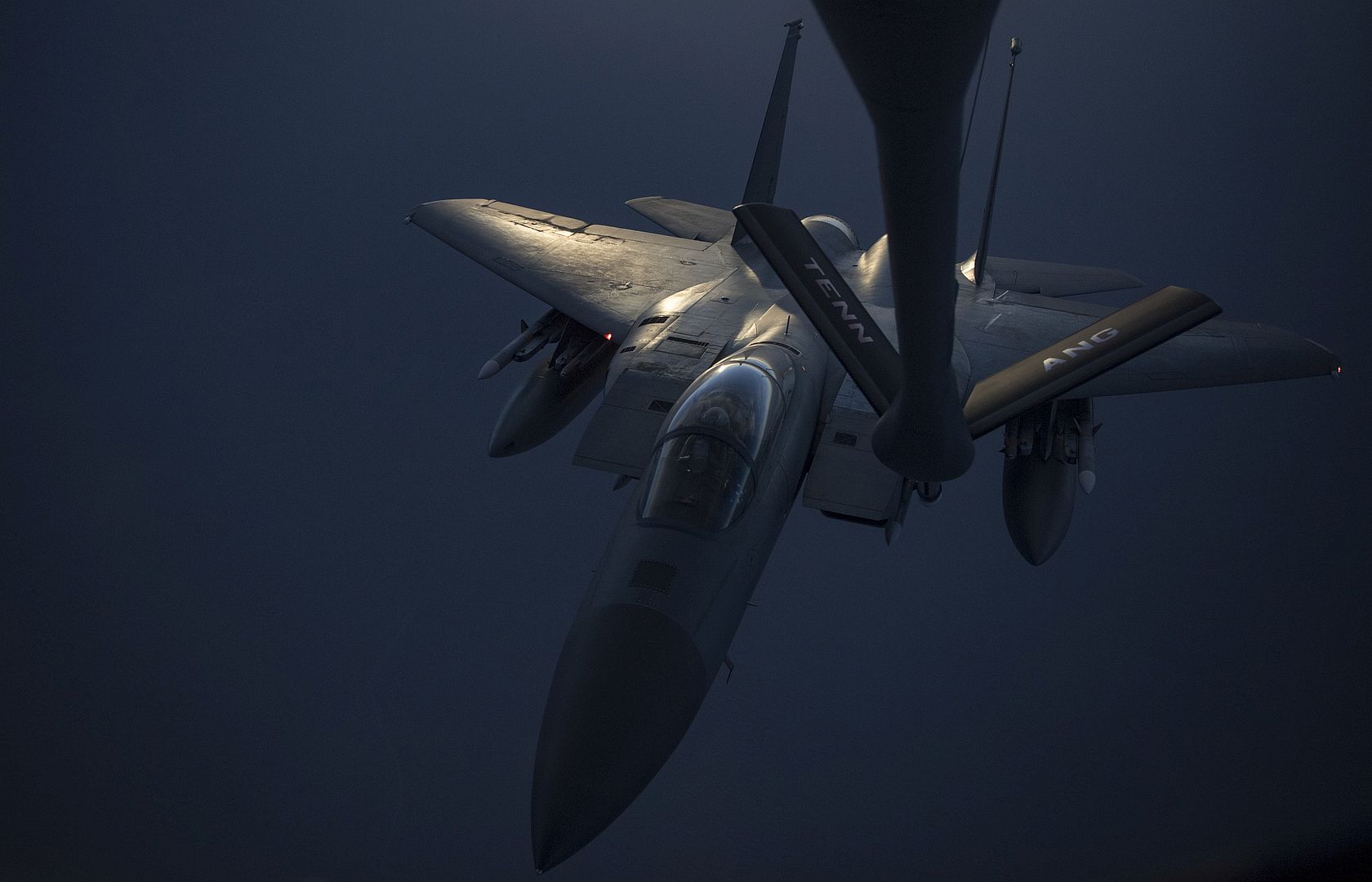
An Airman piloting an F-35A Lightning II receives fuel from a KC-135 Stratotanker from the 28th Expeditionary Aerial Refueling Squadron, May 12, 2019, at an undisclosed location. The 28th EARS maintains constant presence in the U.S. Air Forces Central Command area of responsibility, supporting U.S. and Coalition aircraft in various operations conducted in Iraq, Syria, and Afghanistan. (U.S. Air Force photo by Senior Airman Keifer Bowes)
An RQ-4 Global Hawk stationed at Grand Forks Air Force Base, North Dakota is proudly displayed May 11, 2019. Grand Forks AFB will soon be known as America's Global Hawk Base when the 319th Air Base Wing is re-designated as the 319th Reconnaissance Wing, June 28, 2019. The re-designation, initiated by Commander Air Combat Command Gen. Mike Holmes, aligns Grand Forks AFB's host wing and the 69th Reconnaissance Group. The 69 RG, which flies the high-altitude, remotely-piloted RQ-4 Global Hawk aircraft, has been aligned under the 9th Reconnaissance Wing at Beale Air Force Base, California, since it initiated operations as a tenant at Grand Forks AFB in 2011. (U.S. Air Force photo by Staff Sergeant Michael Reeves Jr.)
CORPUS CHRISTI, Texas (May 10, 2019) Training Air Wing 4's fleet of T-6B Texan II and T-44C Pegasus aircraft are carefully packed into a hangar to protect them from severe weather at Naval Air Station Corpus Christi, Texas, May 10, 2019. A crew worked through the night to ensure the aircraft were properly secured ahead of the storm. Training Air Wing 4 trains the world's premier military pilots in the primary, intermediate, and advanced phases of multi-engine aircraft training. (U.S. Navy photo by Lt. Michelle Tucker/Released)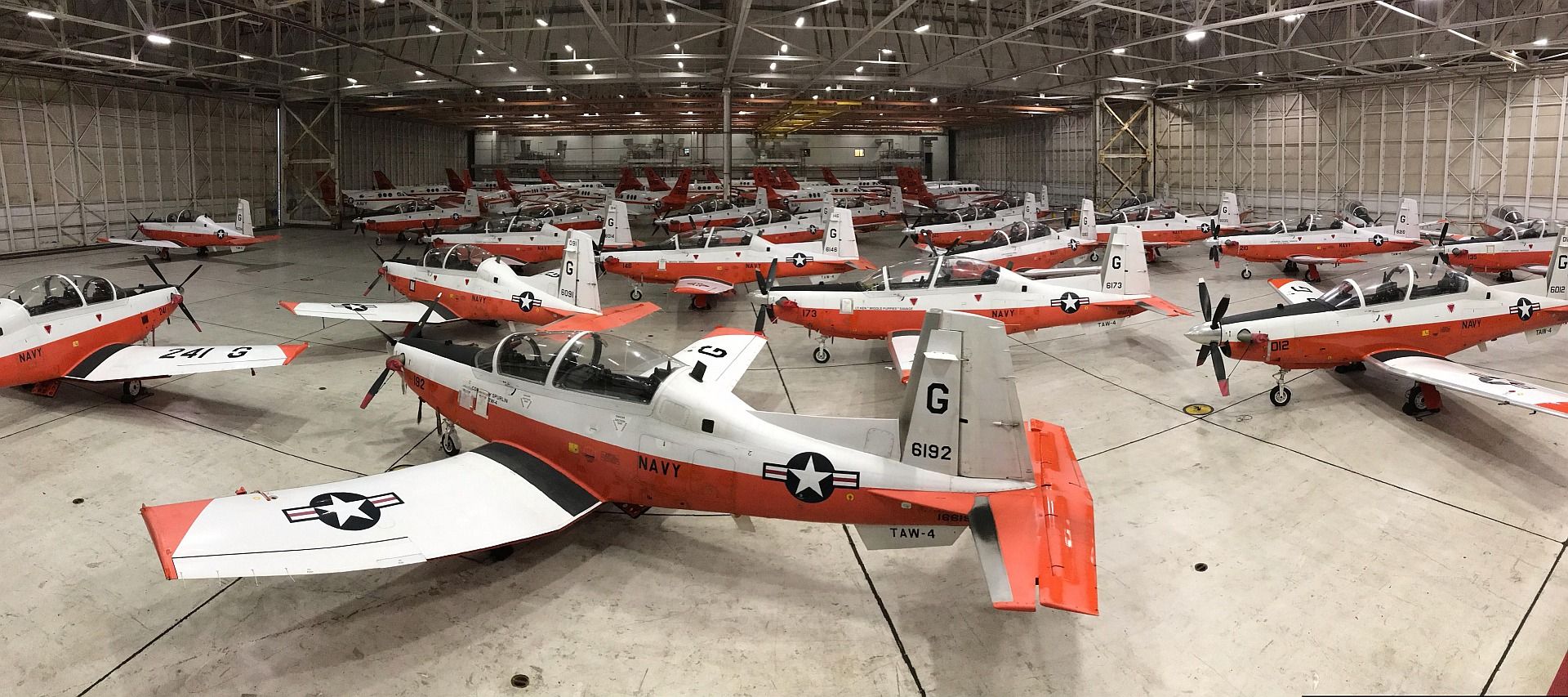
The first A330neo of the Americas has been delivered to Azul Linhas A?reas on lease from Avolon, becoming the first airline from the Americas to fly the A330-900. The aircraft is the first of 15 A330neo ordered by Avolon.
The A330neo, Airbus? new generation A330 aircraft, will be used by the airline to expand its international route network between Brazil and Europe and the United States. Fitted with a three-class cabin accommodating 34 business class, 96 economy Xtra and 168 economy class seats, the A330neo offers passengers greater comfort along with the newest and the most advanced in-flight experience while the airline will benefit from the aircraft?s unrivalled operating economics.
?We are very proud to be the first A330neo operator in the Americas. This new aircraft will play a key role in the expansion of our international markets supporting our strategy of having a modern and fuel-efficient fleet,? celebrated John Rodgerson, Azul?s CEO.
?With its many new features and an Airspace cabin, the A330neo can only add to Azul?s many travel awards,? said Christian Scherer, Airbus Chief Commercial Officer. ?Innovation-packed, superior passenger comfort and 25% fuel efficiency all rolled in to one ? that?s the A330neo.?
The A330neo is the true new-generation aircraft building on the most popular widebody A330?s features and leveraging on A350 XWB technology. Powered by the latest Rolls-Royce Trent 7000 engines, the A330neo provides an unprecedented level of efficiency ? with 25% lower fuel burn per seat than previous generation competitors. Equipped with the Airbus Airspace cabin, the A330neo offers a unique passenger experience with more personal space and the latest generation in-flight entertainment system and connectivity.
Founded in 2008, Azul is a Brazilian carrier that serves 108 destinations across South America, the United States and Portugal.
Airbus has sold 1,200 aircraft, has a backlog of nearly 600 and nearly 700 in operation throughout Latin America and the Caribbean, representing a 56% market share of the in-service fleet. Since 1994, Airbus has secured nearly 70% of net orders in the region.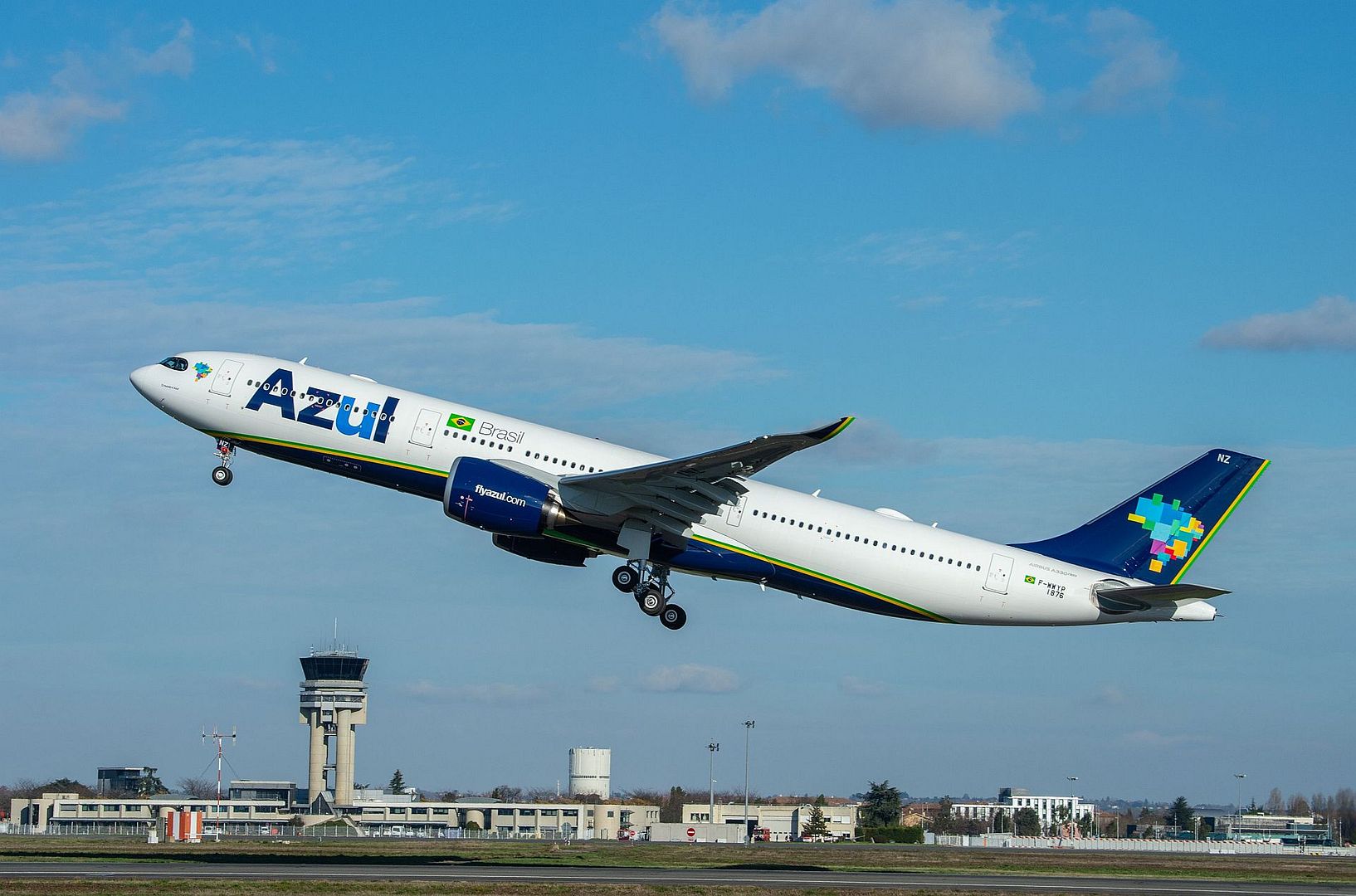
-
5 years agoTue May 14 2019, 09:46pm
 Main AdminKINSTON REGIONAL JETPORT, N.C. (AFNS) --
Main AdminKINSTON REGIONAL JETPORT, N.C. (AFNS) --
The Air Force completed the final test of an innovative warfighting concept May 12 that could be a game-changer for future adaptive-basing constructs.
The Combat Support Wing proof-of-concept capstone exercise developed by the Air Force Installation and Mission Support Center and hosted by Air Combat Command?s 4th Fighter Wing at Seymour Johnson Air Force Base, North Carolina, tested the ability of three teams of about 30 Airmen each to establish and operate an airfield in an austere environment. They had to defend the base and refuel and rearm F-15E Strike Eagles using multifunctional skills they learned during training events over the past month.
?We?ve seen monumental improvements in the ability of our Airmen to do things outside of their normal career fields and the speed at which they?re able to refuel and rearm jets,? said Brig. Gen. Brian Bruckbauer, AFIMSC director of expeditionary support and innovation. Bruckbauer?s directorate led the planning and execution of the exercise.
The concept supports National Defense Strategy priorities to evolve innovative operational concepts and enhance lethality in contested environments. If fielded, the CSW concept could give the Air Force the ability to rapidly deploy in smaller, more efficient and agile teams to austere and potentially contested areas. Under the multifunctional construct, weapons loaders could drive a refueling truck, security forces defenders could refuel a jet and avionics specialists could provide airfield security while also performing their primary duties.
CSW is an outcome of the 2017 AFIMSC Installation and Mission Support Weapons and Tactics Conference. The capstone was the final event in a phased rollout of the concept over the past year. It tested the hub-and-spoke operations of a single forward operating base at Seymour Johnson AFB and three forward operating locations at Kinston Regional Jetport, Moody AFB, Georgia, and MacDill AFB, Florida.
?We had at least 15 different Air Force specialty codes come in to attack the problem of how to conduct integrated combat turns with as few people and the smallest logistics footprint as possible,? said Col. Erik Rundquist, AFIMSC Detachment 8 commander, at Joint Base Langley-Eustis, Virginia, who was one of the primary architects responsible for turning the concept into practicable exercise scenarios.
Master Sgt. Jason Knepper, an Air Force Security Forces Center flight chief, joined the CSW cadre in January as a security forces functional lead. He?s said he?s seen ?tons? of progress since capstone participants began training in mid-April.
?We went from individual troops who had their skillset and a vague understanding about what everyone else was doing to now where you?ve got maintainers manning defensive fighting positions and cops helping refuel jets,? Knepper said. ?The construct for the multifunction approach is working really well. The people who built those pieces did a phenomenal job and now we?re seeing it work.?
He said Airmen can execute the concept very well when given the opportunity, training and motivation to see why it?s important. One of those Airmen was Senior Airman Darian Betancourt, an aircraft armament systems specialist at the 4th FW. He learned how to drive R-11 fuel trucks, palletize cargo, conduct tactical combat casualty care and defend the base.
?It?s been different. It?s been fun too,? Betancourt said. ?You gain appreciation for your job and other people?s jobs and you learn what they do.?
He said the experience was eye-opening.
?There?s so much to the Air Force that people don?t get to see and doing something like this really shows that,? Betancourt said. ?If everybody could do this (multifunctional learning), that would be something special.?
The AFIMSC Expeditionary Support Directorate is now expected to produce a report for Air Force leaders that includes data on more than 100 measures of effectiveness.
?We?ll be able to provide our senior leaders with a very thorough analysis and some very good recommendations going forward on force structure, force presentation and multi-functional training with the goal of using this concept in our operational plans,? Bruckbauer said.
The CSW concept will be included in the Rapid Forge exercise scheduled for July 10-26 in Europe.
(U.S. Air Force photo by Senior Airman Kenneth Boyton)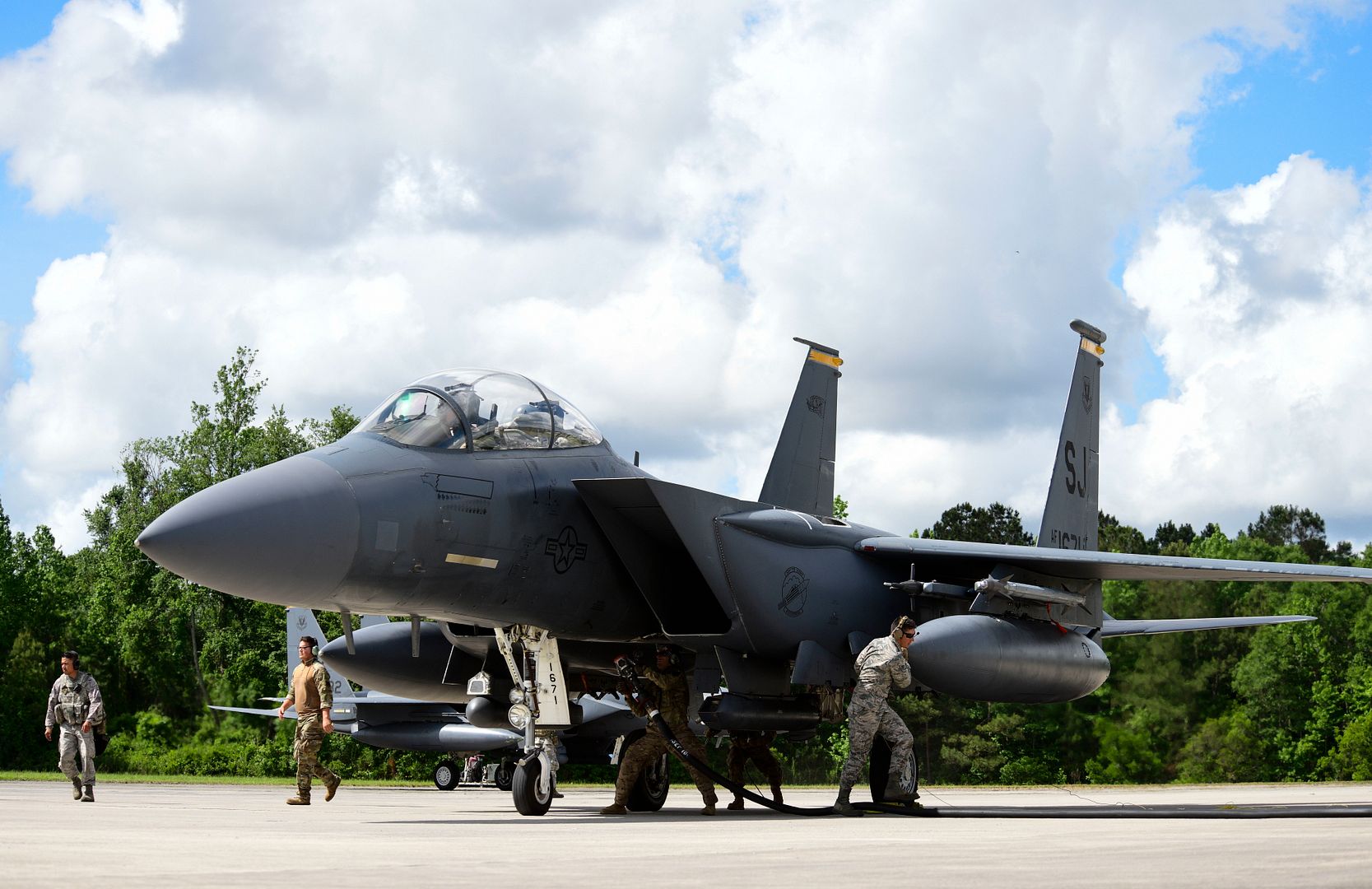
Lt. Col. Samuel Moore, pilot, and Lt. Col. Christopher Jackson, co-pilot, take off from the runway in a T-38C Talon assigned to the 560th Flying Training Squadron from Joint Base San Antonio-Randolph, Texas, May 13, 2019. The 560th FTS uses the T-38C Talon to teach students pilot instructor training and introduction to fighter fundamentals. Moore and Jackson are both assigned to the 340th Flying Training Group. (U.S. Air Force photo by MSgt Christopher Boitz)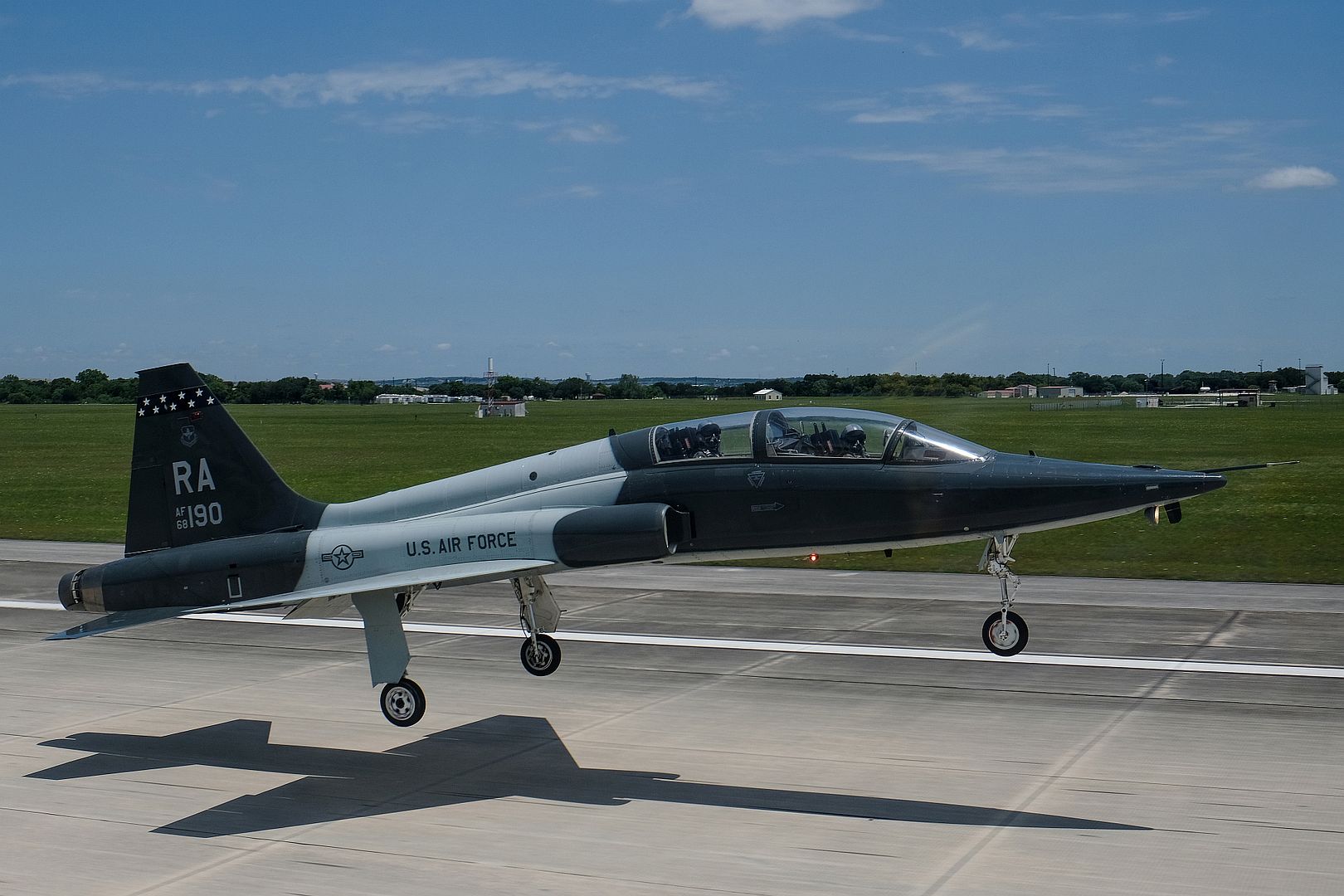
Lt. Col. Samuel Moore, pilot, and Lt. Col. Christopher Jackson, co-pilot, fly a T-38C Talon assigned to the 560th Flying Training Squadron near Joint Base San Antonio-Randolph, Texas, May 13, 2019. The 560th FTS uses the T-38C Talon to teach students pilot instructor training and introduction to fighter fundamentals. Moore and Jackson are both assigned to the 340th Flying Training Group. (U.S. Air Force photo's by MSgt Christopher Boitz)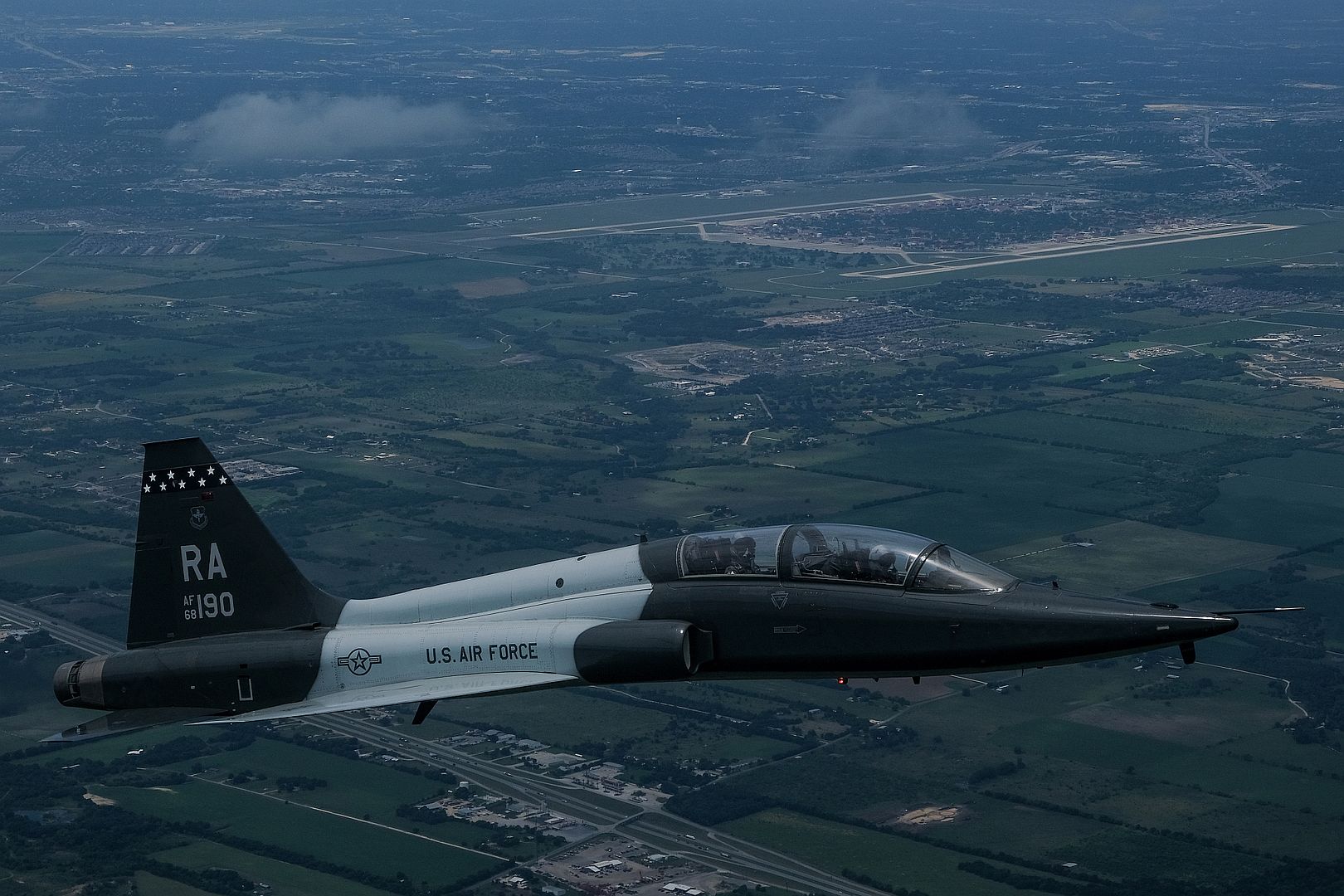
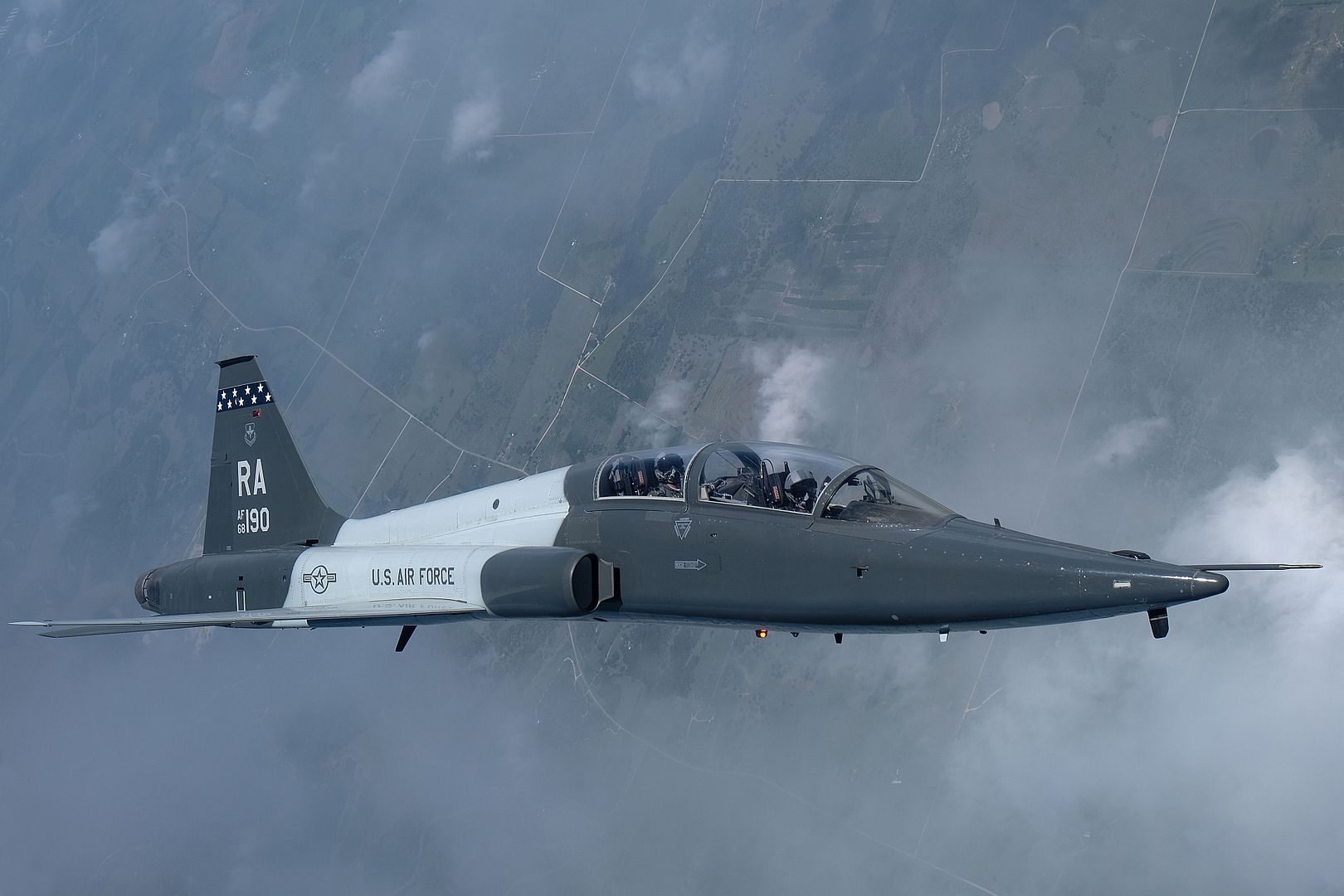
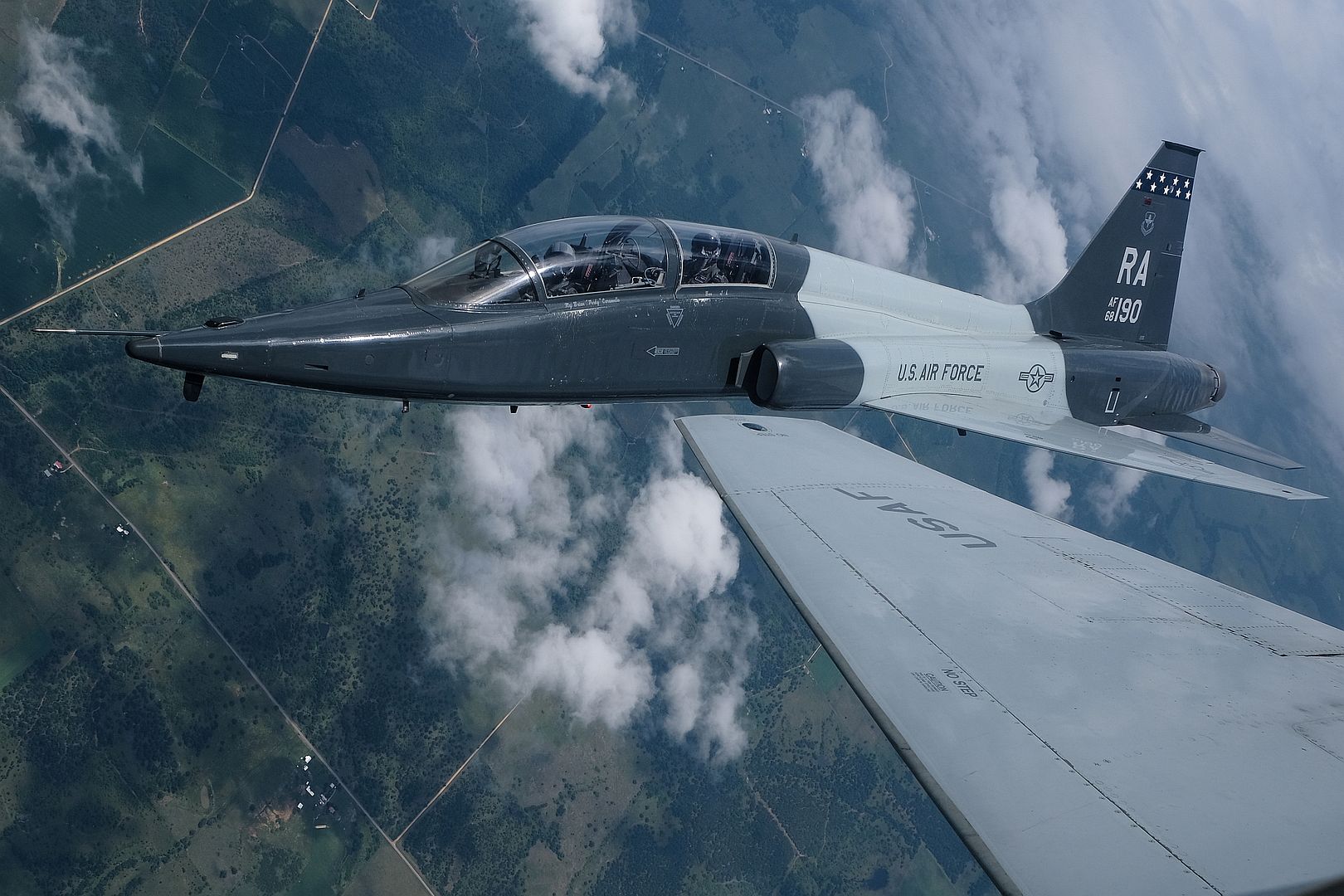
PACIFIC OCEAN (May 13, 2019) An E/A-18G Growler, assigned to the ?Gray Wolves? of Electronic Attack Squadron (VAQ) 142, flies over the flight deck of the aircraft carrier USS Theodore Roosevelt (CVN 71) while participating in Exercise Northern Edge 2019. Northern Edge is one in a series of U.S. Indo-Pacific Command exercises in 2019 that prepares joint forces to respond to crisis in the Indo-Pacific region. (U.S. Navy photo by Mass Communication Specialist 3rd Class Andrew Langholf/Released)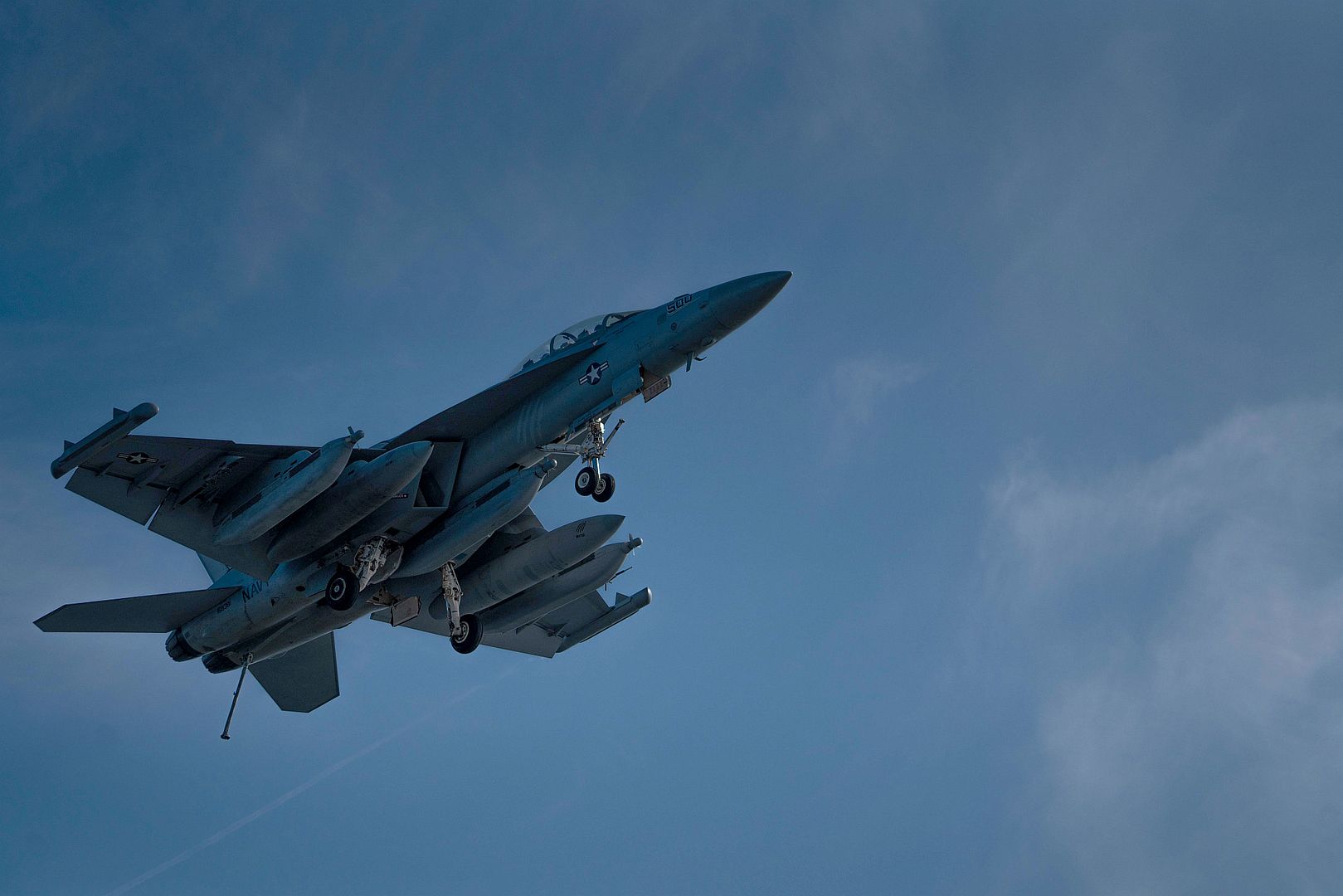
PACIFIC OCEAN (May 13, 2019) An F/A-18E Super Hornet, assigned to the ?Tomcatters? of Strike Fighter Squadron (VFA) 31, launches from the flight deck of the aircraft carrier USS Theodore Roosevelt (CVN 71) while participating in Exercise Northern Edge 2019. Northern Edge is one in a series of U.S. Indo-Pacific Command exercises in 2019 that prepares joint forces to respond to crisis in the Indo-Pacific region. (U.S. Navy photo by Mass Communication Specialist 3rd Class Andrew Langholf/Released)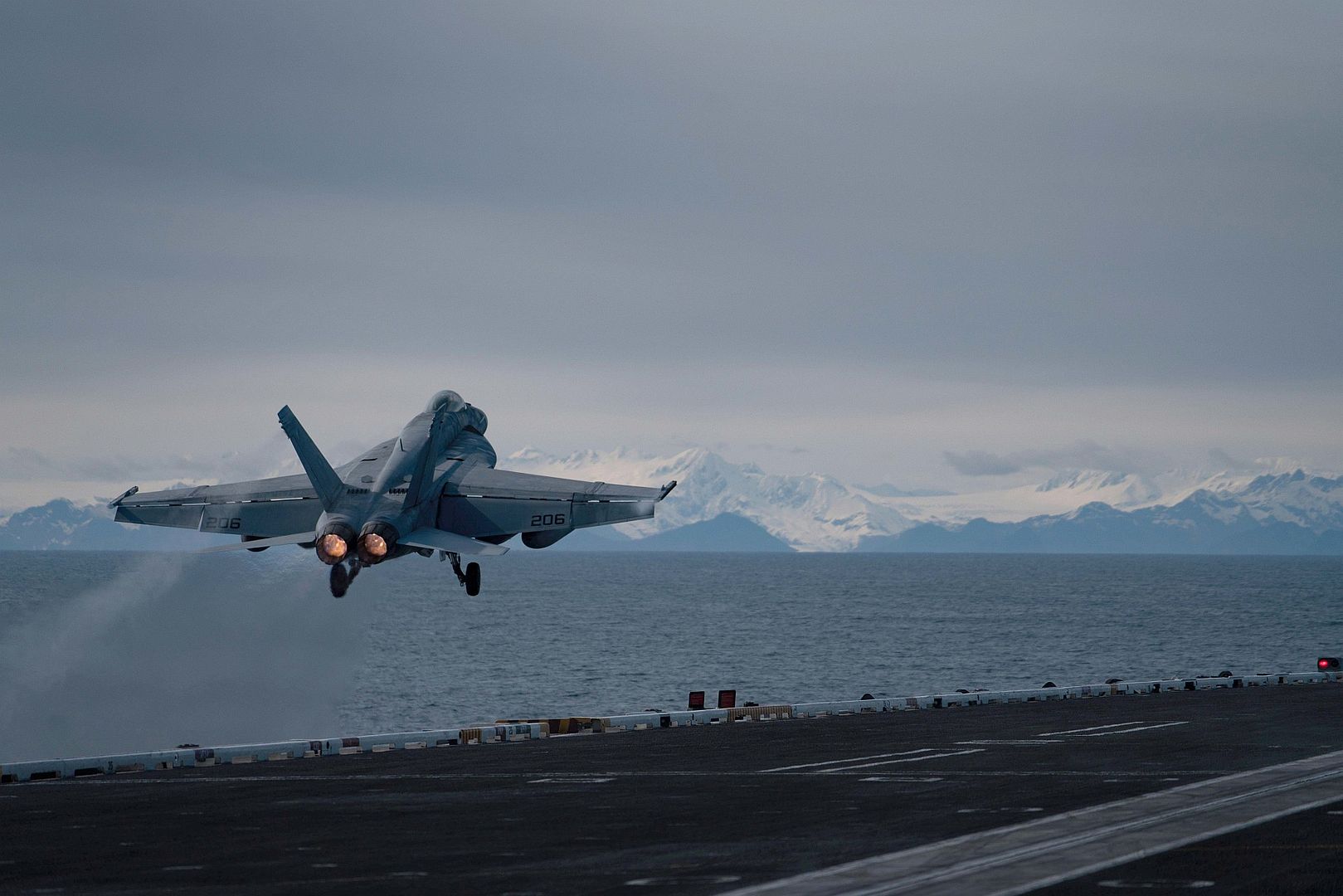
PACIFIC OCEAN (May 13, 2019) An E/A-18G Growler, assigned to the ?Gray Wolves? of Electronic Attack Squadron (VAQ) 142, launches from the flight deck of the aircraft carrier USS Theodore Roosevelt (CVN 71) while participating in Exercise Northern Edge 2019. Northern Edge is one in a series of U.S. Indo-Pacific Command exercises in 2019 that prepares joint forces to respond to crisis in the Indo-Pacific region. (U.S. Navy photo by Mass Communication Specialist 3rd Class Andrew Langholf/Released)
Amsterdam, Netherlands, May 14, 2019 ? Great Dane Airlines, from Denmark, has become the most recent customer of the Embraer E-Jets. Embraer welcomed their newest operator at Embraer?s annual European Airlines Business Seminar, held this year in Amsterdam. Based at Aalborg Airport in Denmark, Great Dane begins operations in June with two E195 jet aircraft.
As well as offering charter services to the market, Great Dane will initially serve routes to Chania, Mallorca, Varna, and Rhodes. Soon after, the airline will add Dublin, Edinburgh, and Nice to their network. Both aircraft were purchased from Stobart Air.
Thomas M?ller, Founder and CEO of Great Dane Airlines said, ?Our mission is to provide the much needed connectivity so far denied to Northern Jutland as these popular routes are too thin to support large narrow body operations profitably. Embraer?s expertise in regional operations and our common focus on ?right-sizing? makes their E-Jets the perfect solution to developing these routes.?
?Embraer?s range of commercial aircraft is specifically designed to offer the right-sized aircraft to develop new routes and markets, boosting connectivity; goals we share with Great Dane?, said Martyn Holmes, Vice President, Europe, Russia & Central Asia, Embraer Commercial Aviation. ?Embraer is proud to welcome Great Dane Airlines to the ever expanding base of E-Jets operators in Europe.?
Embraer is the world?s leading manufacturer of commercial aircraft up to 150 seats with more than 100 customers from all over the world. For the E-Jets program alone, Embraer has logged more than 1,800 orders and 1,500 aircraft have been delivered. Today, E-Jets are flying in the fleet of 75 customers in 50 countries. The versatile 70 to 150-seat family is flying with low-cost airlines as well as with regional and mainline carriers.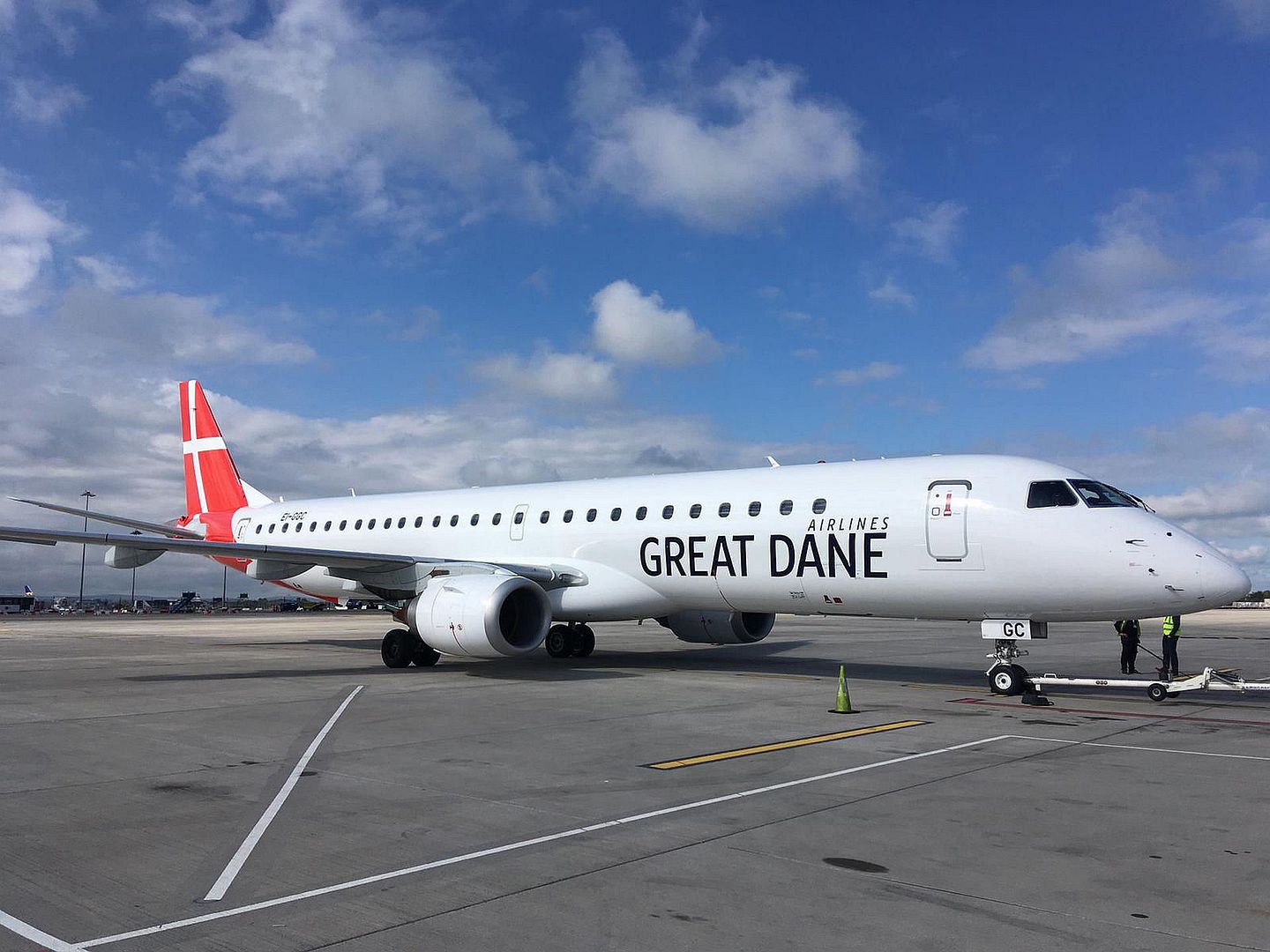
Tiger meet 2019
Organized by the Escadron de Chasse 3/30 "Lorraine", this 55th edition will gather over a dozen days, no less than 700 aviators and 800 foreign participants.
On the program for our "Tigers": sharing experience, strengthening interoperability and transmission of know-how in a strong context of team spirit and respect for traditions.
Photo's courtesy Armee de l'air.
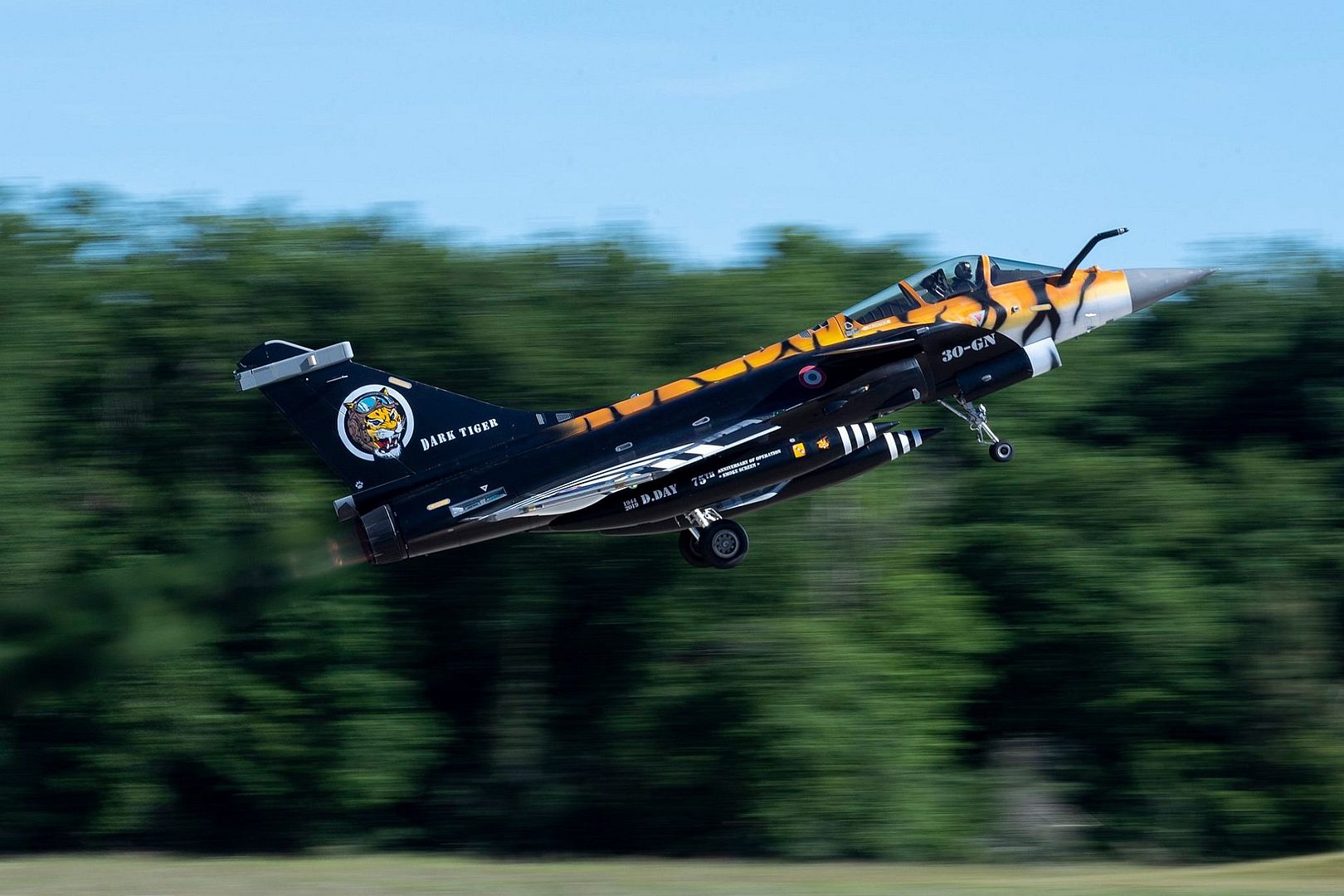
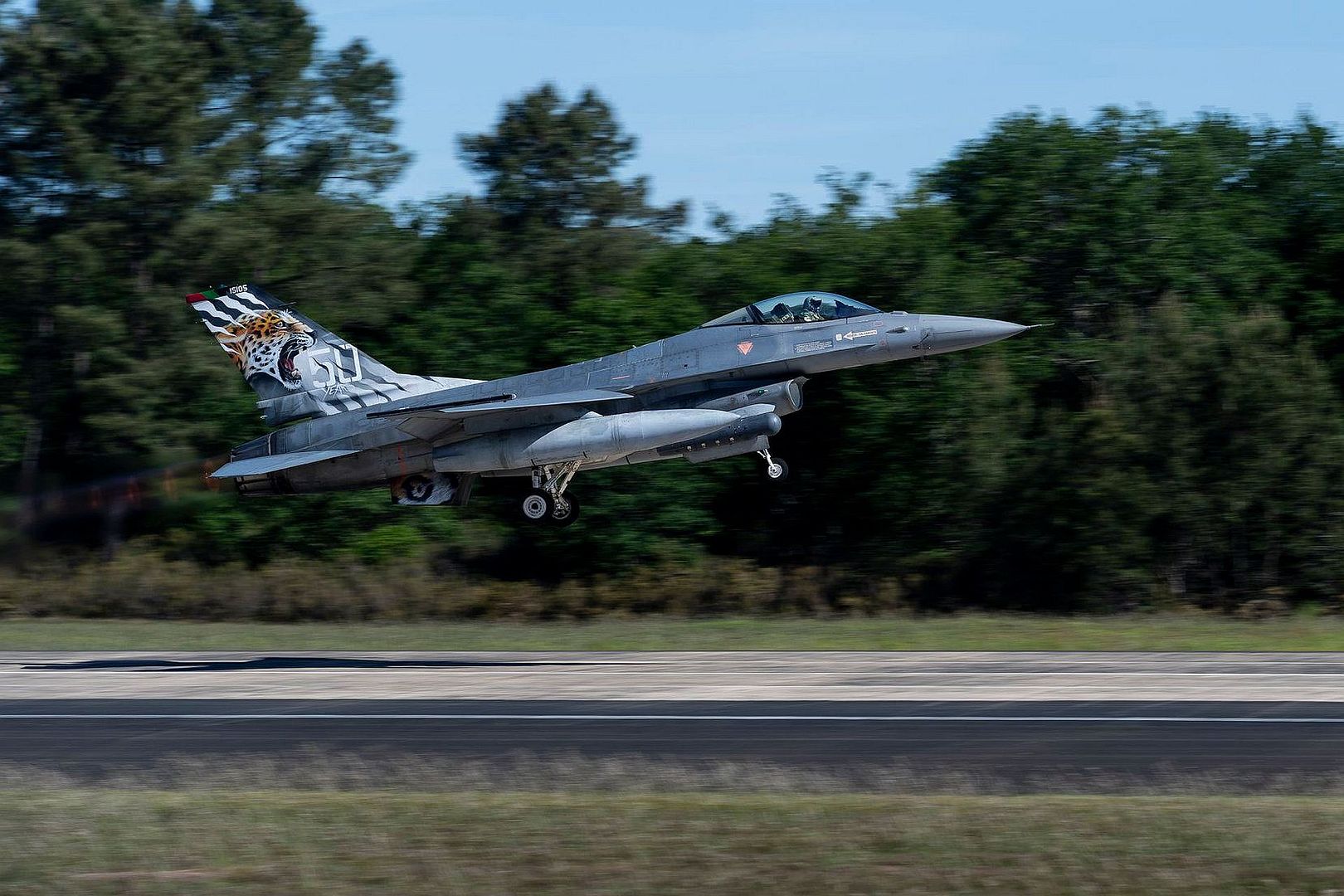
-
 Main AdminAn F/A-18E Super Hornet, assigned to Strike Fighter Squadron (VFA) 14, performs an aerial maneuver alongside the aircraft carrier USS John C. Stennis (CVN 74) during an air power demonstration in the Atlantic Ocean, May 14, 2019. The John C. Stennis has over 1000 family members and friends embarked on a tiger cruise following a deployment to the U.S. 3rd, 5th, 6th, and 7th Fleet areas of responsibility. The John C. Stennis is operating in the U.S. 2nd Fleet in support of naval operations to maintain maritime stability and security in the Atlantic and Arctic in order to ensure access, deter aggression and defend U.S., allied and partner interests. (U.S. Navy photo by Mass Communication Specialist 3rd Class Skyler Okerman)
Main AdminAn F/A-18E Super Hornet, assigned to Strike Fighter Squadron (VFA) 14, performs an aerial maneuver alongside the aircraft carrier USS John C. Stennis (CVN 74) during an air power demonstration in the Atlantic Ocean, May 14, 2019. The John C. Stennis has over 1000 family members and friends embarked on a tiger cruise following a deployment to the U.S. 3rd, 5th, 6th, and 7th Fleet areas of responsibility. The John C. Stennis is operating in the U.S. 2nd Fleet in support of naval operations to maintain maritime stability and security in the Atlantic and Arctic in order to ensure access, deter aggression and defend U.S., allied and partner interests. (U.S. Navy photo by Mass Communication Specialist 3rd Class Skyler Okerman)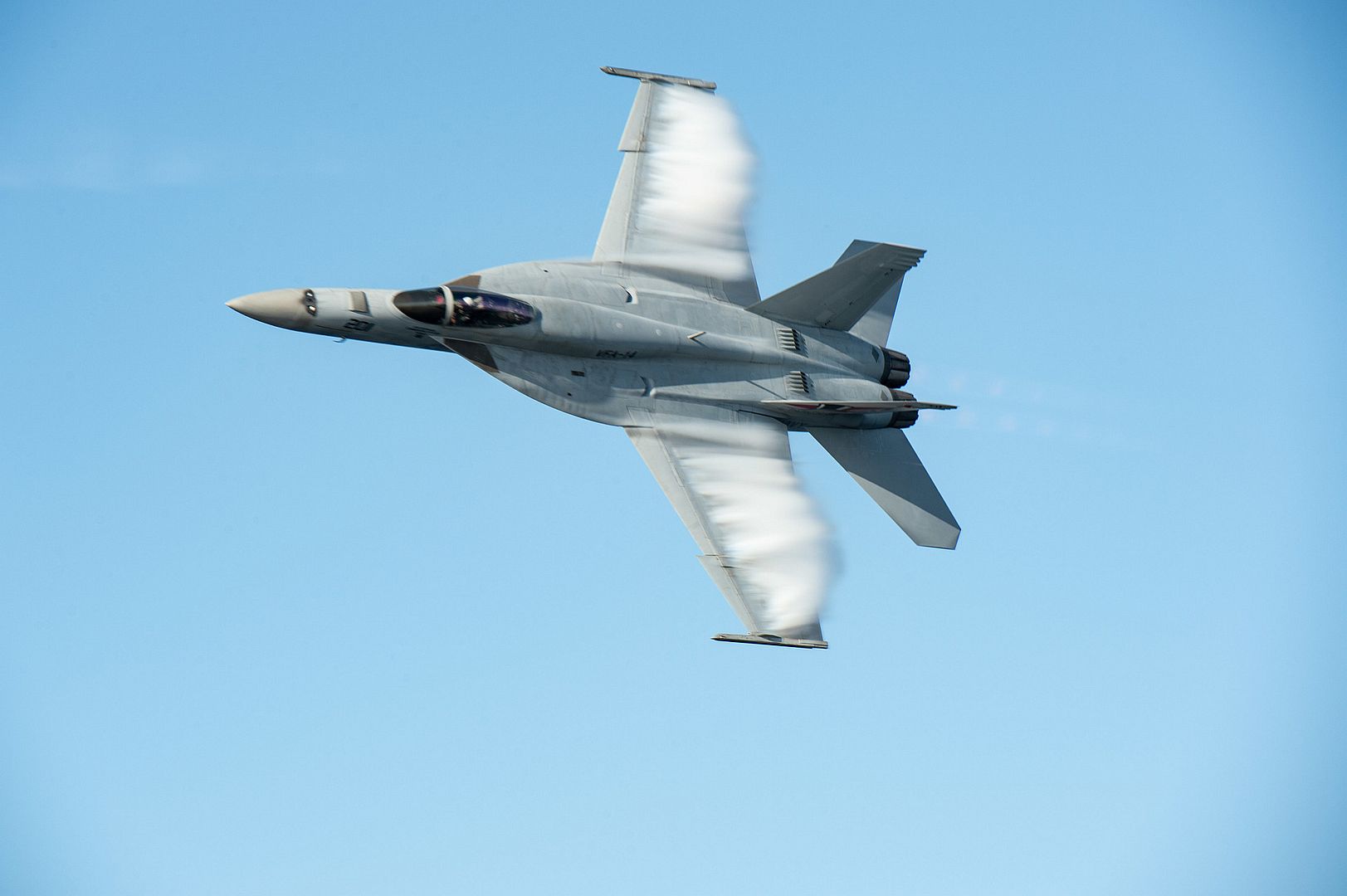
An F/A-18E Super Hornet, assigned to Strike Fighter Squadron (VFA) 14, conducts a high-speed pass alongside the aircraft carrier USS John C. Stennis (CVN 74) during an air power demonstration in the Atlantic Ocean, May 14, 2019. The John C. Stennis has over 1000 family members and friends embarked on a tiger cruise following a deployment to the U.S. 3rd, 5th, 6th, and 7th Fleet areas of responsibility. The John C. Stennis is operating in the U.S. 2nd Fleet in support of naval operations to maintain maritime stability and security in the Atlantic and Arctic in order to ensure access, deter aggression and defend U.S., allied and partner interests. (U.S. Navy photo by Mass Communication Specialist 3rd Class Grant G. Grady)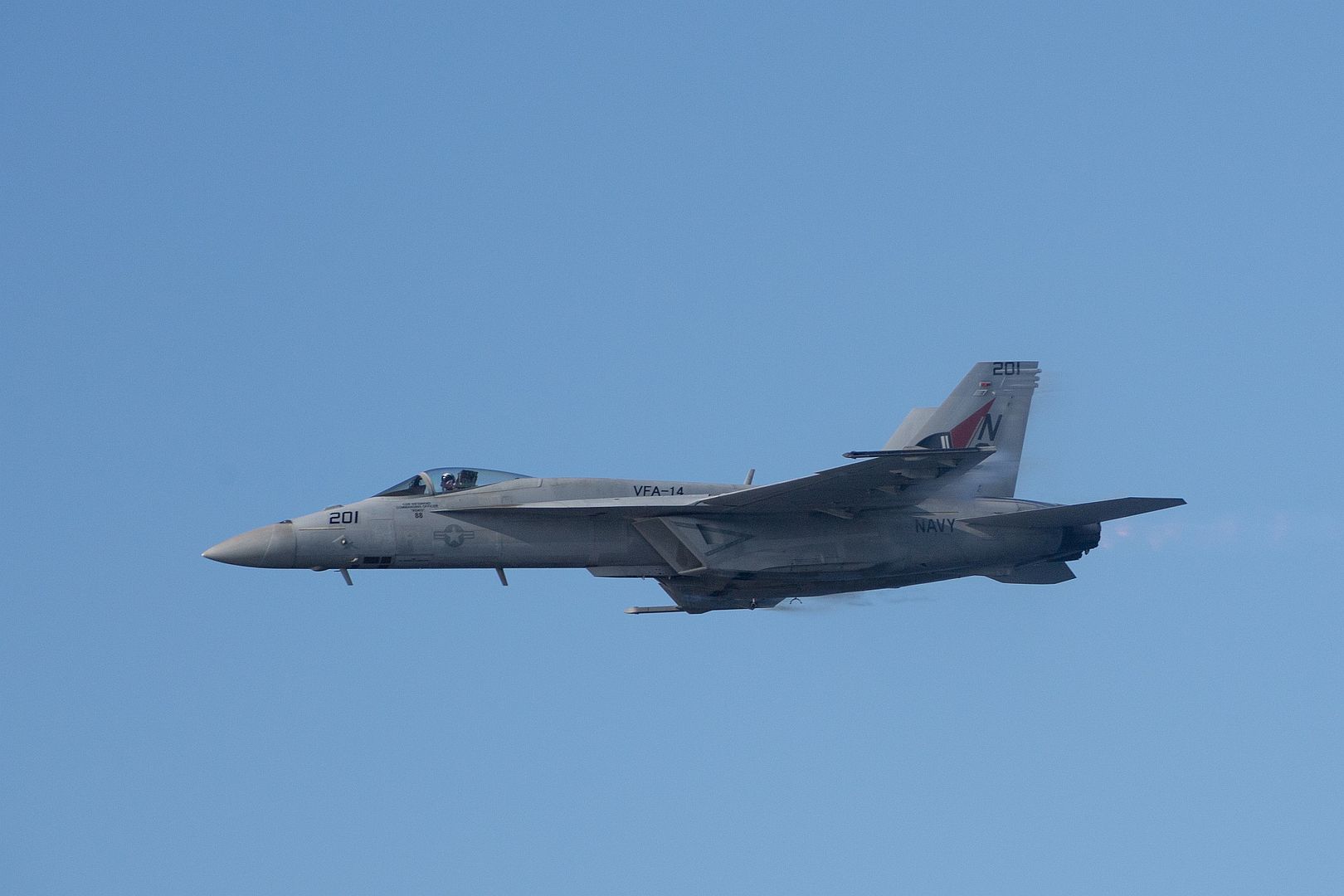
A B-52 Stratofortress, nicknamed "Wise Guy," makes its final approach to Barksdale Air Force Base, Louisiana, May 14, 2019. The bomber was flown out of the 309th Aerospace Maintenance and Regeneration Group, also known as the "Boneyard", where it had been since 2008. (U.S. Air Force photo by Master Sgt. Ted Daigle)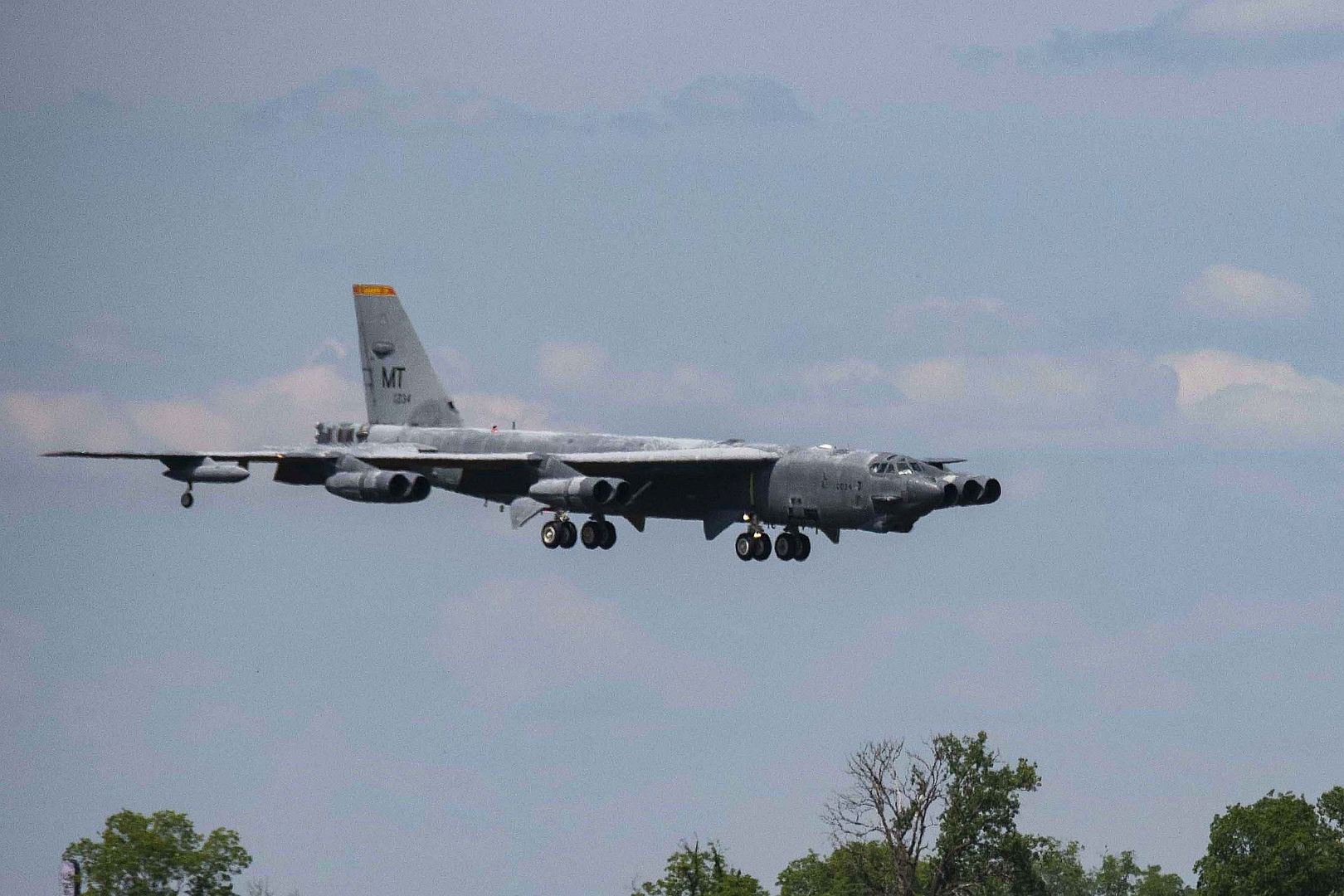
A B-52 Stratofortress, nicknamed "Wise Guy," taxis into Barksdale Air Force Base, Louisiana, May 14, 2019. The jet had been sitting at the 309th Aerospace Maintenance and Regeneration Group at Davis-Monthan AFB, Arizona since 2008. It is being returned to service to replace a B-52 lost during takeoff in 2016. (U.S. Air Force photo by Master Sgt. Ted Daigle)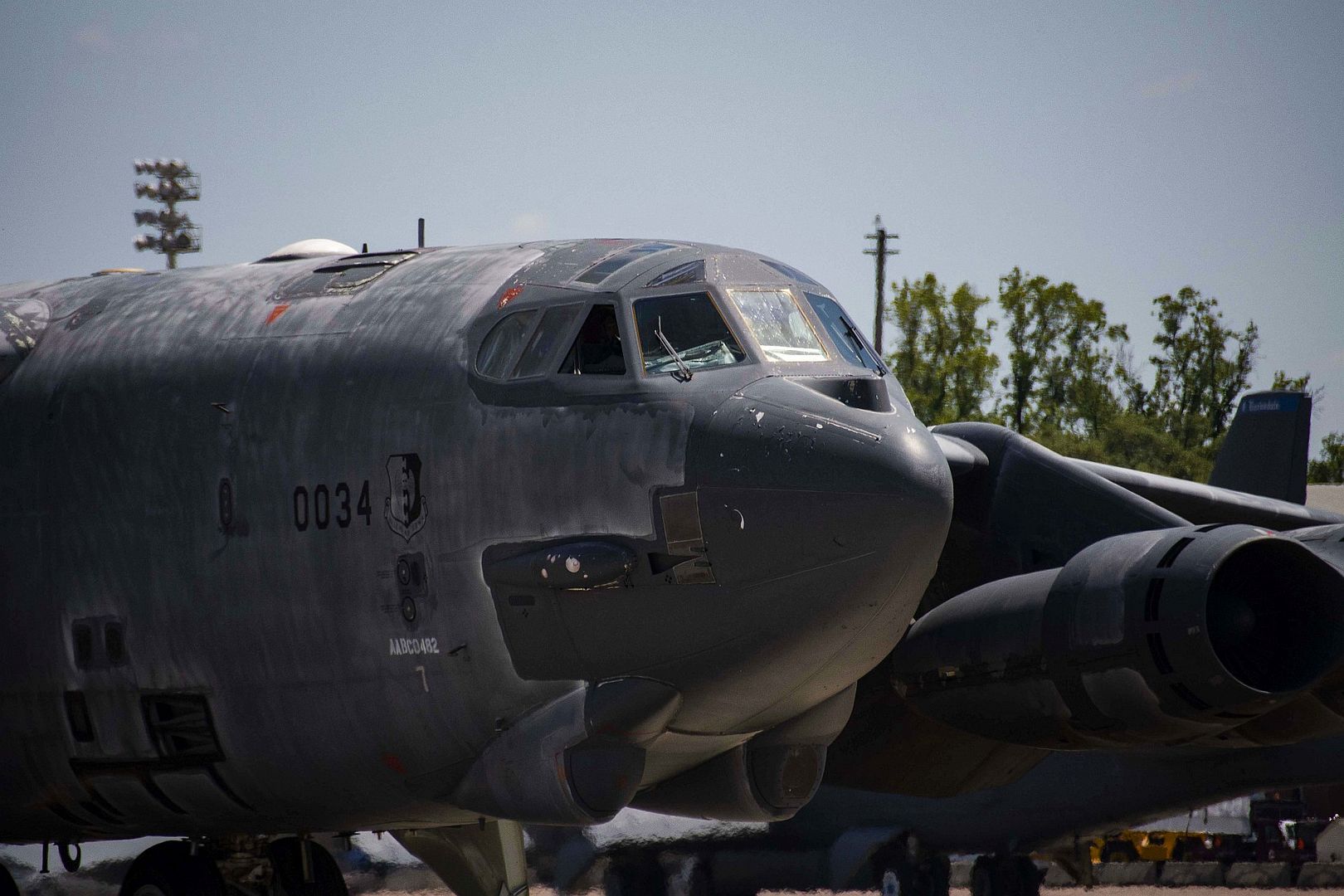
U.S. Air Force Col. Robert Burgess, 307th Operations Group commander, gives a thumbs up after flying a B-52 Stratofortress, nicknamed "Wise Guy," to Barksdale Air Force Base, Louisiana, May 14, 2019. The bomber had been at the 309th Aerospace Maintenance and Regeneration Group at Davis-Monthan AFB, Arizona since 2008. It took a team of Reserve Citizen Airmen and their active duty counterparts four months to prepare "Wise Guy" for flight after its decade long hiatus at AMARG. (U.S. Air Force photo by Master Sgt. Ted Daigle)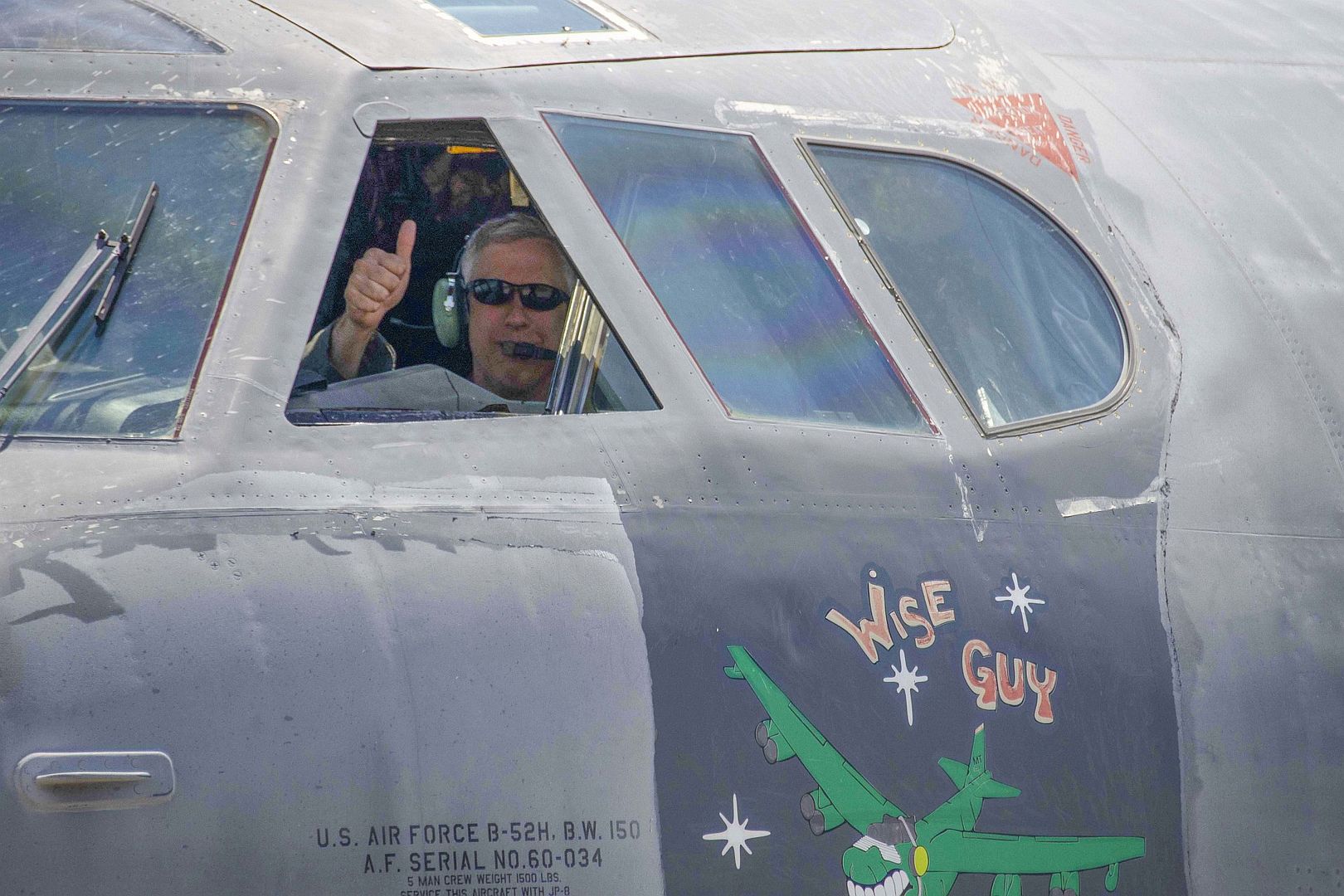
Airbus Corporate Jets (ACJ) is showing an ACJ319 at EBACE1, giving potential customers the opportunity to see for themselves how they can fly in greater comfort and space than in traditional business jets.
The aircraft, which is being shown for the first time at EBACE, is operated by K5 Aviation and is available for VVIP charter. It is certificated for 19 passengers.
?Seeing for yourself what a great travel experience you can have in an Airbus corporate jet really highlights the greater comfort and space on offer, which you can have at a competitive price,? says ACJ President Benoit Defforge.
ACJ is growing its ACJ320 Family with new models, which feature new engines and wingtip-mounted Sharklets to deliver a 15% fuel-saving, enabling nonstop travel to even more of the world in the best cabin in the sky.
The new family comprises an ACJ319neo2 that can fly eight passengers 15 hours or 6,750 nm/12,500 km, and an ACJ320neo that can transport 25 passengers 13 hours or 6,000 nm/11,100 km.
Deliveries of the new models, which have already won 14 orders and commitments, began earlier this year.
Airbus has won around 15,000 firm orders for the whole A320 Family, and over 750 A320neo Family aircraft are already in service with airlines.
Airbus? A320 Family exemplifies features that are now standard throughout its modern family ? such as the enhanced-protection of fly-by-wire controls, cost-saving centralised maintenance and weight-saving carbon fibre.
It is complemented by the widebody ACJ330neo and ACJ350 XWB Families, which deliver even more capacity and nonstop to the world range.
Airbus corporate jets are supported around the world, around the clock, by a network of advice, spares and training centres serving some 11,000 aircraft in service today, as well as services tailored to the particular needs of business jet operators.
Some 200 Airbus corporate jets are in service worldwide, flying on every continent, including Antarctica.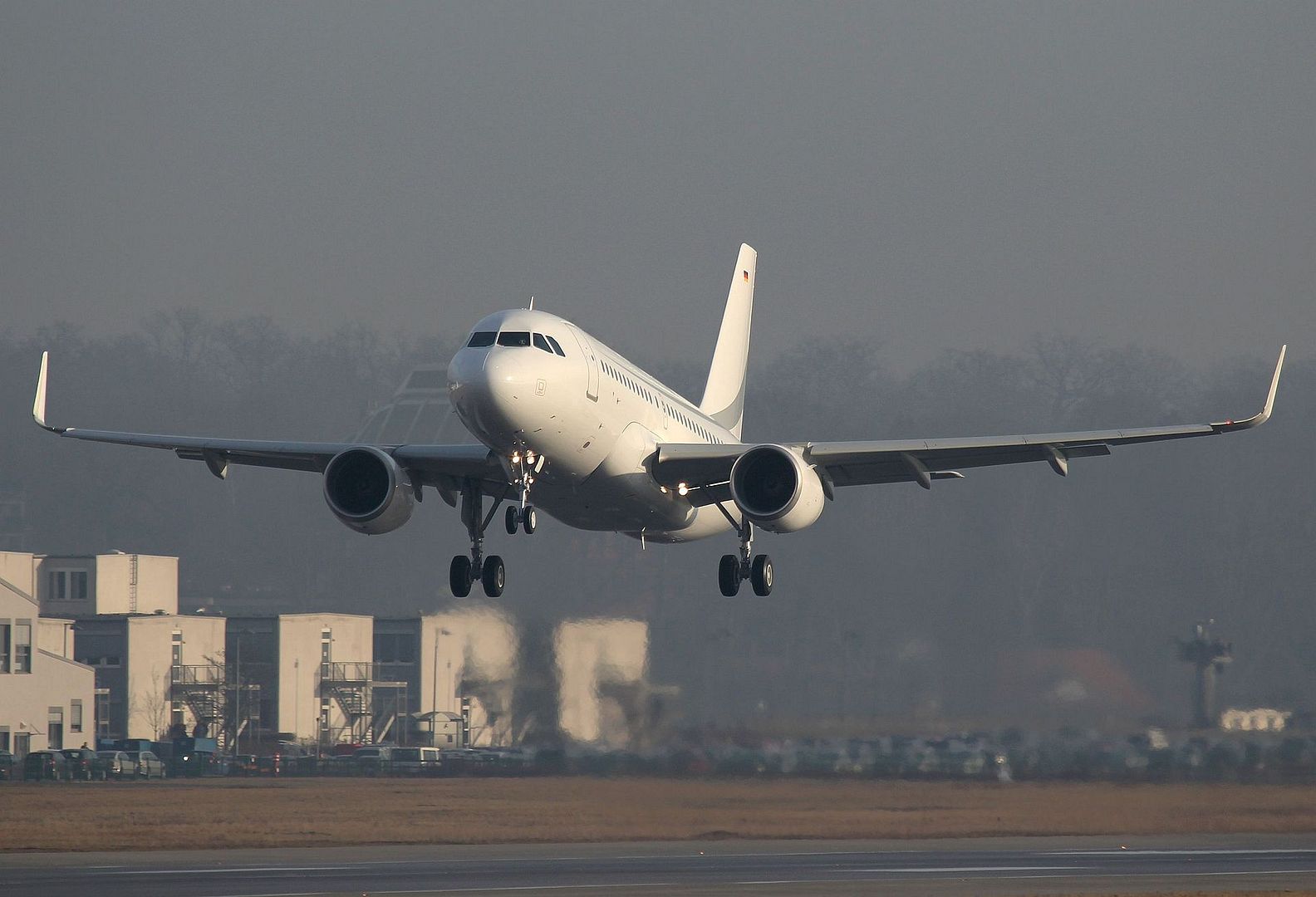
-
 Main AdminCAPE GIRARDEAU, Mo. (May 15, 2019) Lt. Cary Rickoff, narrator and pilot assigned to the U.S. Navy flight demonstration squadron, the Blue Angels, takes off during a key influencer and media rider demonstration at the Cape Girardeau Regional Airport, Mo., prior to the 2019 Cape Girardeau Regional Air Show, May 15, 2019. The team is scheduled to conduct 61 flight demonstrations at 32 locations across the country to showcase the pride and professionalism of the U.S. Navy and Marine Corps to the American public in 2019. (U.S. Navy photo by Mass Communication Specialist 1st Class Chris Williamson/Released)
Main AdminCAPE GIRARDEAU, Mo. (May 15, 2019) Lt. Cary Rickoff, narrator and pilot assigned to the U.S. Navy flight demonstration squadron, the Blue Angels, takes off during a key influencer and media rider demonstration at the Cape Girardeau Regional Airport, Mo., prior to the 2019 Cape Girardeau Regional Air Show, May 15, 2019. The team is scheduled to conduct 61 flight demonstrations at 32 locations across the country to showcase the pride and professionalism of the U.S. Navy and Marine Corps to the American public in 2019. (U.S. Navy photo by Mass Communication Specialist 1st Class Chris Williamson/Released)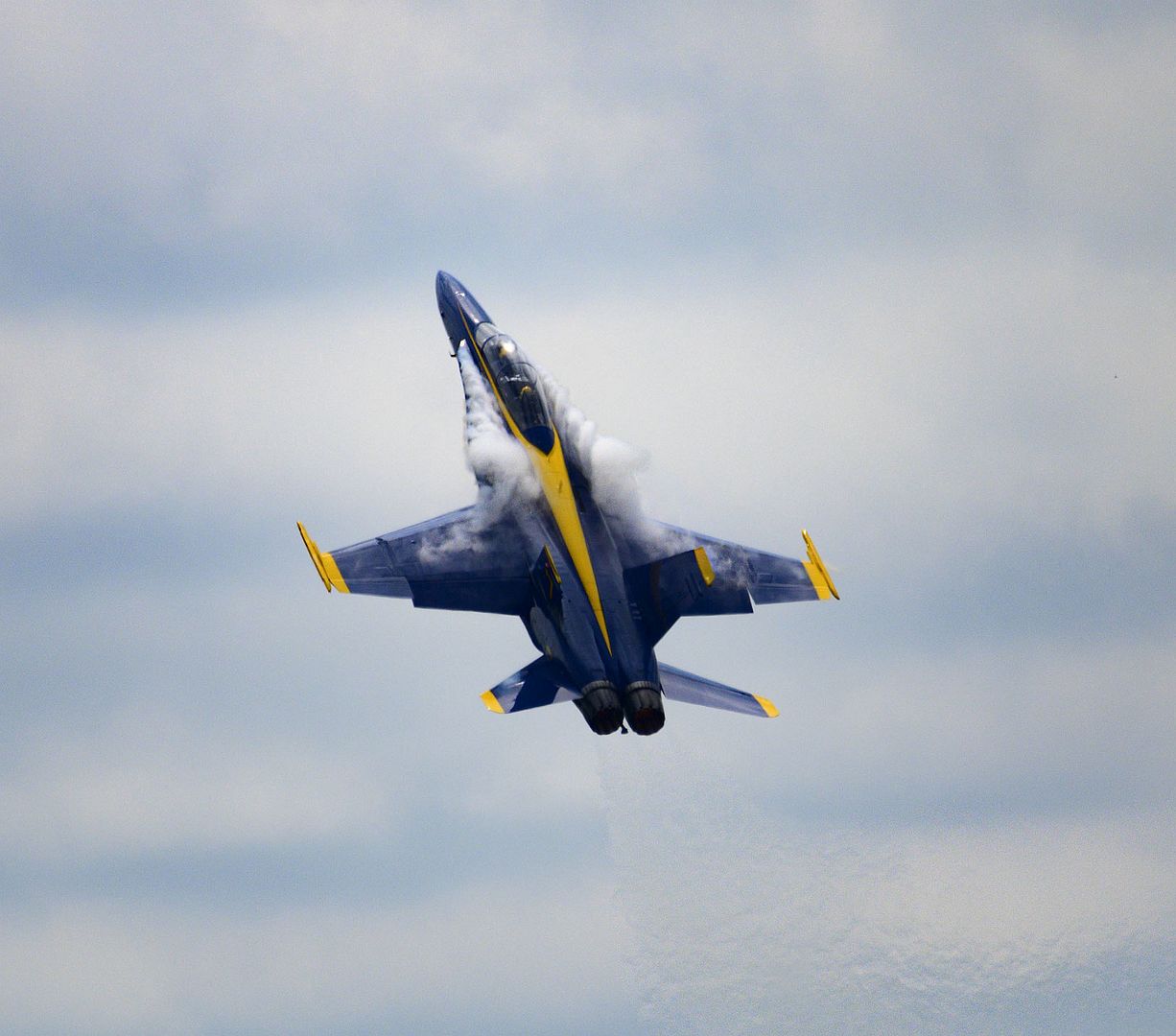
A U.S. Air Force F-15C Eagle flies over Alaska during exercise Northern Edge 19, at Joint Base Elmendorf-Richardson, Alaska, May 14, 2019. Northern Edge provides effective, capabilities-centered joint forces, ready for deployment world-wide and enables real-world proficiency in detection, identification and tracking of units at sea, in the air and on land and respond to multiple crises in the Indo-Pacific region. (U.S. Air Force photo by Master Sgt. Nathan Lipscomb)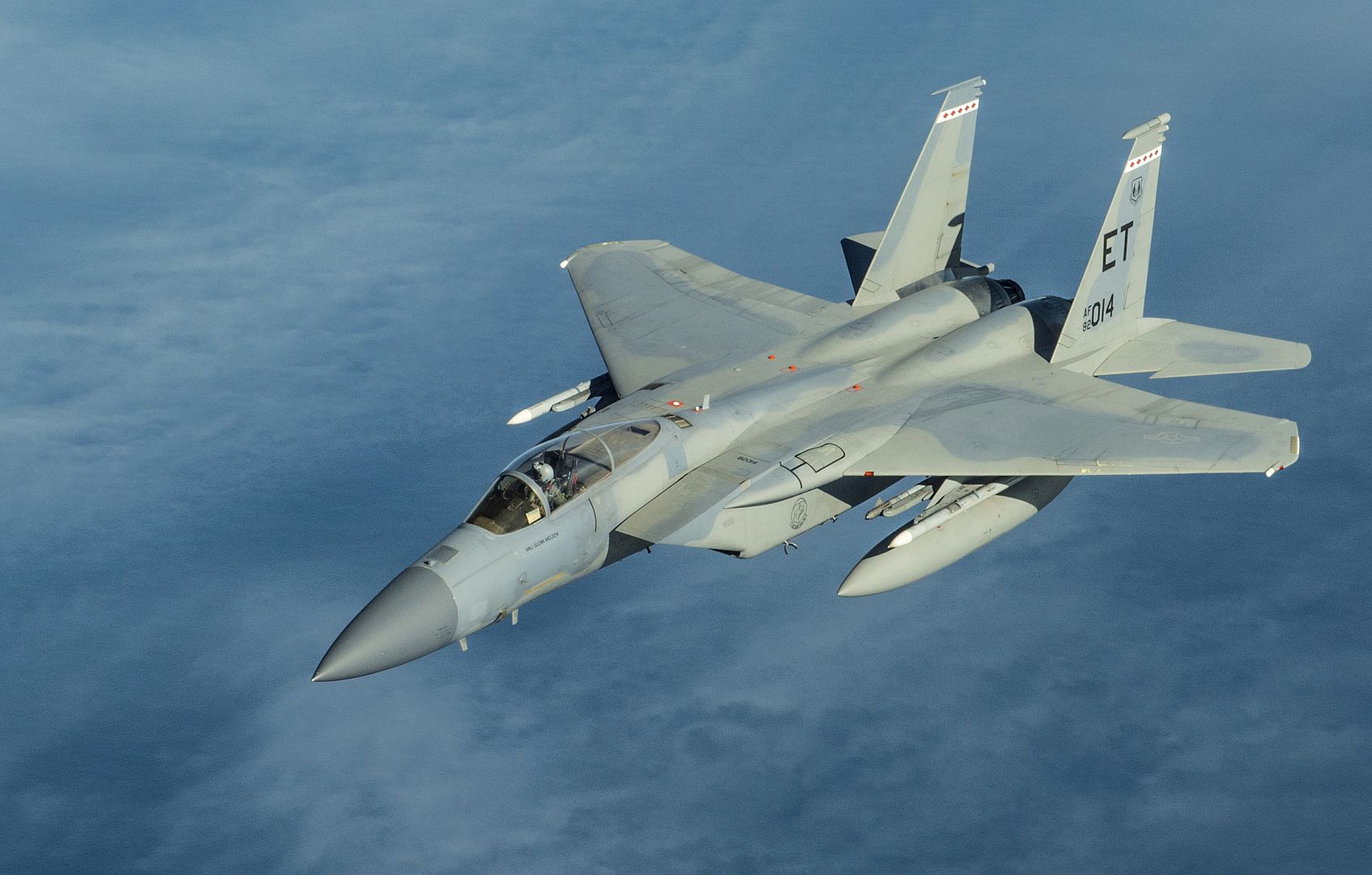
Airmen from the 6th and 9th Air Refueling Squadrons, Travis Air Force Base, Calif., use a U.S. Air Force KC-10 Extender to refuel a U.S Air Force F-15C Eagle, during exercise Northern Edge, May 14, 2019, at Joint Base Elmendorf-Richardson, Alaska. Units participating in Northern Edge have access to the Joint Pacific Alaska Range Complex, which is one of the largest training ranges in the world, with approximately 65,000 square miles of available airspace; 2,500 square miles of land and 42,000 square nautical miles of surface, subsurfaces and overlying airspace. (U.S. Air Force photo by Master Sgt. Nathan Lipscomb)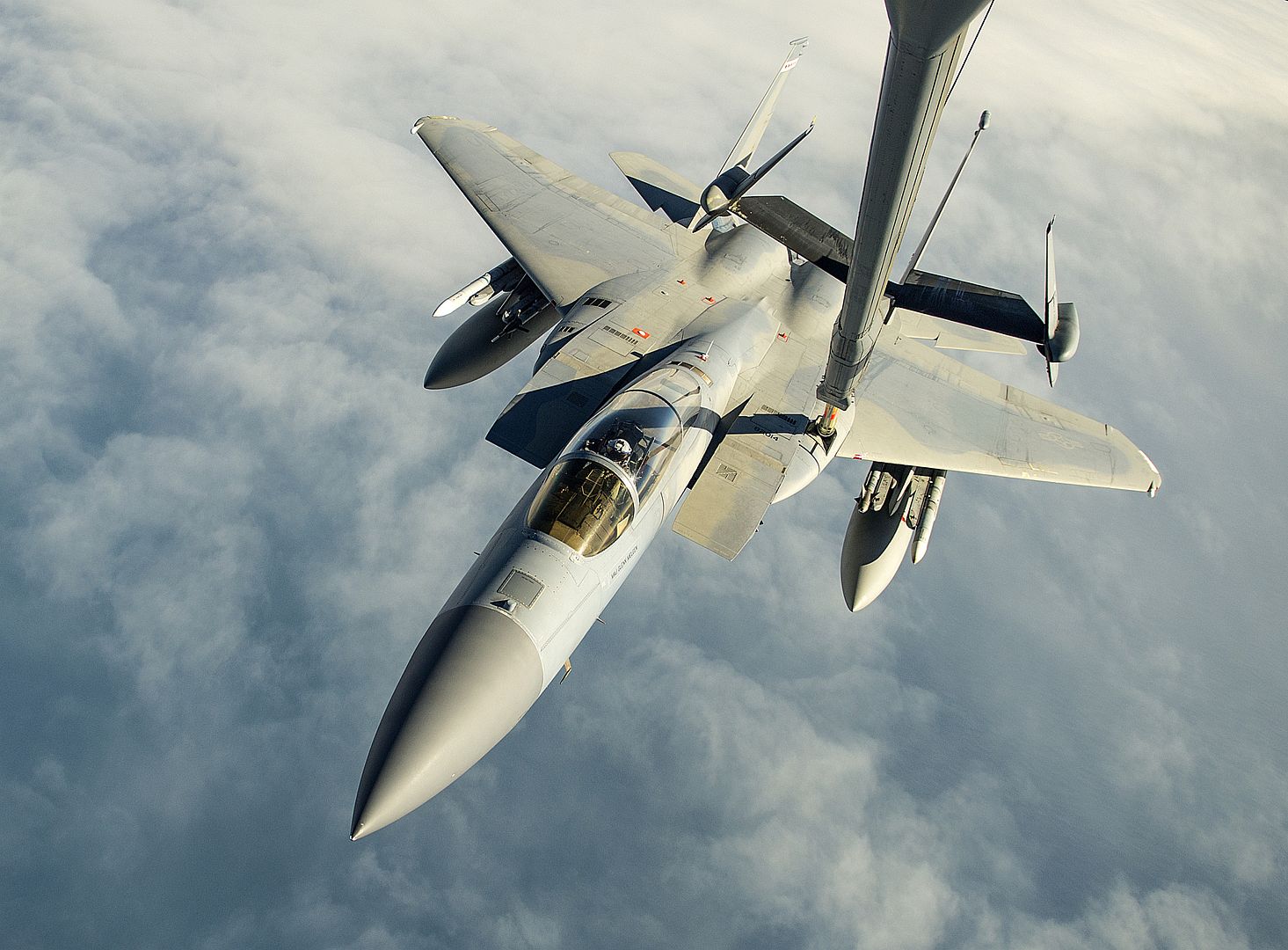
An F-16C Fighting Falcon assigned to the 93rd Fighter Squadron, Homestead Air Reserve Base, Fla., takes off during a Flying Training Deployment at Royal Air Force Lakenheath, England, May 16, 2019. The intent of the FTD is to sharpen the Air Force?s combat readiness and ability to operate from a deployed location, and to strengthen strategic partnerships. (U.S. Air Force photo by Airman 1st Class Madeline Herzog)
A KC-10 Extender with the 305th Air Mobility Wing, Joint Base McGuire-Dix-Lakehurst, N.J., takes off from the flight line May 15, 2019, at Dover Air Force Base, Del. The aircraft can transport nearly 170,000 pounds of cargo and up to 75 people a distance of about 4,400 miles. (U.S. Air Force photo by Senior Airman Christopher Quail)
A C-5M Super Galaxy takes off from the flight line May 15, 2019, at Dover Air Force Base, Del. The aircraft is the largest in the Air Force inventory and can carry a cargo load of 281,001 pounds. (U.S. Air Force photo by Senior Airman Christopher Quail)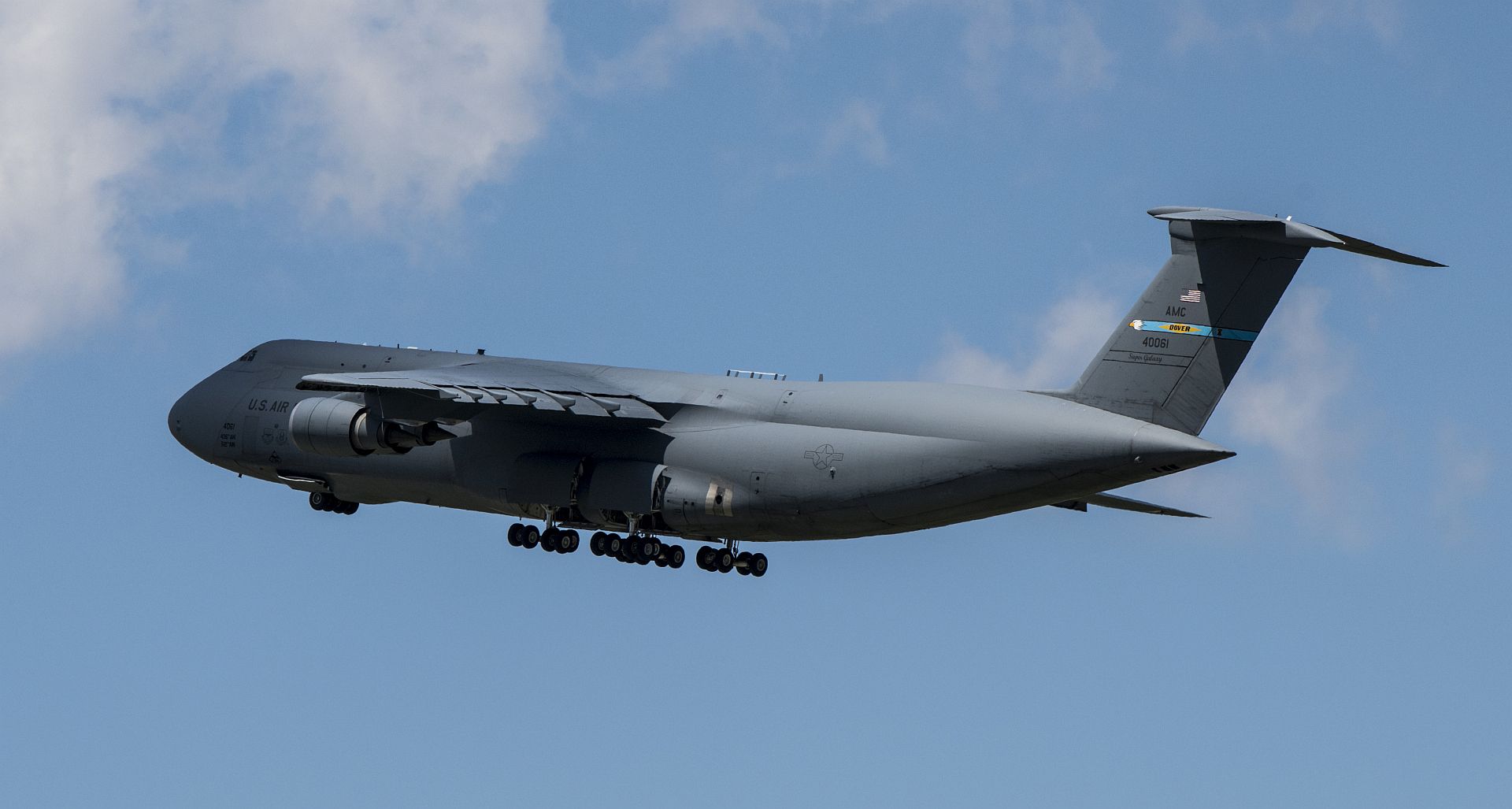
An F-22 Raptor takes flight during the Combat Archer 19-8 exercise at Tyndall Air Force Base, Florida, May 14, 2019. Members from the 494th Fighter Squadron, the 67th Fighter Squadron and the 94th Fighter Squadron, employed variations of live air-intercept missiles against unmanned aerial targets that were remotely operated by the 82nd Aerial Target Squadron. (U.S. Air Force photo by Airman 1st Class Monica Roybal)
May 16, 2019 Montr?al Bombardier Inc., Business Aircraft, Press Release
Bombardier today announced that its Global 7500 aircraft, the world?s largest and longest range business jet, has demonstrated its unmatched performance capabilities with the first ever flight from London City Airport to Los Angeles, CA.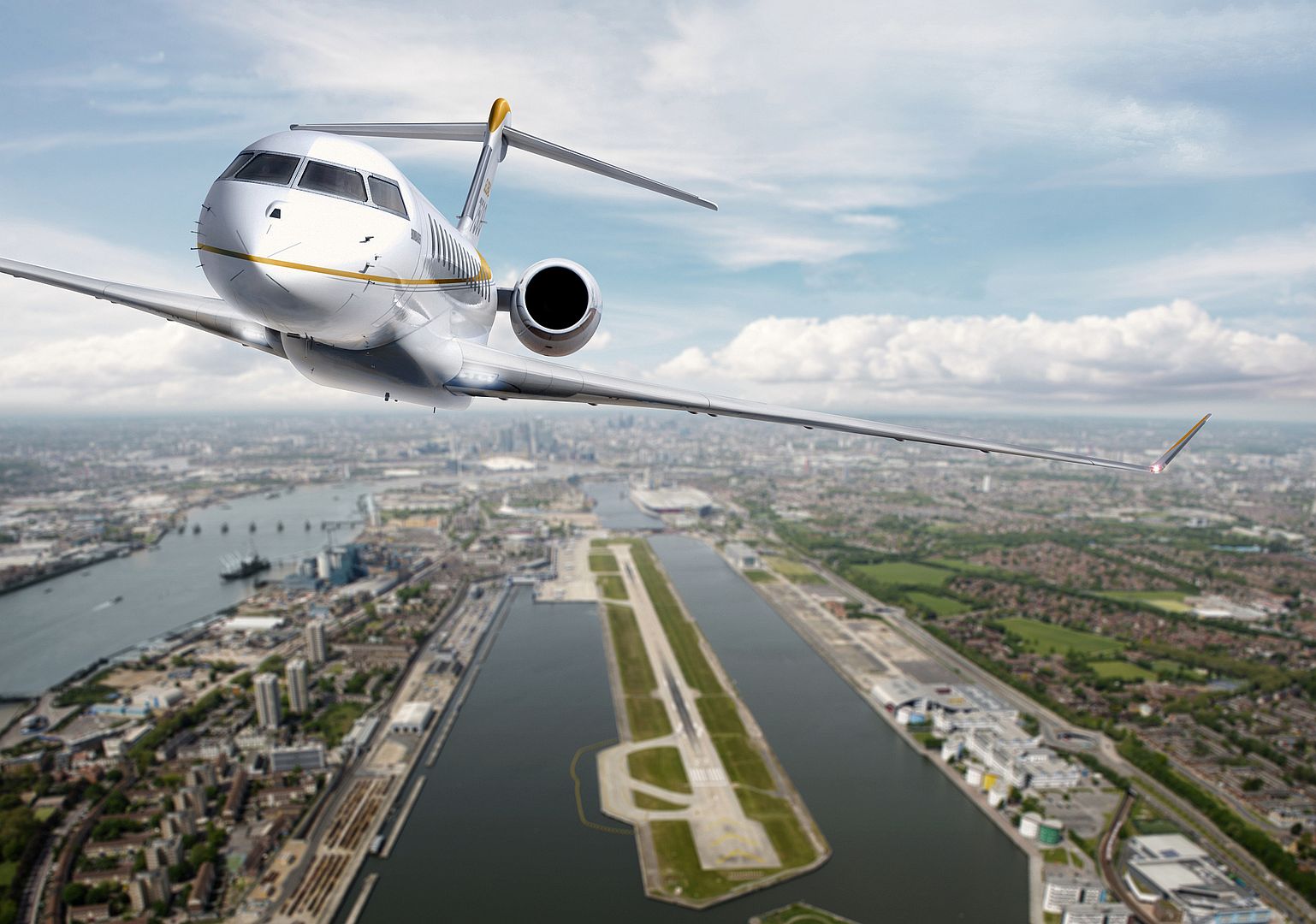
The aircraft flew non-stop from London City Airport (LCY), one of the most notable airports requiring steep approach capabilities, to Van Nuys, CA, one of the most popular business aviation airports serving the Los Angeles area. The flight was carried out by a flight test vehicle (FTV5) called ?The Masterpiece,? in London City to complete the Global 7500 aircraft?s steep approach certification flight test campaign for Transport Canada.
The Masterpiece was configured with the equivalent weight of a fully fitted interior, including a stateroom and shower, and 2,400 lbs of additional payload, representing about 11 passengers and their baggage.
As part of its steep approach certification flight test campaign, the aircraft also performed several takeoffs and landings at London City Airport to demonstrate this operational capability. With its tremendous performance and flexibility, the Global 7500 aircraft gives passengers direct access to any location in the U.S. from the airfield deep in the heart of one of the world?s greatest financial centres.
?The Global 7500 aircraft?s combination of unrivalled performance, exquisite cabin experience and size simply cannot be matched,? said Peter Likoray, Senior Vice President, Worldwide Sales and Marketing, Bombardier Business Aircraft. ?This demonstration continues to cement the Global 7500 jet as the industry leader, showcasing once again to customers the real-world capabilities of this revolutionary aircraft that can deliver uncompromising value to customers under any conditions, at any time, without the need for tailwinds.?
?Welcoming the Bombardier Global 7500 aircraft to London City Airport for its flight test campaign is a crucial milestone towards certification and subsequent business jet operations at London?s most central airport,? said Gary Hodgetts, Director of Operations at London City Airport. ?The flight completed by the Global 7500 FTV on May 11th is the longest flight ever out of London City and simply demonstrates the exceptional performance of the aircraft.?
The Global 7500 aircraft is the largest business jet with short-field performance and steep approach capabilities able to operate out of London City Airport and to connect any city in the continental U.S., Africa or the Middle East*. Its long-range performance can go even further traveling eastward, reaching most major cities in Asia.
This latest mission comes only weeks after the aircraft set back-to-back city-pair speed records for the fastest ever business jet flights between New York and London, and between Los Angeles and New York. Prior to that, the Global 7500 aircraft also completed an unprecedented long-range mission from Singapore to Tucson, Arizona, departing as planned during its busy world-tour schedule?without the need to linger at the airfield for days on end, waiting for exponentially stronger tailwinds, as some smaller aircraft do.
Winner of the 2019 Aviation Week Grand Laureate Award and a Red Dot award for design, the Global 7500 jet offers Bombardier?s signature smooth ride and a spaciousness that is unique among business jets. Featuring a full-size kitchen and four true living spaces, the Global 7500 aircraft sets the benchmark for the most exceptional cabin interior. The aircraft offers the most innovative features such as the recently unveiled Soleil lighting system, the industry?s most advanced cabin lighting technology. Designed and developed exclusively for the Global 7500 aircraft, the innovative Soleil lighting system is aviation?s first circadian rhythm-based cabin lighting technology fully integrated with the Flight Management System, and it introduces the revolutionary Dynamic Daylight Simulation feature, which can help combat jet lag. The Global 7500 business jet also offers the patented Nuage seat, meticulously designed for maximum comfort, which introduces an all-new, ergonomically-perfected deep recline position ? unavailable on any other business aircraft.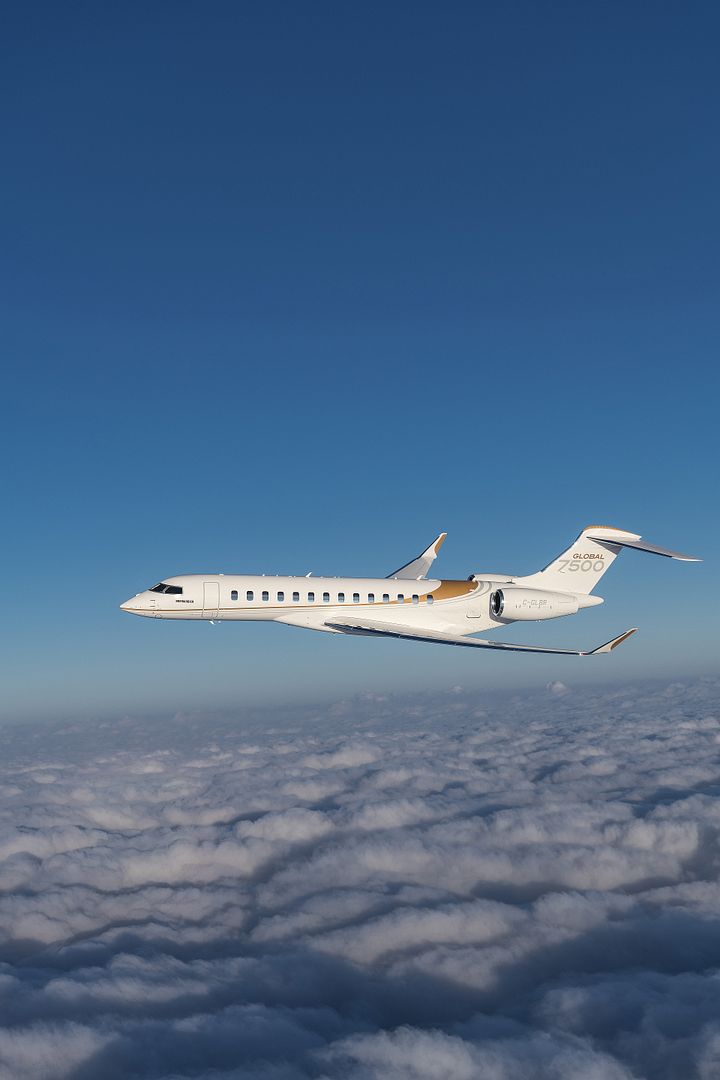
Post a reply
- Go to Previous topic
- Go to Next topic
- Go to Welcome
- Go to Introduce Yourself
- Go to General Discussion
- Go to Screenshots, Images and Videos
- Go to Off topic
- Go to Works in Progress
- Go to Skinning Tips / Tutorials
- Go to Skin Requests
- Go to IJAAF Library
- Go to Luftwaffe Library
- Go to RAF Library
- Go to USAAF / USN Library
- Go to Misc Library
- Go to The Ops Room
- Go to Made in Germany
- Go to Campaigns and Missions
- Go to Works in Progress
- Go to Juri's Air-Raid Shelter
- Go to Campaigns and Missions
- Go to Works in Progress
- Go to Skinpacks
- Go to External Projects Discussion
- Go to Books & Resources
